September 20, 2020
Martha O'Kennon
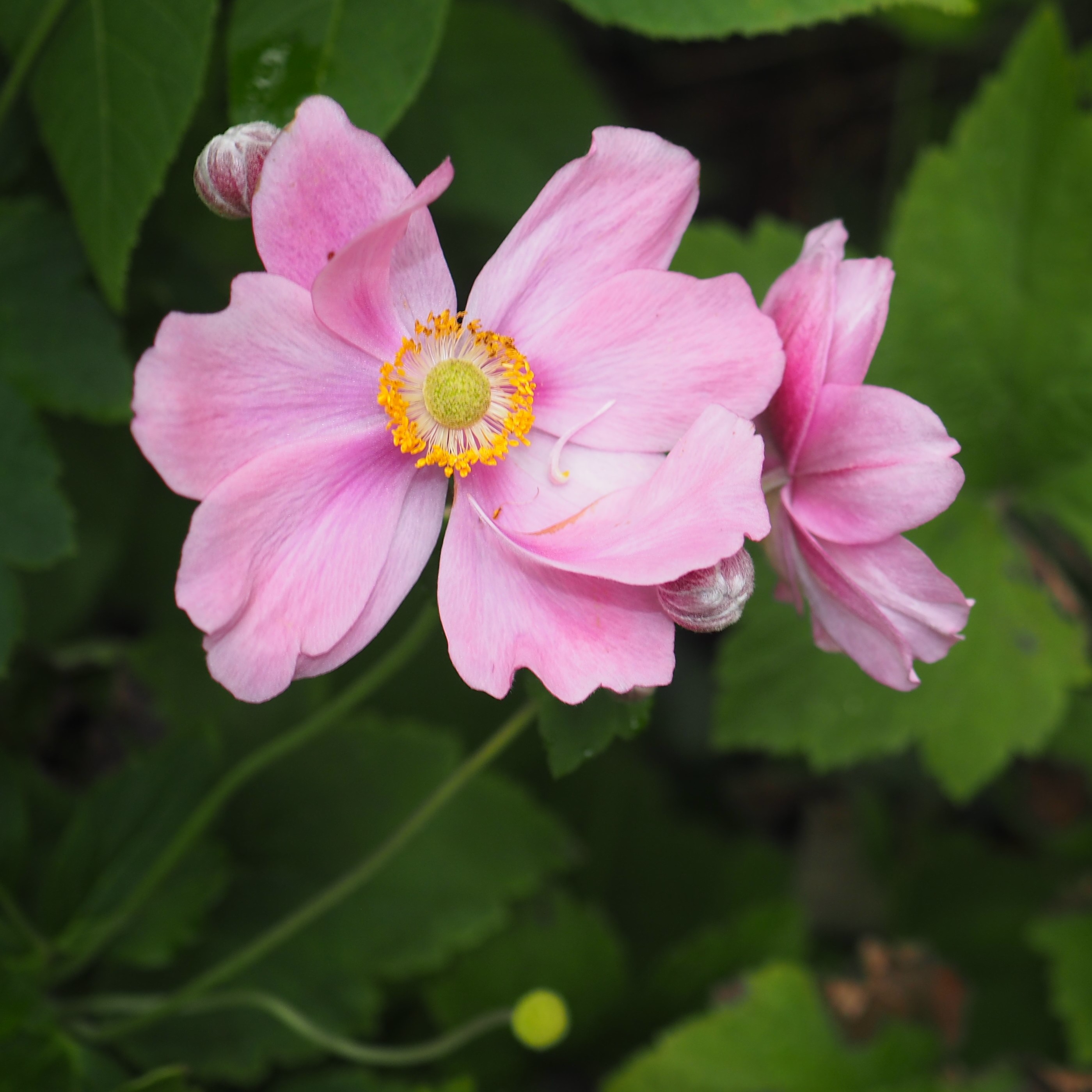
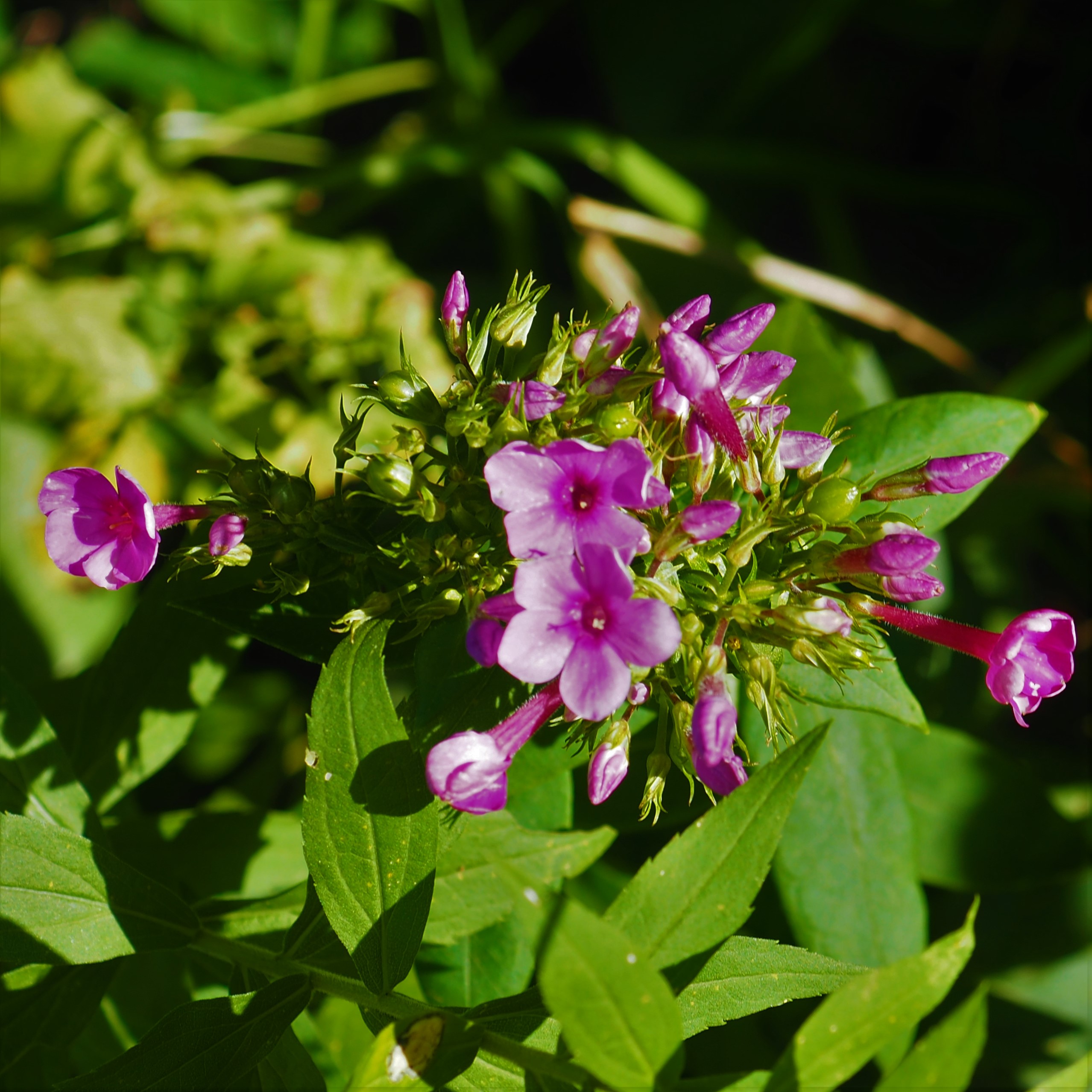
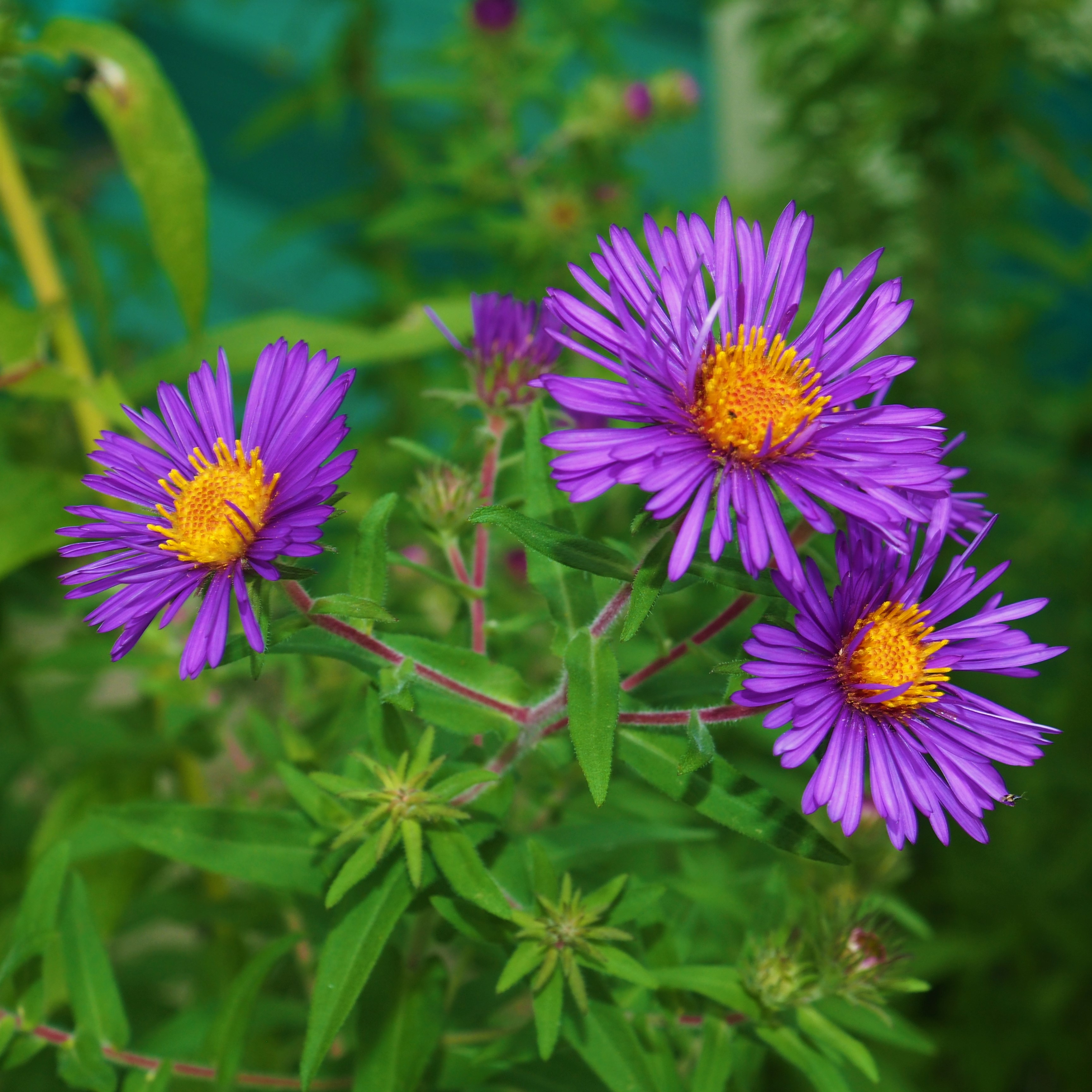
The Japanese Anemones are peaking - they are such interesting subjects for the camera - every pose is special. And the Phlox (the store-boughten ones as we used to say) are having a Rebloom! The Asters are coming into their own, but the main show is yet to start. More to look forward to! Later I'll show you all the colors! It has been cool. The past few days have been sweatshirt weather.
Remember that there is information in the name of the file for each image. You can see it by mousing over the image - look at the lower left of the screen. Or you can click on the image to get to the (usually) larger image. Then the info is displayed in the address line above. Sometimes the second click will actually display a different view of the original image.
Since the Ants were in the doldrums for the past week or two, they decided to make up for it - in spades! A couple of days ago I was heading next-door and got stopped in my tracks at the corner where the sidewalk turns east into the neighbors' sidewalk - by a huge swarm of Immigrant Pavement Ants. I don't know where they are supposed to have immigrated from but they do love to live near the pavement.
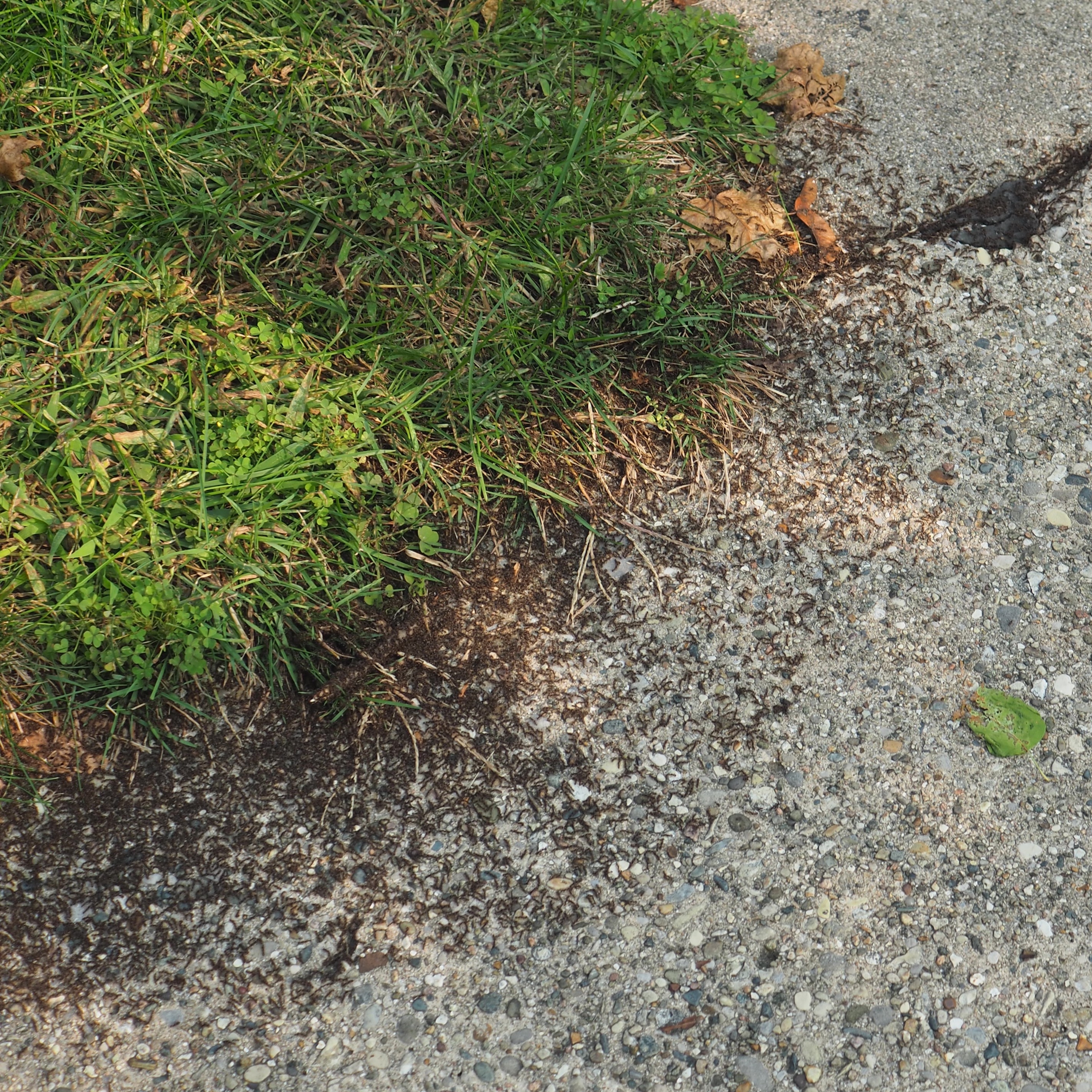
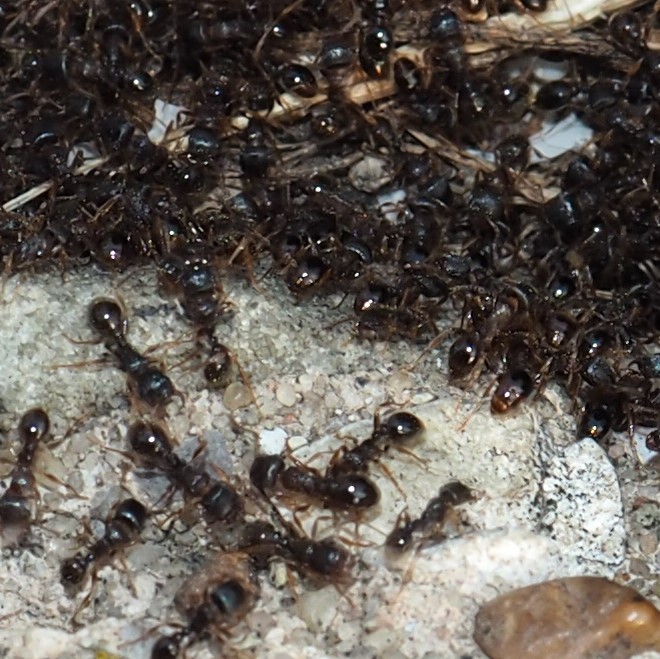
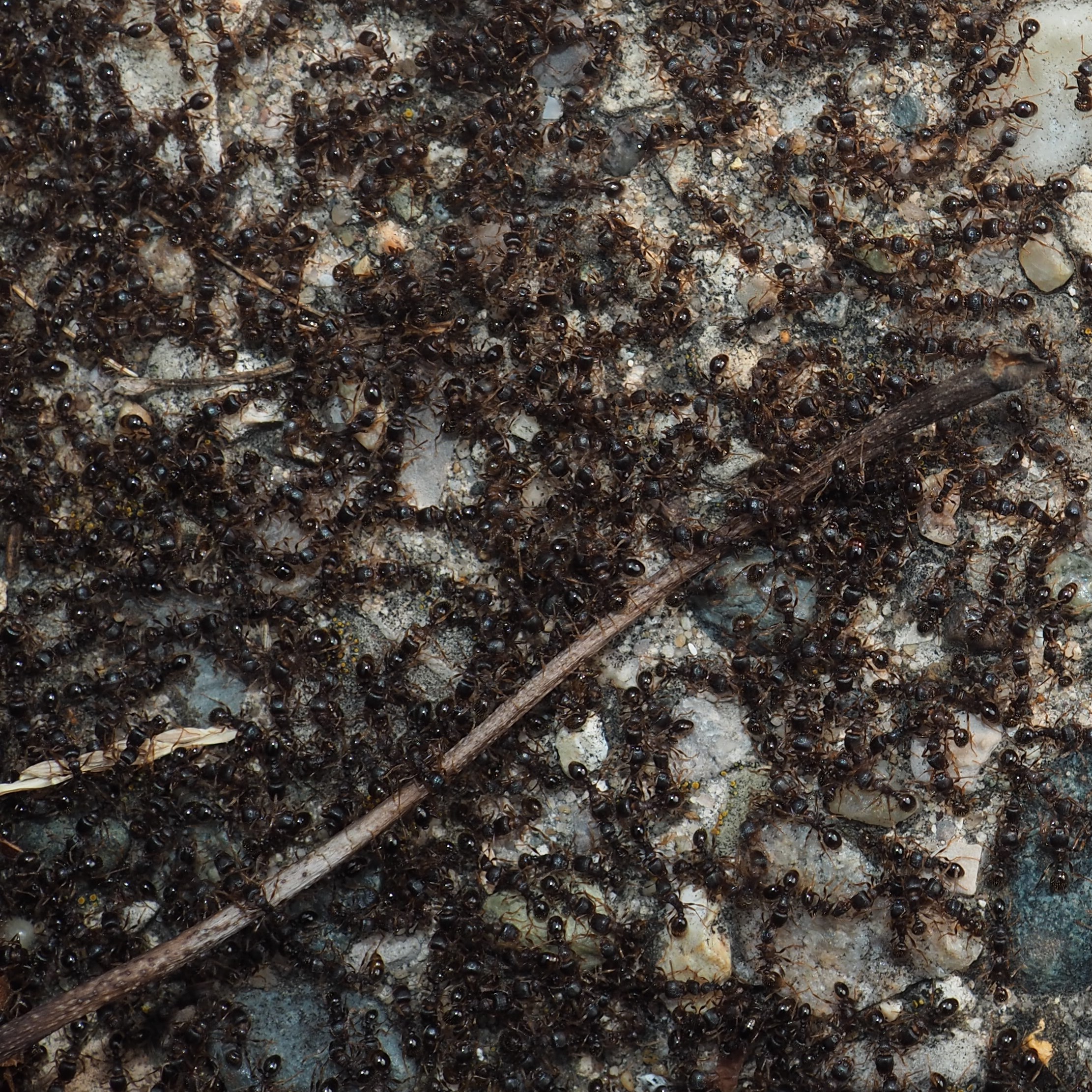
Here they come swarming! I did look and look to see if there was a Queen, but I didn't see one.
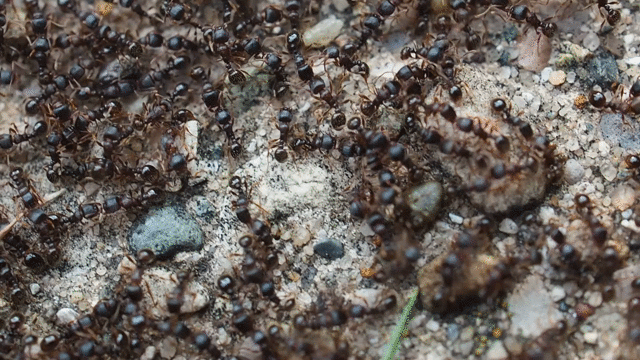
So when this winged Ant appeared on the shop siding in back of my house, I thought maybe she was the Queen from the Immigrant Pavement Ants. But she was identified as a Pennsylvania Ponera. The third picture is of a new Ant that was running about on top of the garbage can, and has the distinguished title of ant Fusca-group Field Ants Complex Formica. This "complex" is part of a new naming system for Plants and Animals, and indicates (I think) that something may be on its way to becoming a new species, but the relationships are still fuzzy.
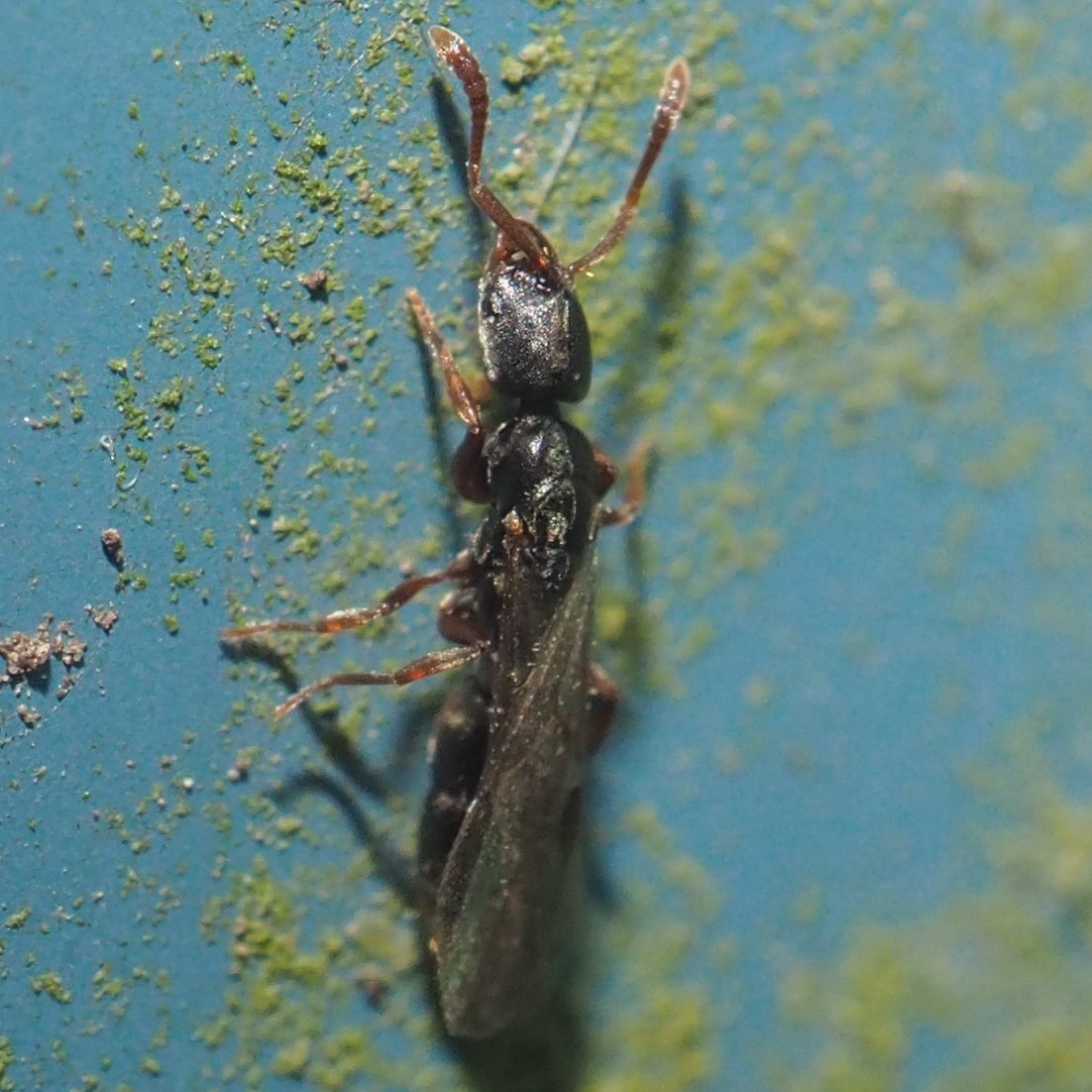
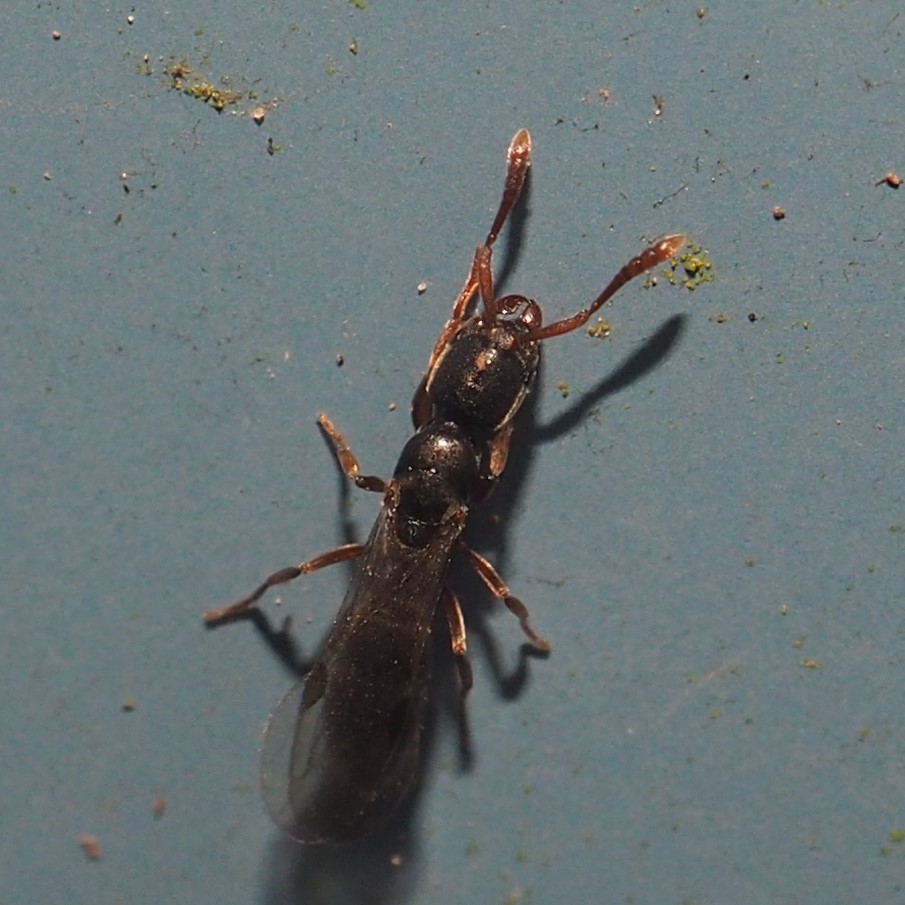
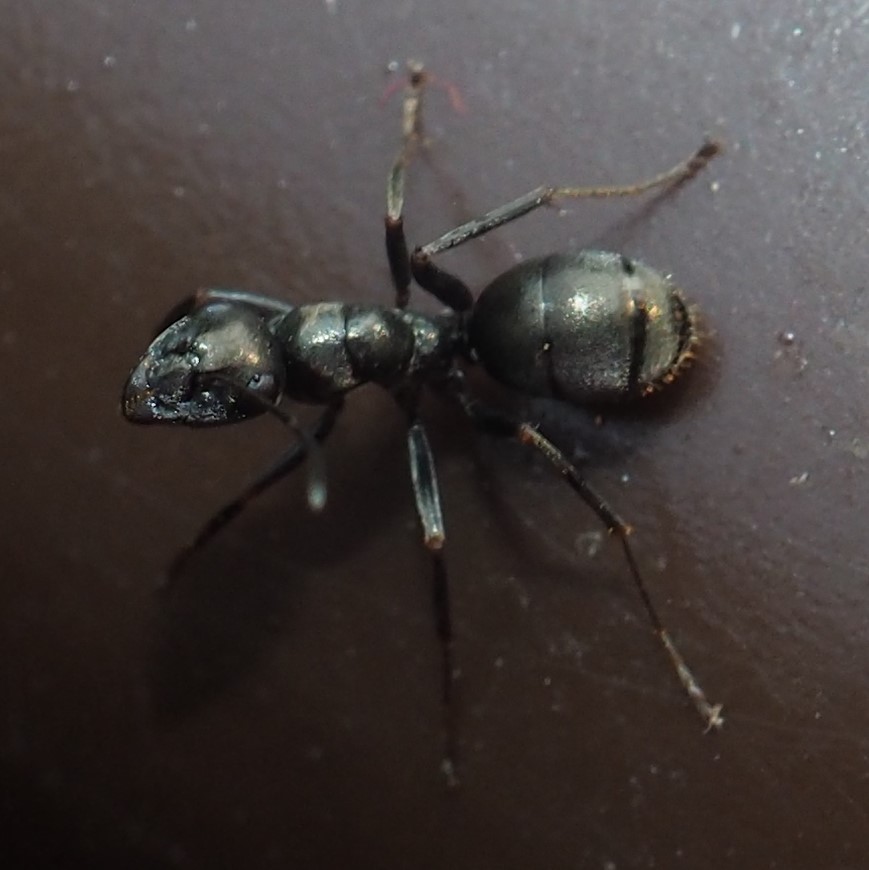
Otherwise, we still had our favorite, most like family, Ants. The Eastern Black Carpenters are back reigning over the Oak Galls. The Smaller Carpenter Ants (picture 2) and the Small Honey Ant (picture 3) are still the rulers of the Wall. I don't know what the Small Honey has stuck to its butt. Sorry!
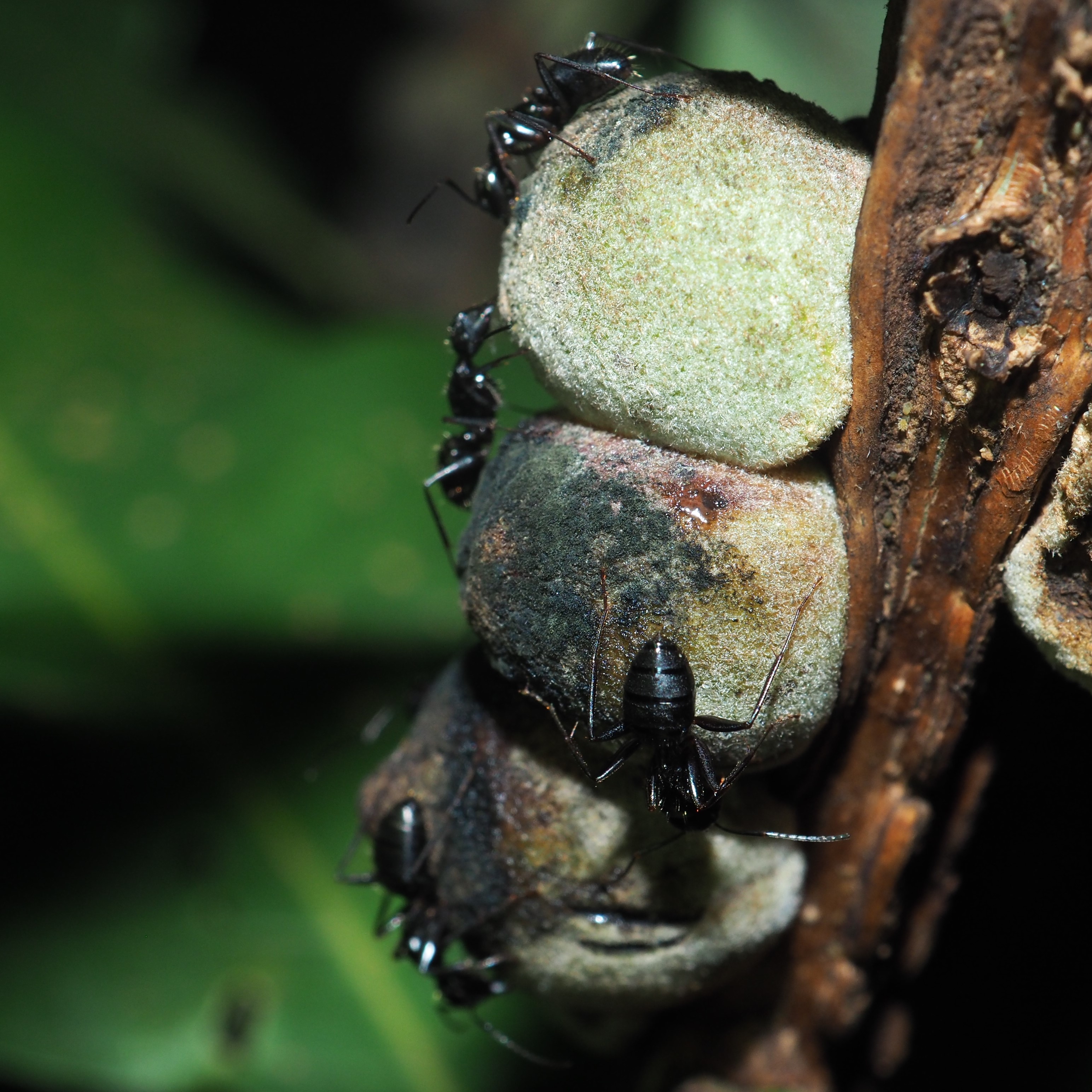
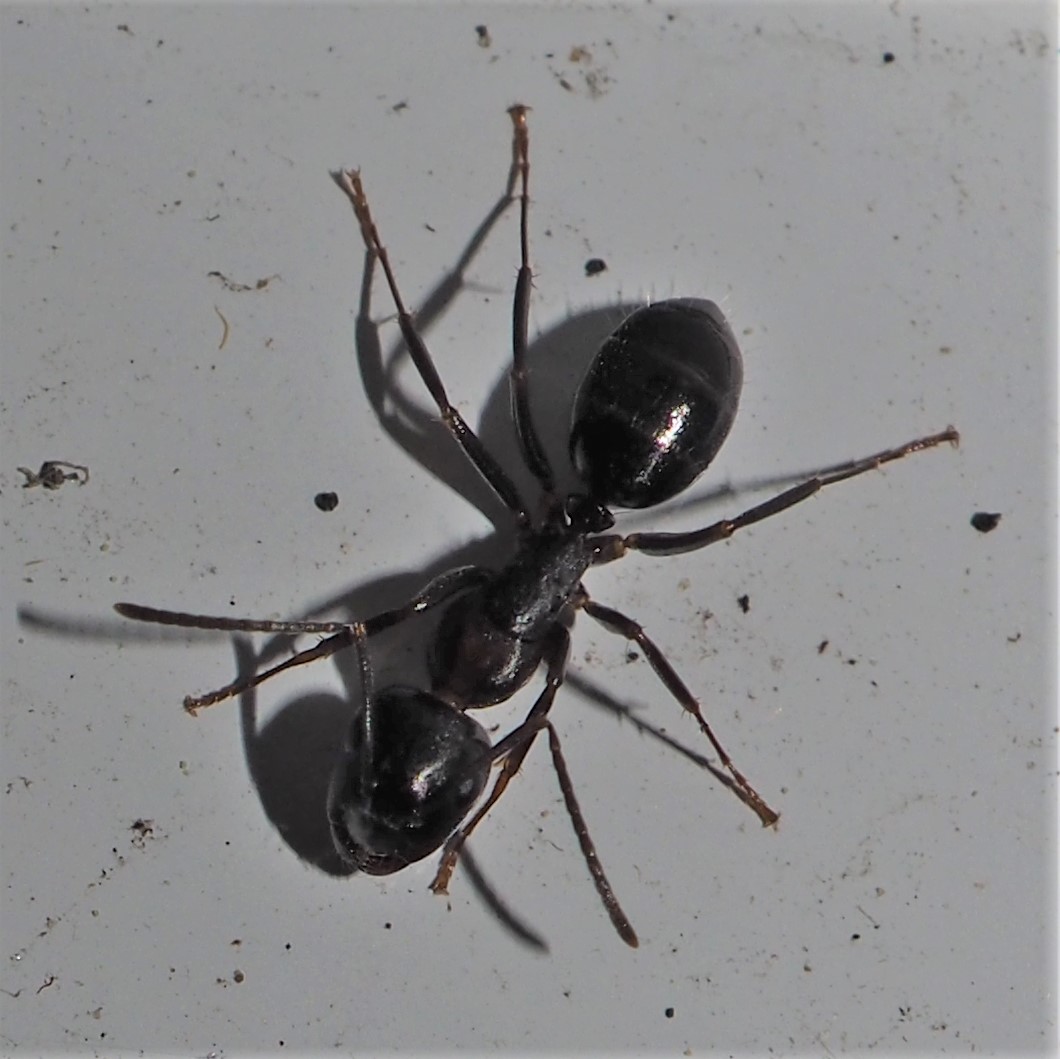
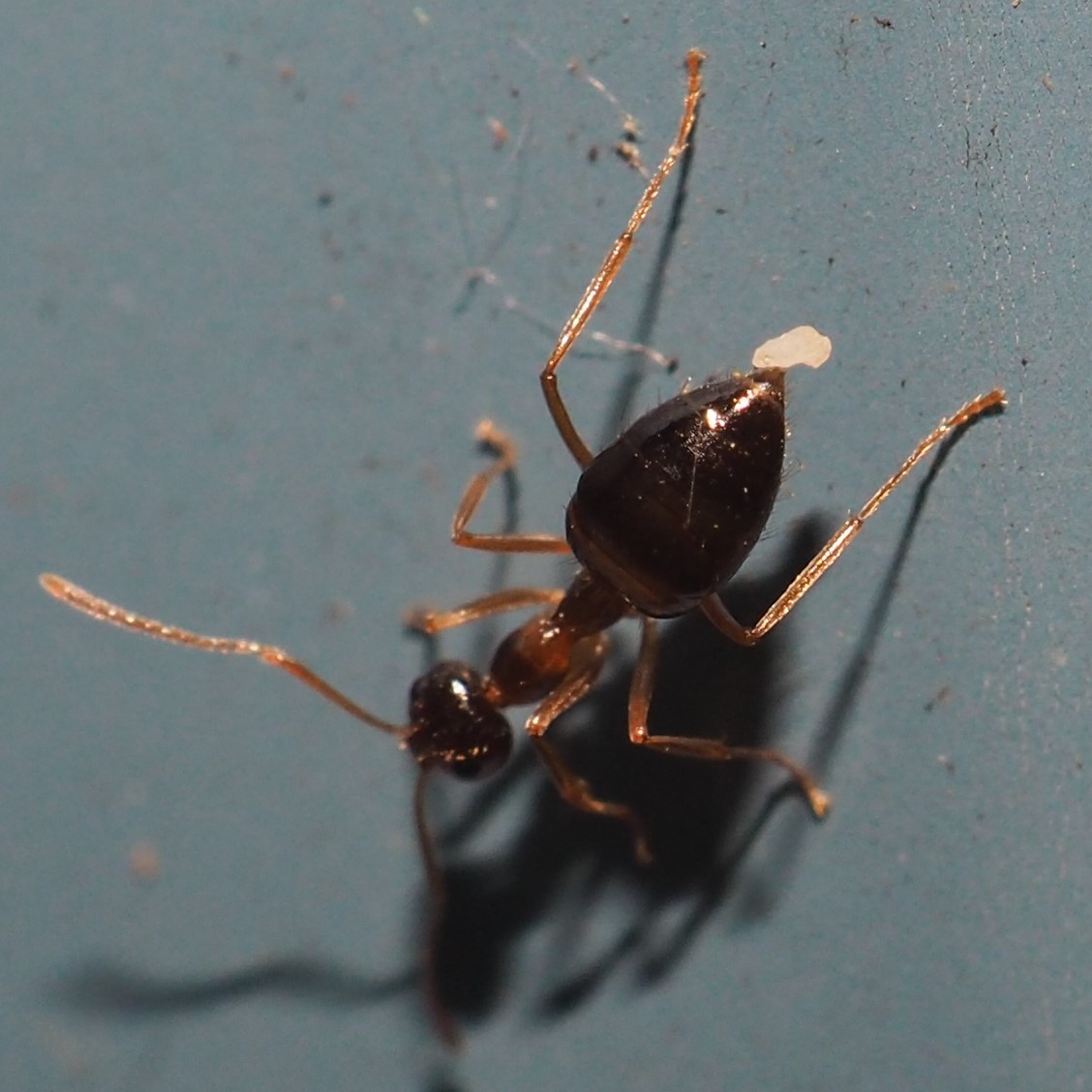
The news of the week in Barklouse Land is that a) the mother Ectopsocus meridionalis is still guarding her most recent egg clutch on panel 8; on the right of that same panel, a nymph became an adult (the next day, the new adult had moved to the left side of the panel); and on panel 7, one of THOSE nymphs had also metamorphosed into an adult! The continuing saga of the Ectopsocus clan is still in
this little web diary .
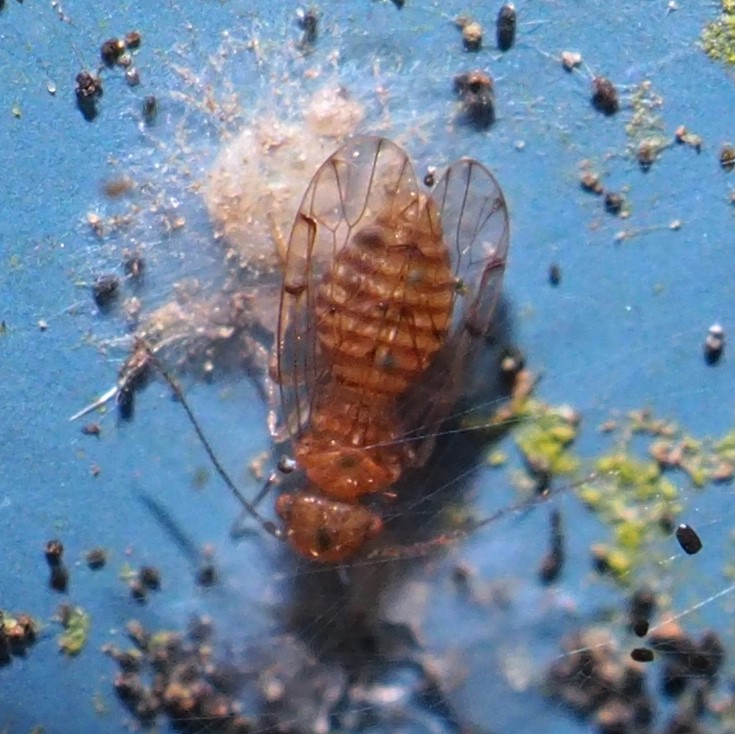
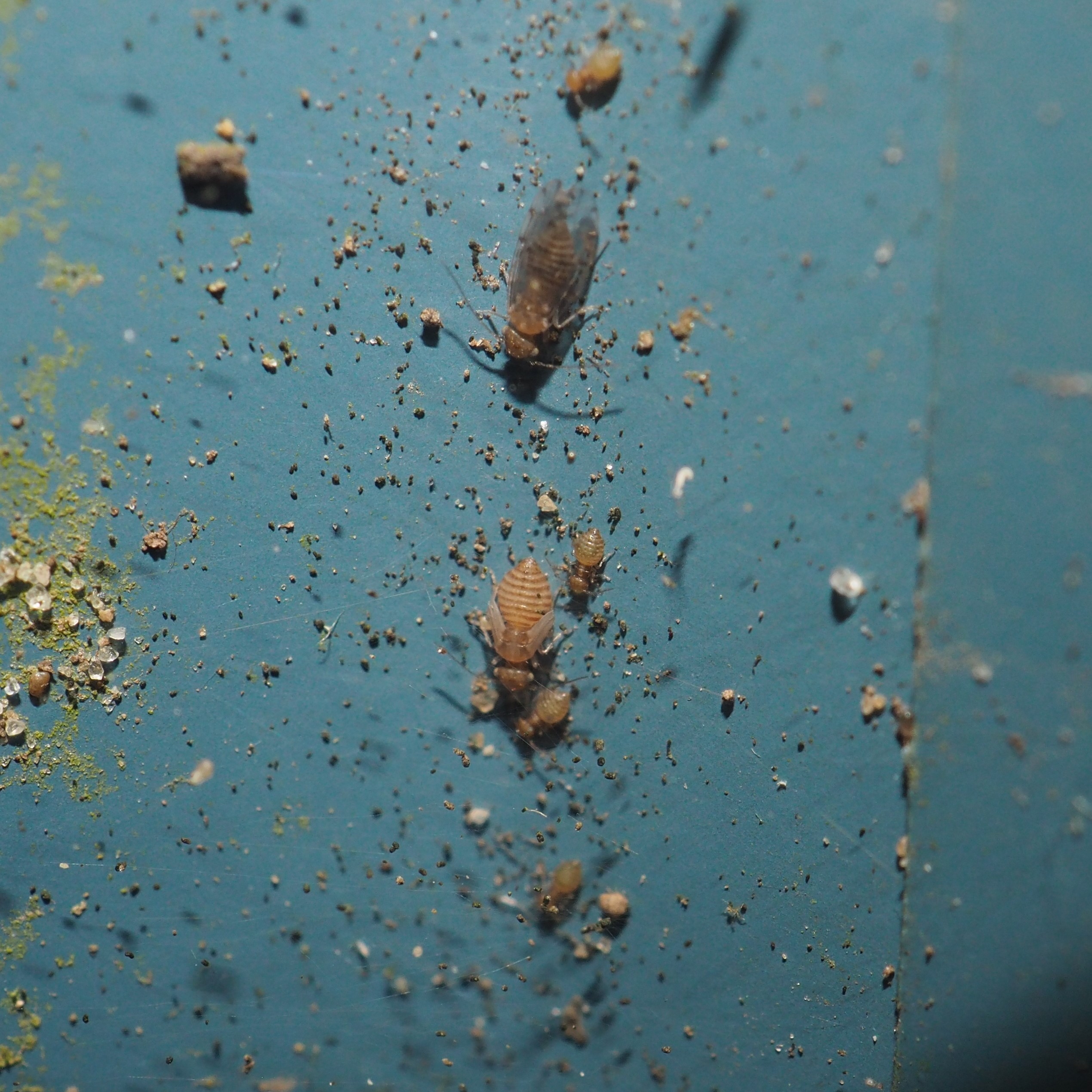
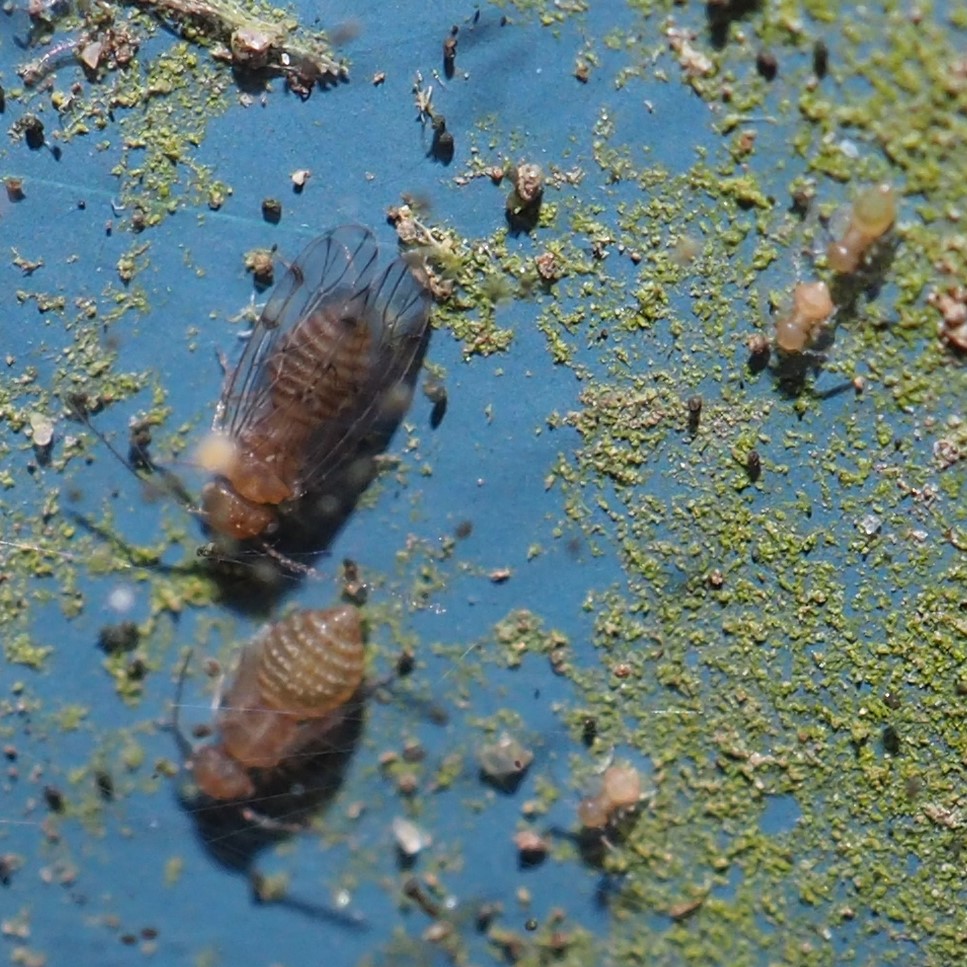
On panel 10, there are still a couple of Metylophorus novaescotiae adults. A few Echmepteryx hageni nymphs run about in various places (picture 2), and there are still some adults. This adult (picture 3) was on the East Wall.
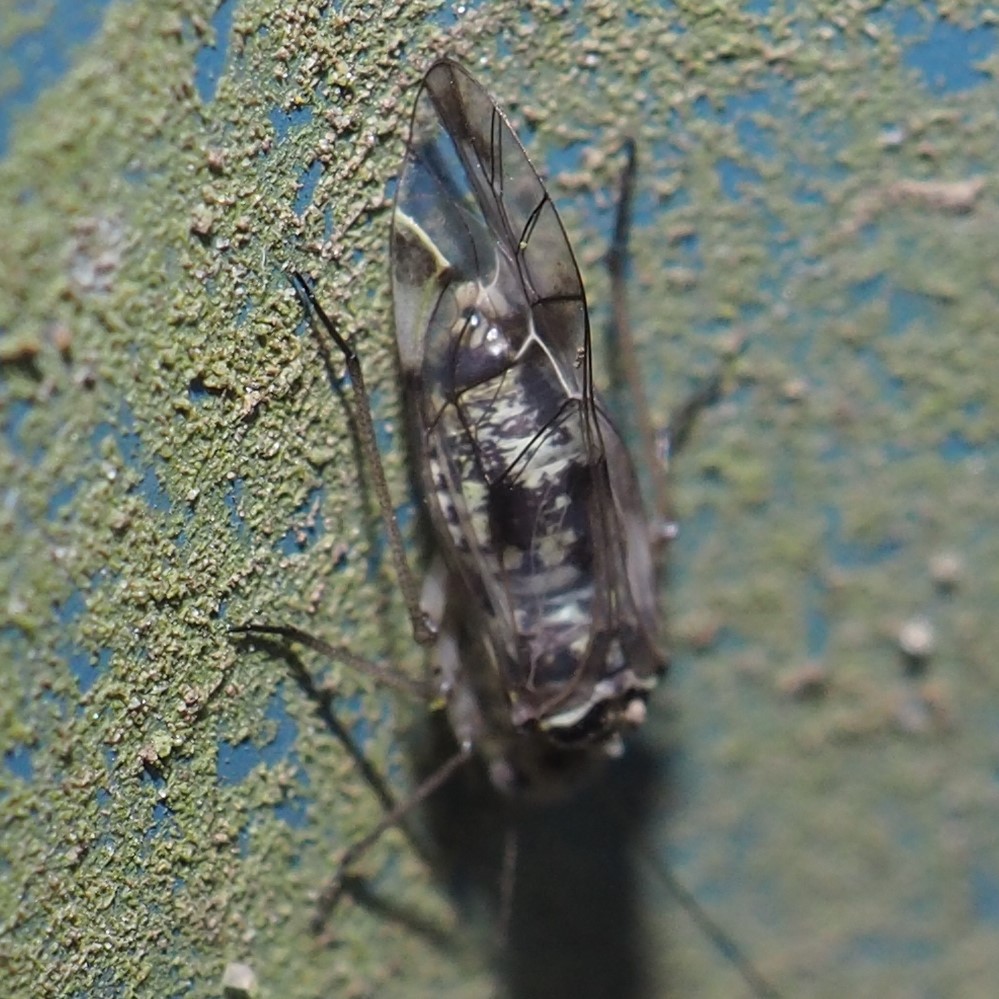
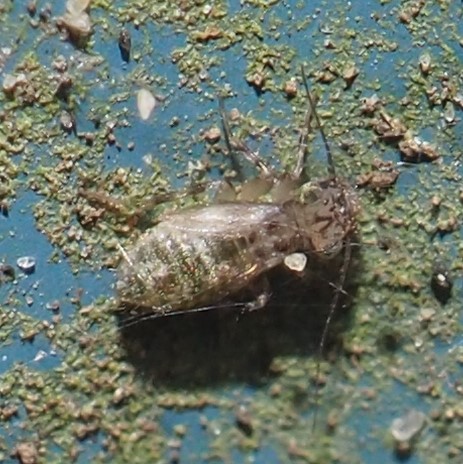
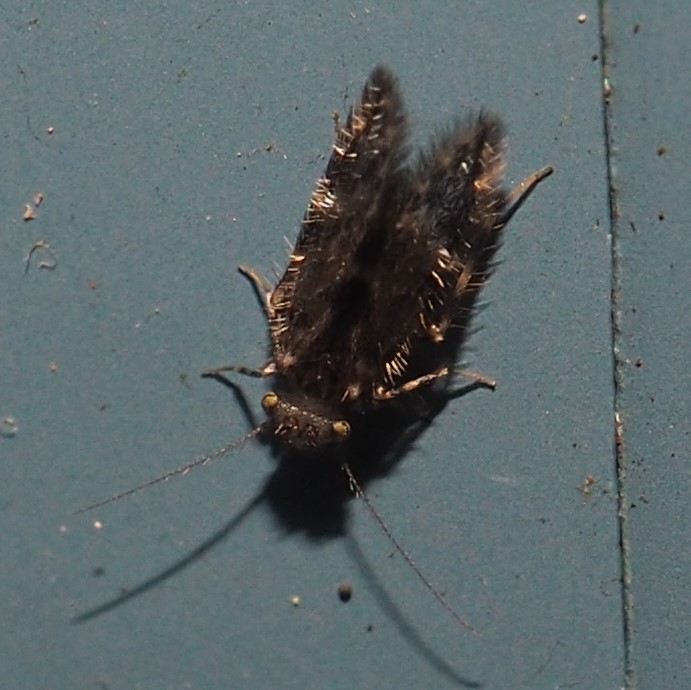
We can usually see a few of our oldest friend, Graphopsocus cruciatus. Note that the eyes of number 1 are black and those in picture 2 are grey! Maybe it is a sex thing. Here is a Nymph. And here is a new clutch of eggs, or maybe I didn't see them until yesterday on panel 6 of the East Wall.
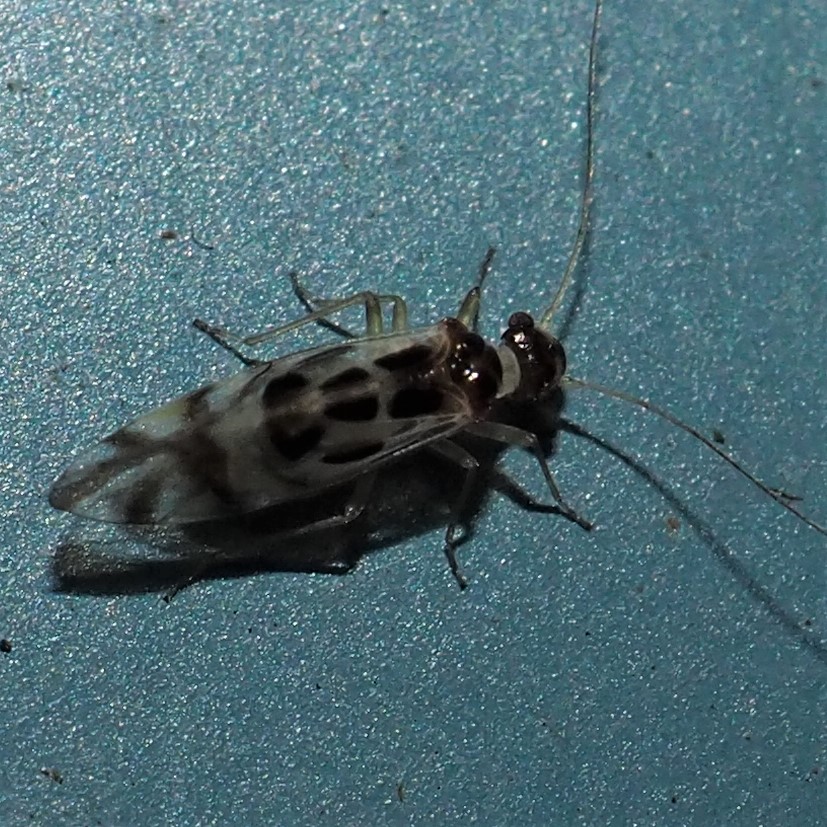
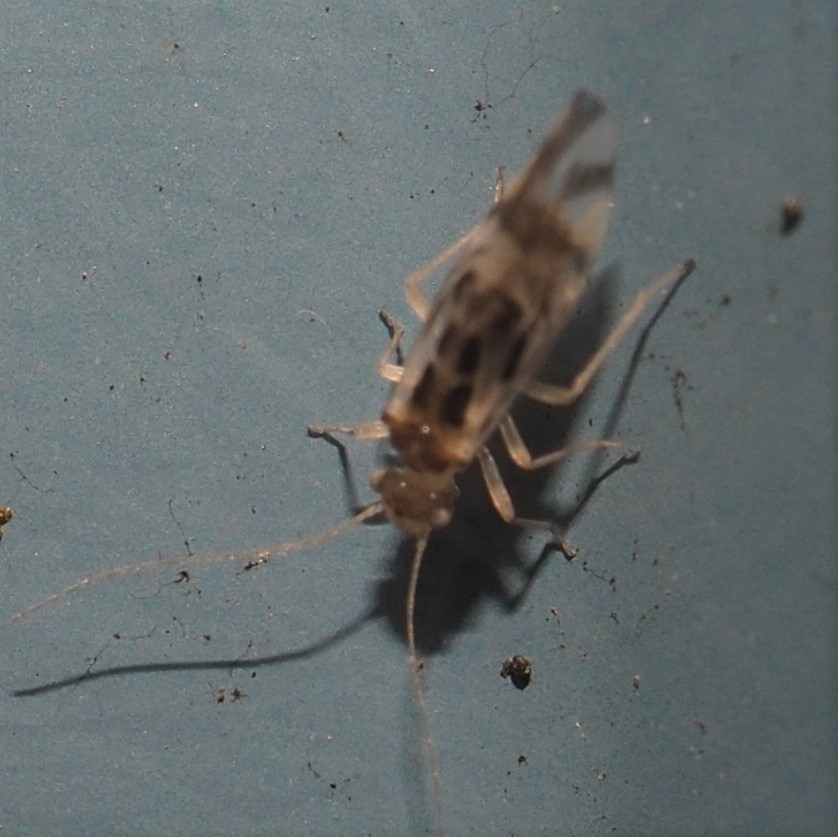
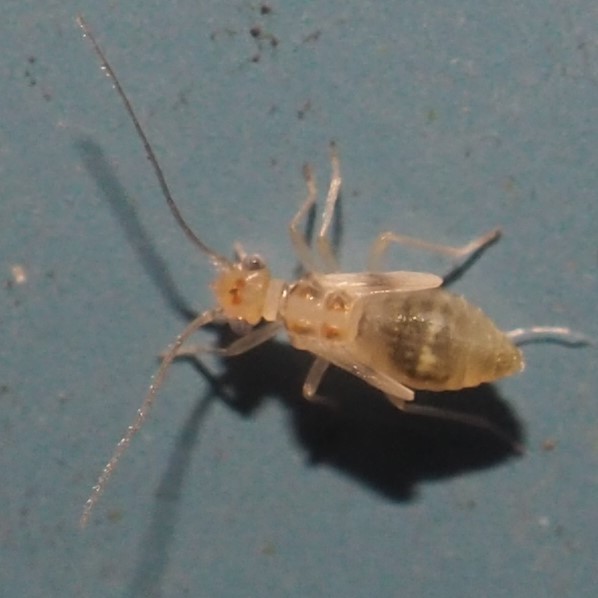
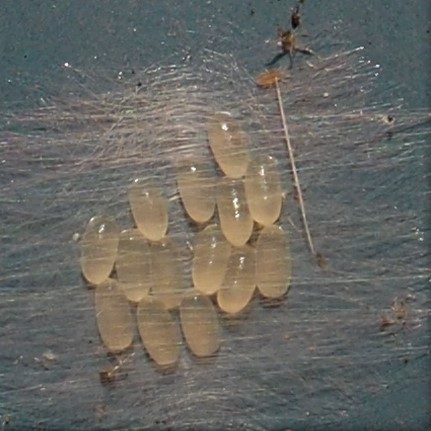
The Nymph of Polypsocus corruptus on the South Wall near the East end was here again, and then around the corner on the East Wall there appeared an adult, still pale since it was just matured from its nymphal case. Here's another angle.


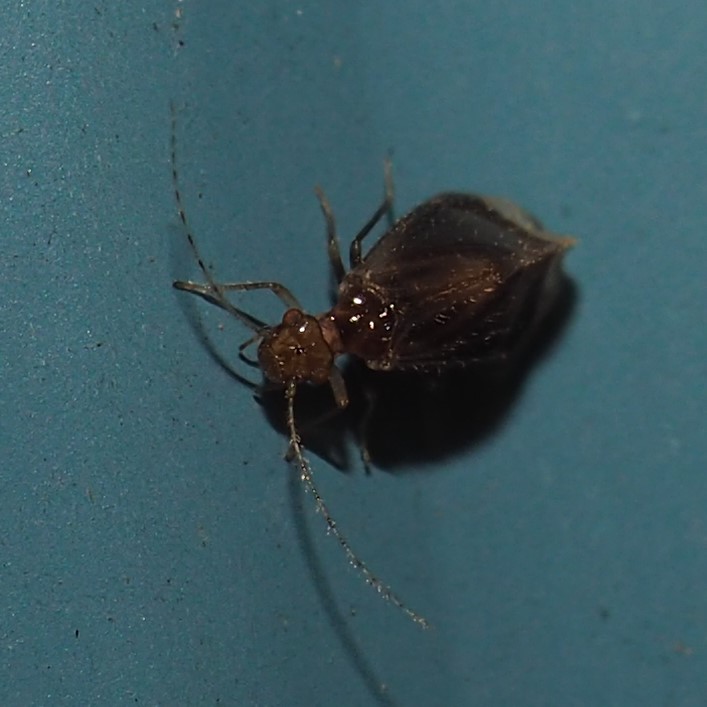
I think this first Bee is a member of genus Andrena, maybe A. nubecula? Second is a Honey Bee in an Aster. The Third may be one of those Sweat Bees, but is even tinier than most of them, so it could be a little green Wasp.
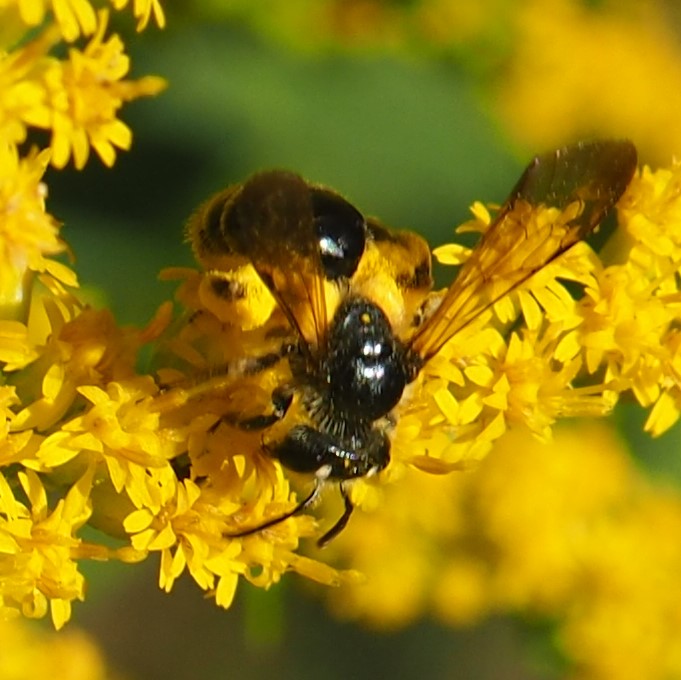
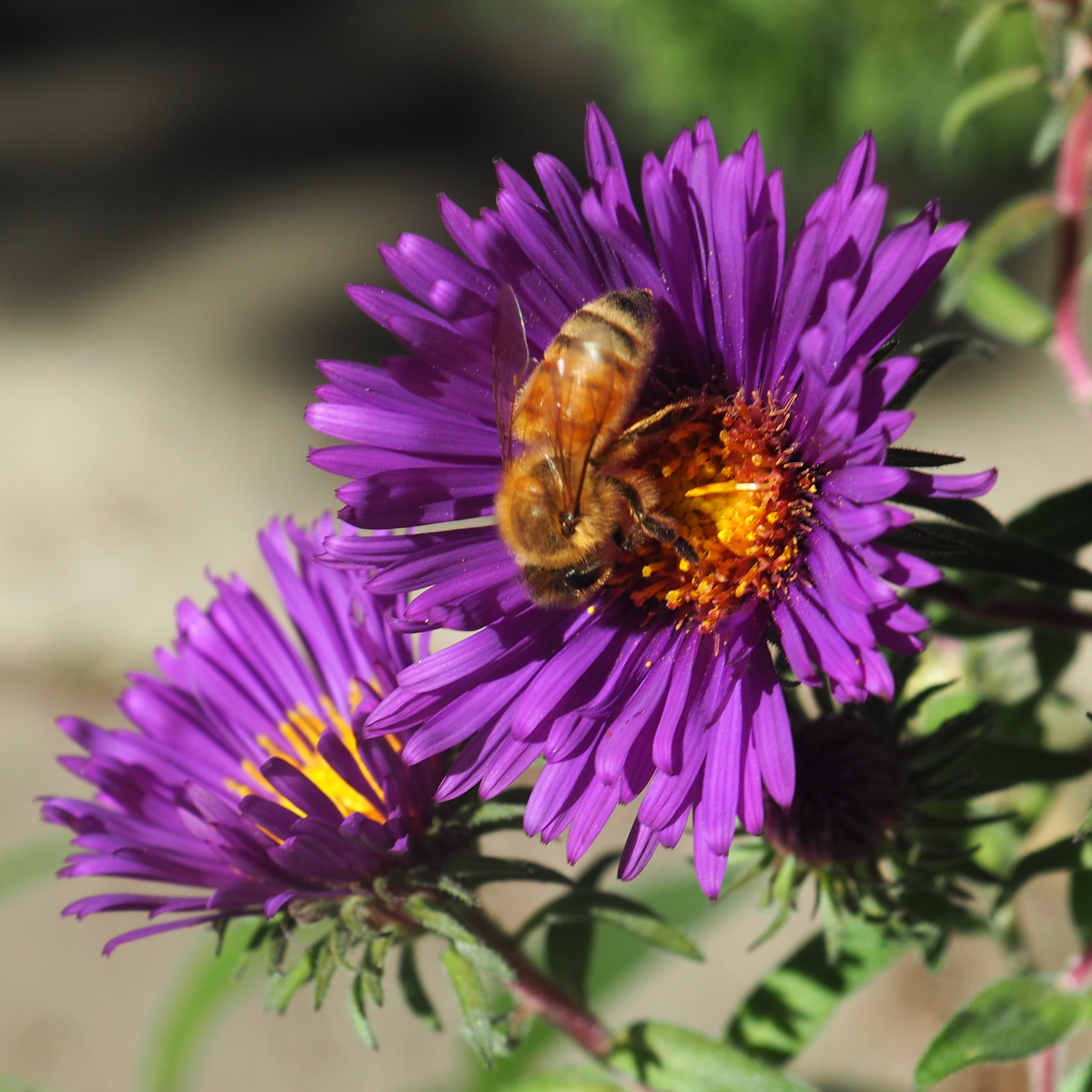

We didn't have so many Beetles as sometimes. But of course there was an Asian Lady Beetle. And a Redbud Bruchid. And last, a Beetle that I don't often see, called Notoxus desertus. This latter is something I might see on a winter night. Maybe it's trying to tell us something.
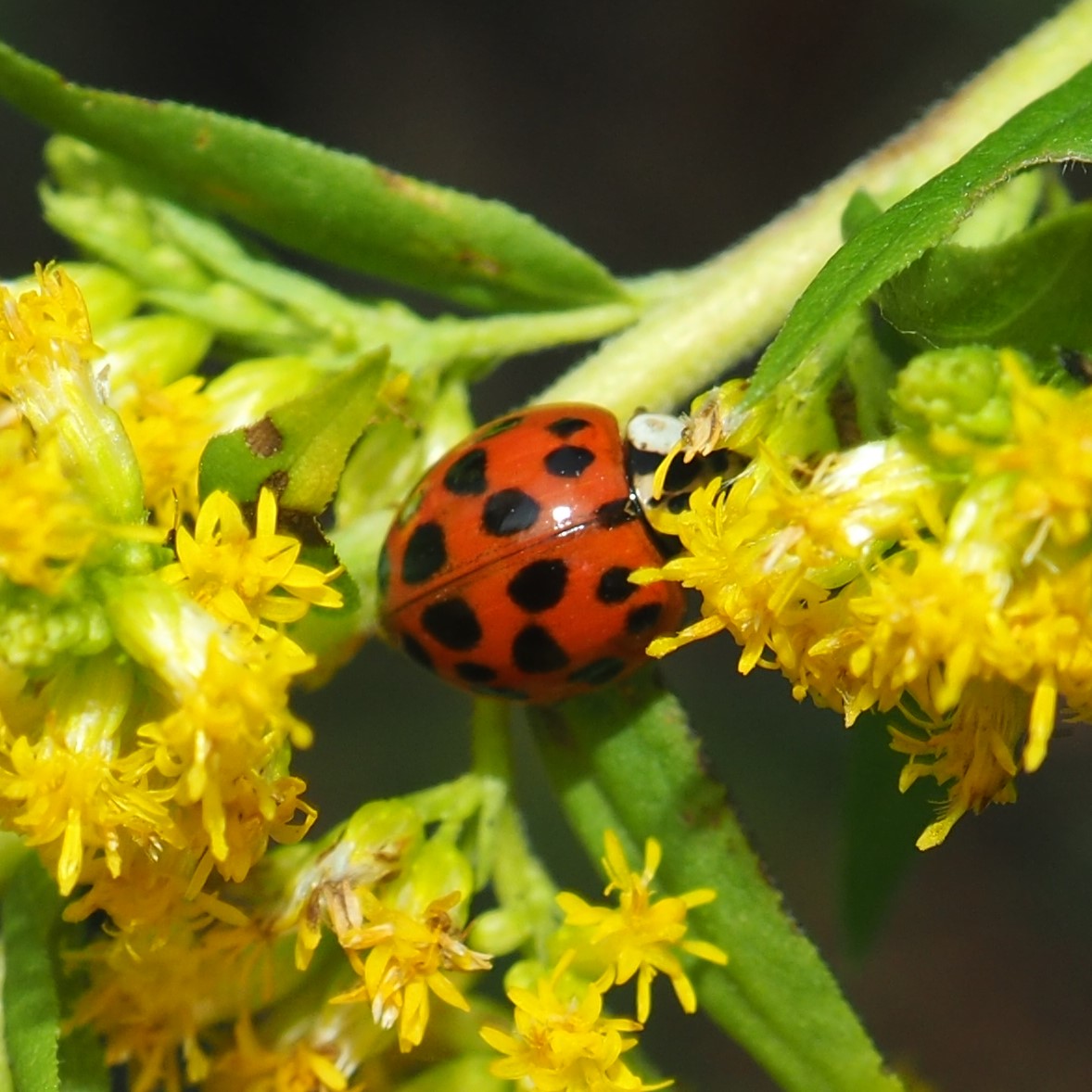
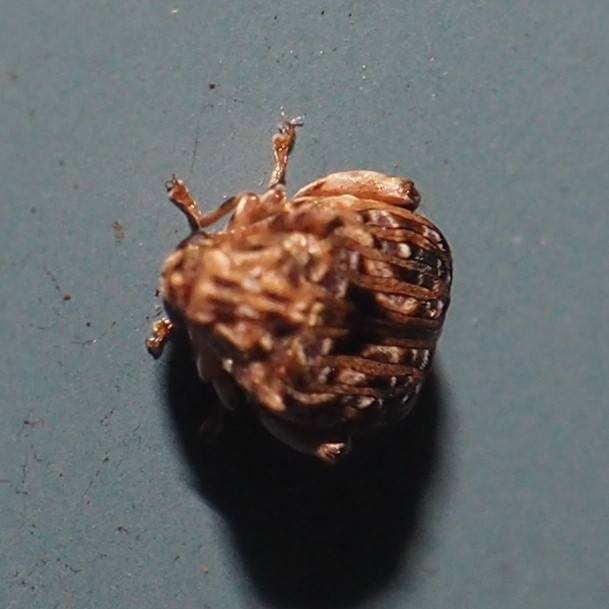
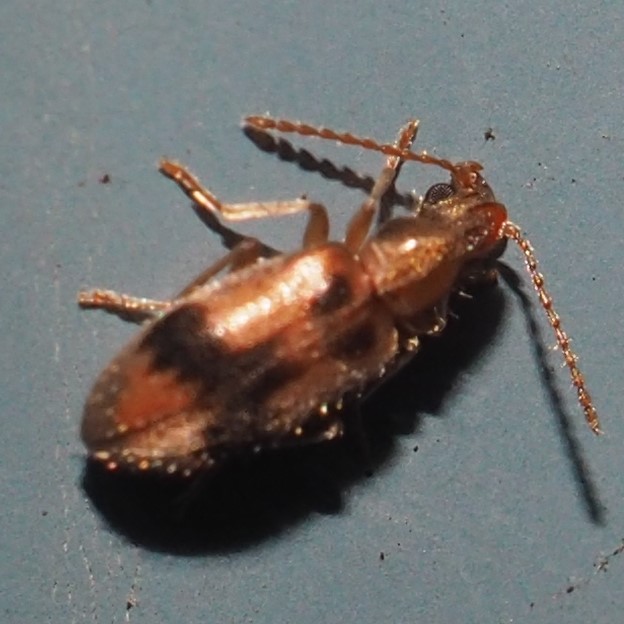
No more Ambush Bugs. Wasn't that a trip though, when you could walk through the Goldenrod and suddenly see that tiny bug nibbling on a much bigger creature? But we will never run out of Assassin Bugs until it gets a bit colder. All of these are different individuals.
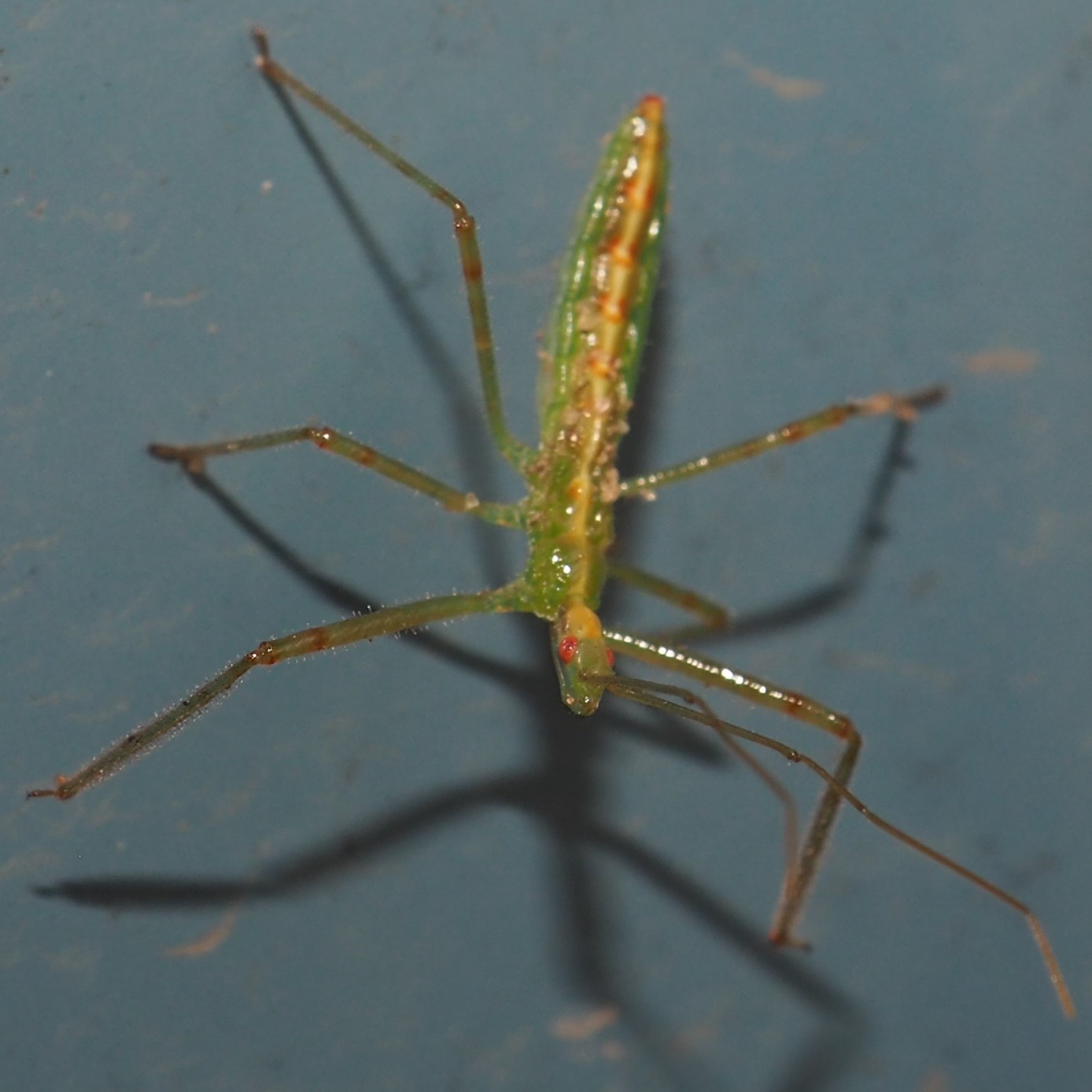
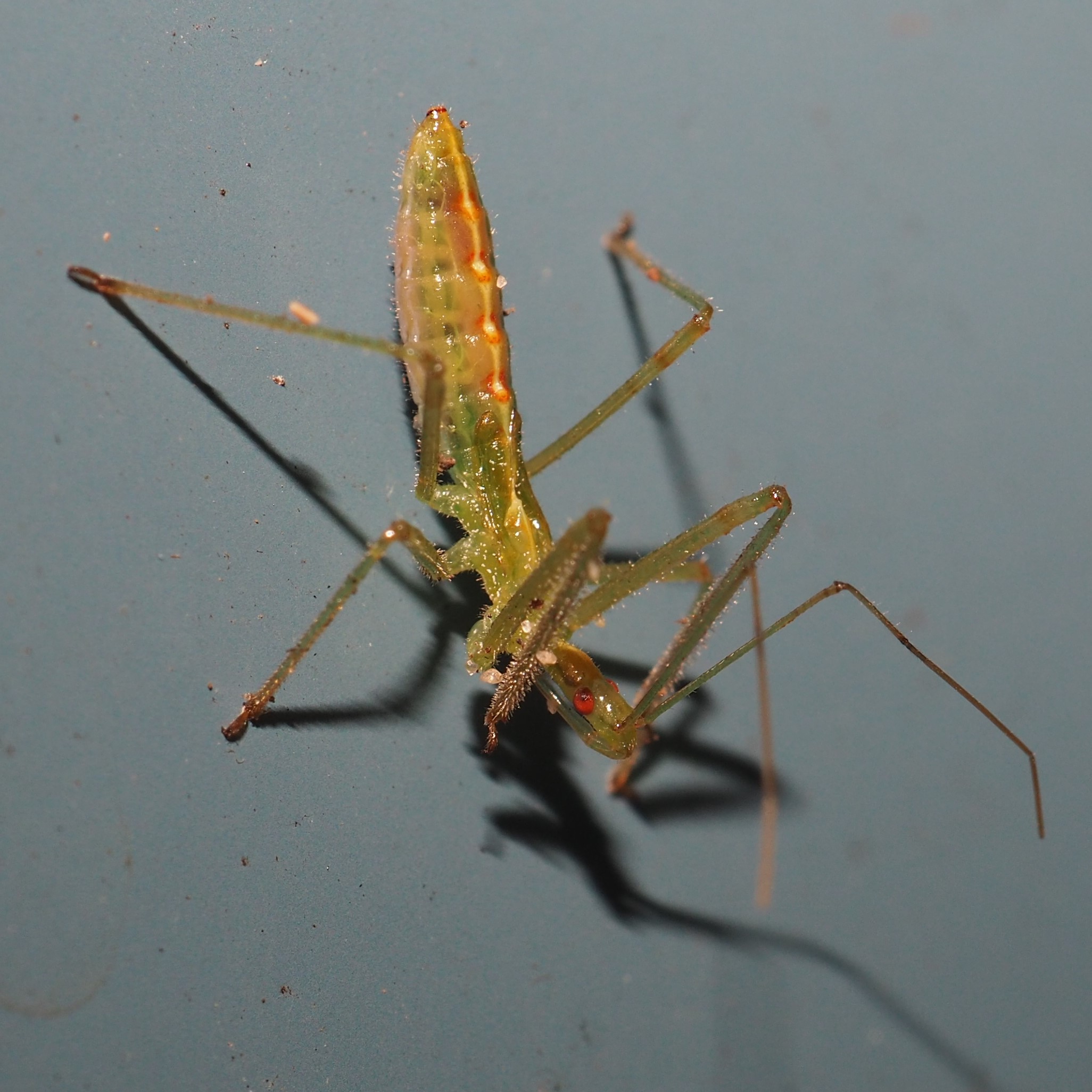
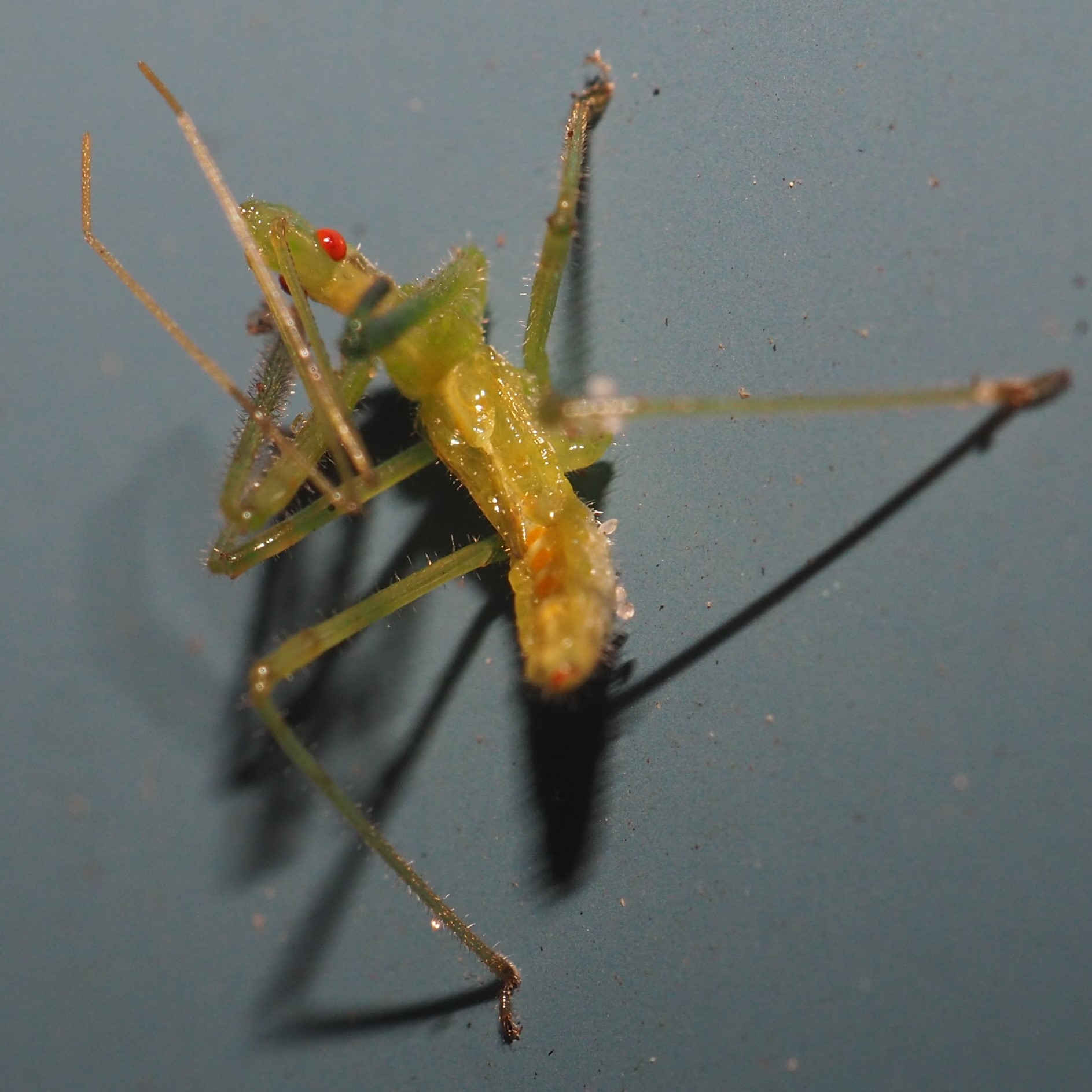
Which brings us to the Leafhoppers. To my surprise, when I was shooting the new Adult Barklice this morning, there on panel 7 was this lovely Erasmoneura vulnerata. We had three of these pale-colored Eratoneura Leafhoppers, all different. We had a few fewer Erythroneura aclys but we did have one, and also an Erythroneura elegans. The Erythroneura are very small, about half the size of most of the other Leafhoppers.
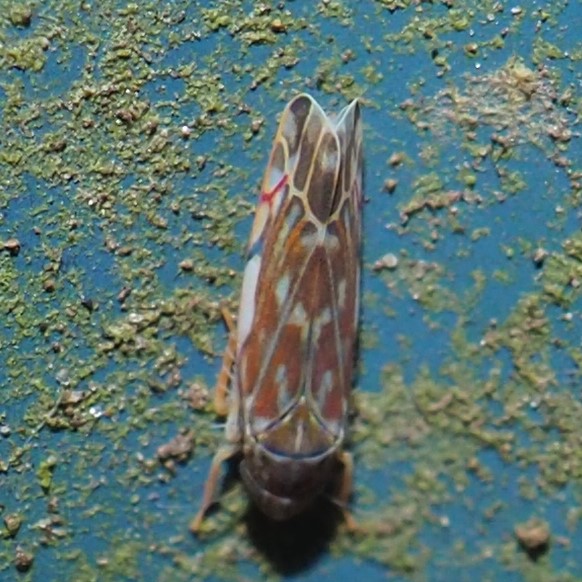
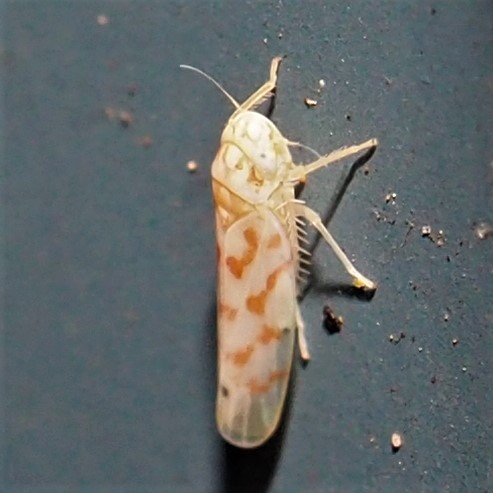
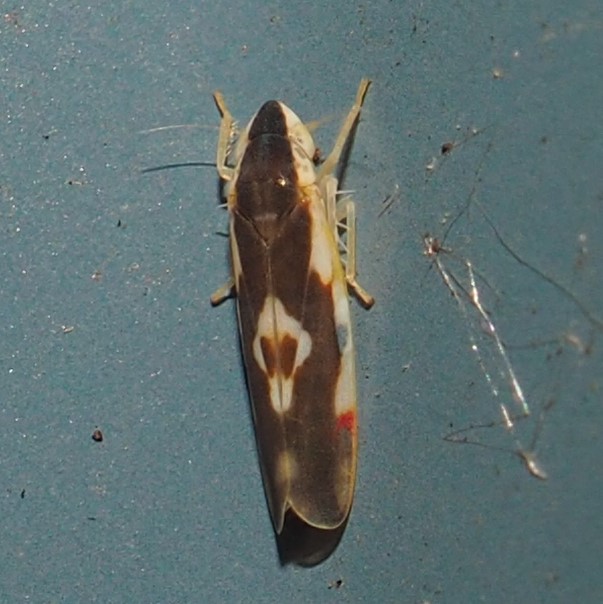
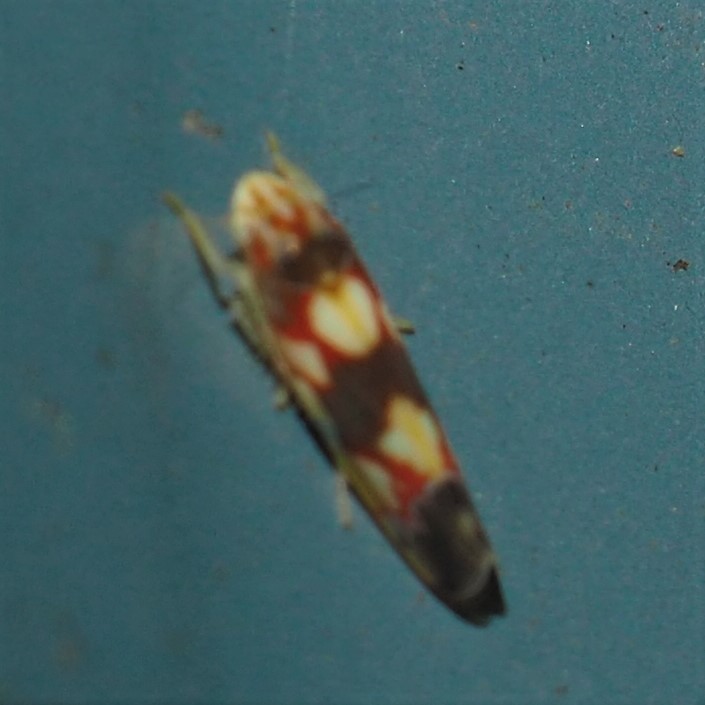
The red and blue candy-striped Leafhoppers are still around, as are the Japanese Leafhoppers and the Jikradia olitoria. We also had another of the Scaphoideus genus.
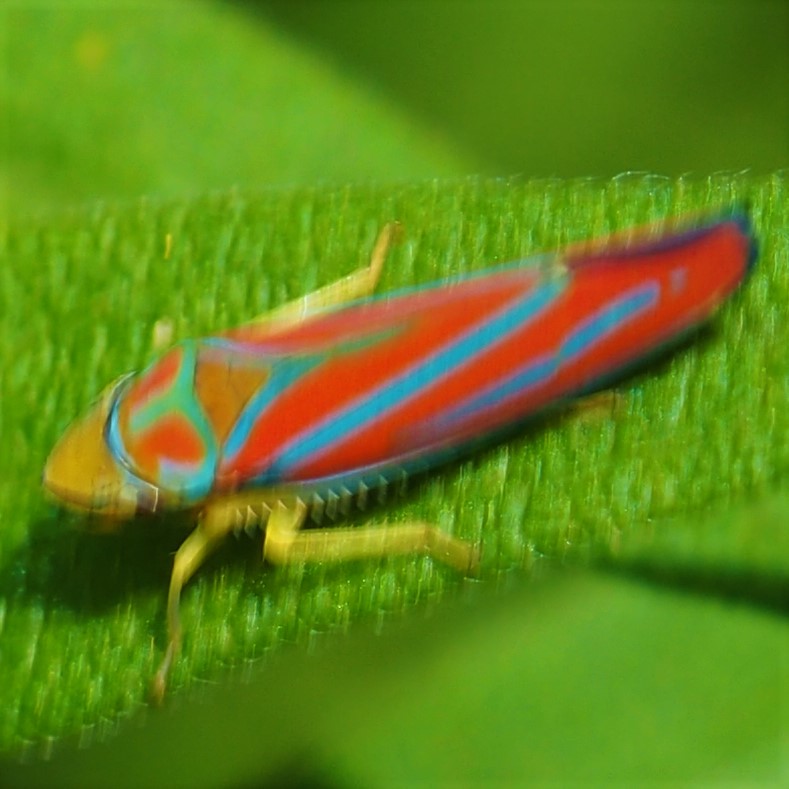
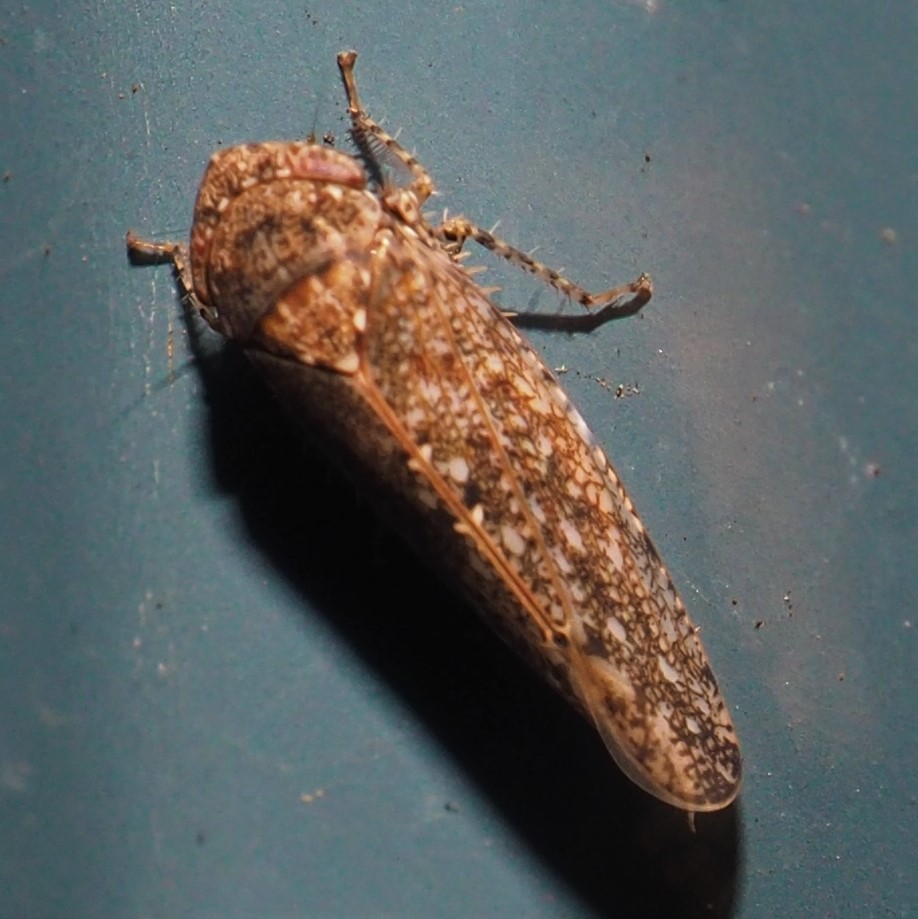
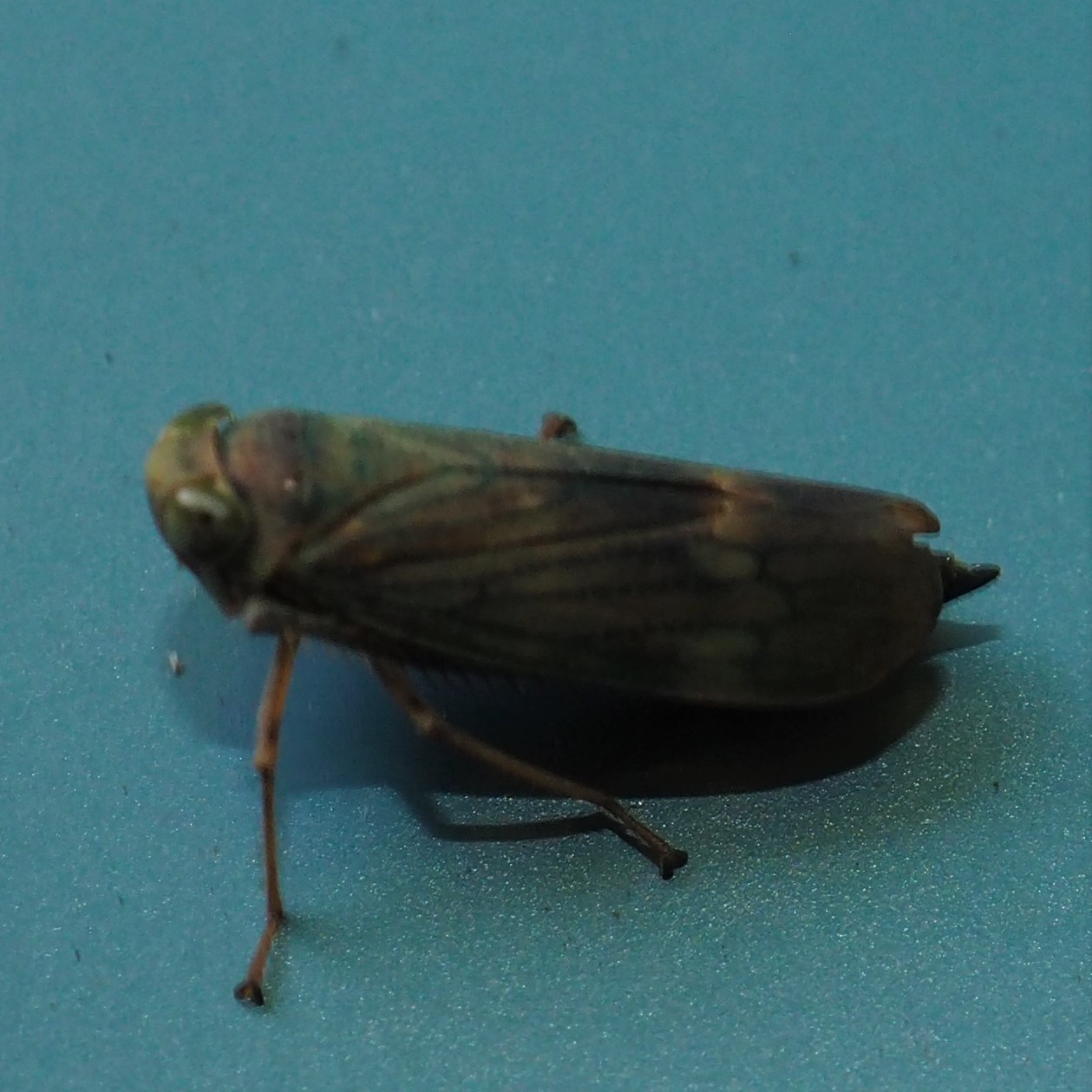
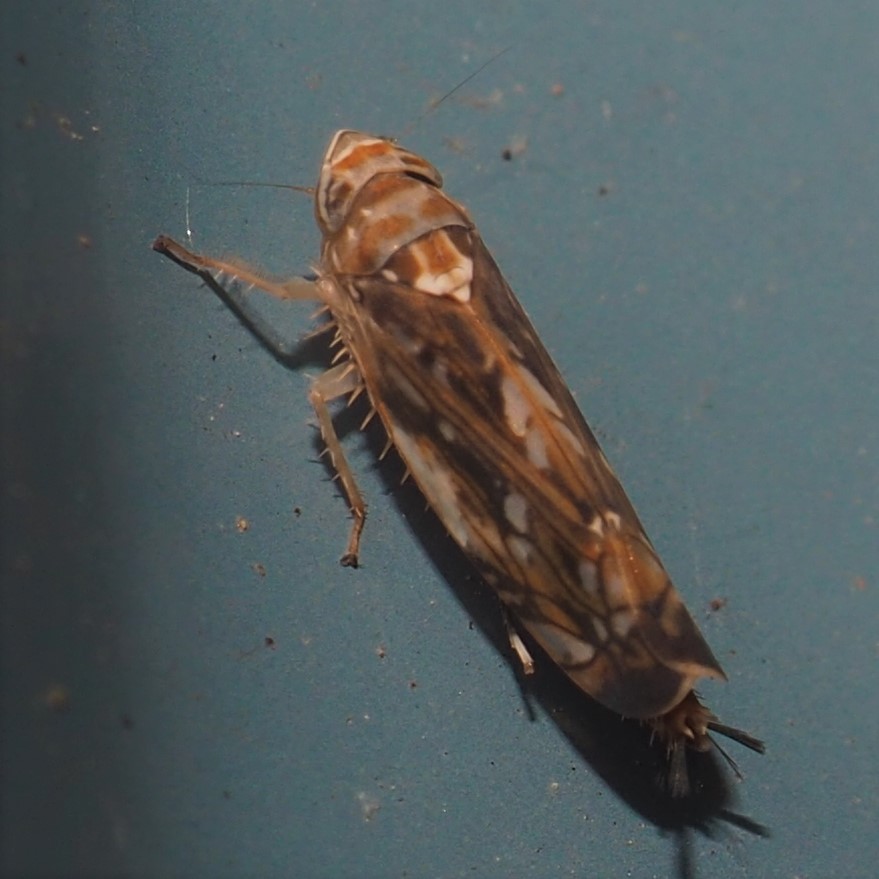
No Planthoppers. No Treehoppers. We do have one Alder Spittlebug. Next might be one of the Drymus genus bugs.
Third and fourth are Stink Bugs. Number 3 is one we've seen several times now. I'm told that number 4 is a Stink Bug but in one of its nymphal instars, not an Adult. I rather like it as is.
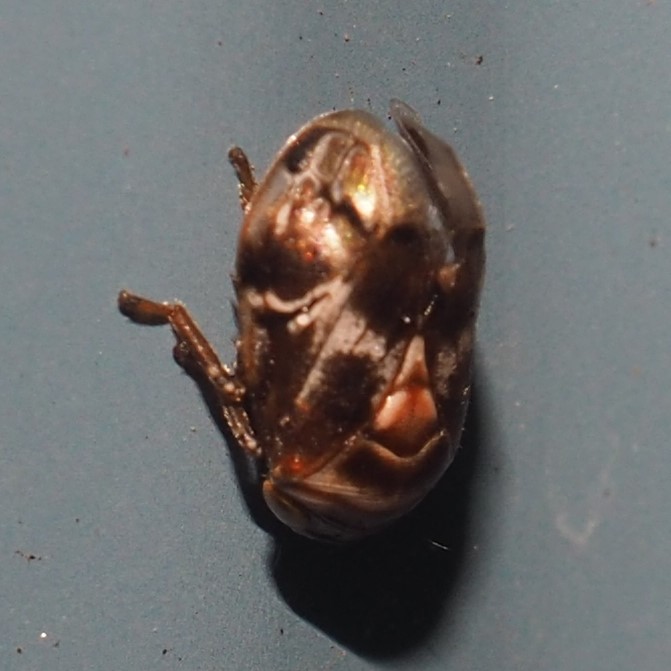
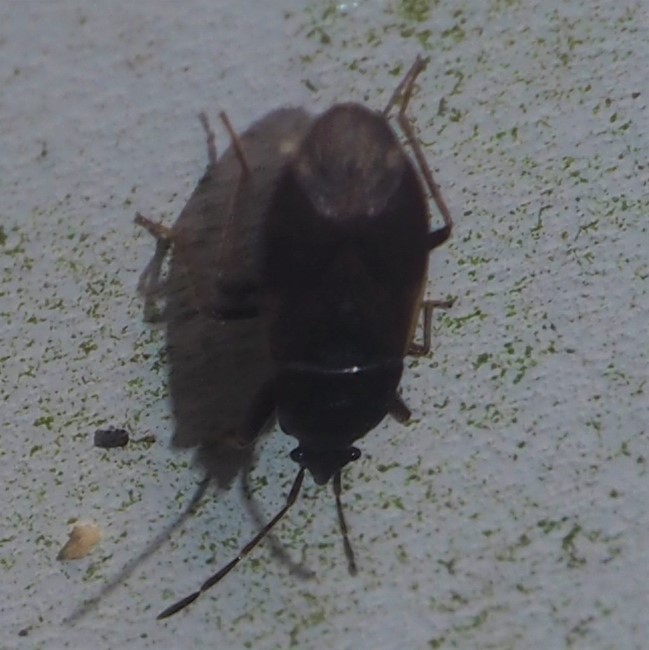
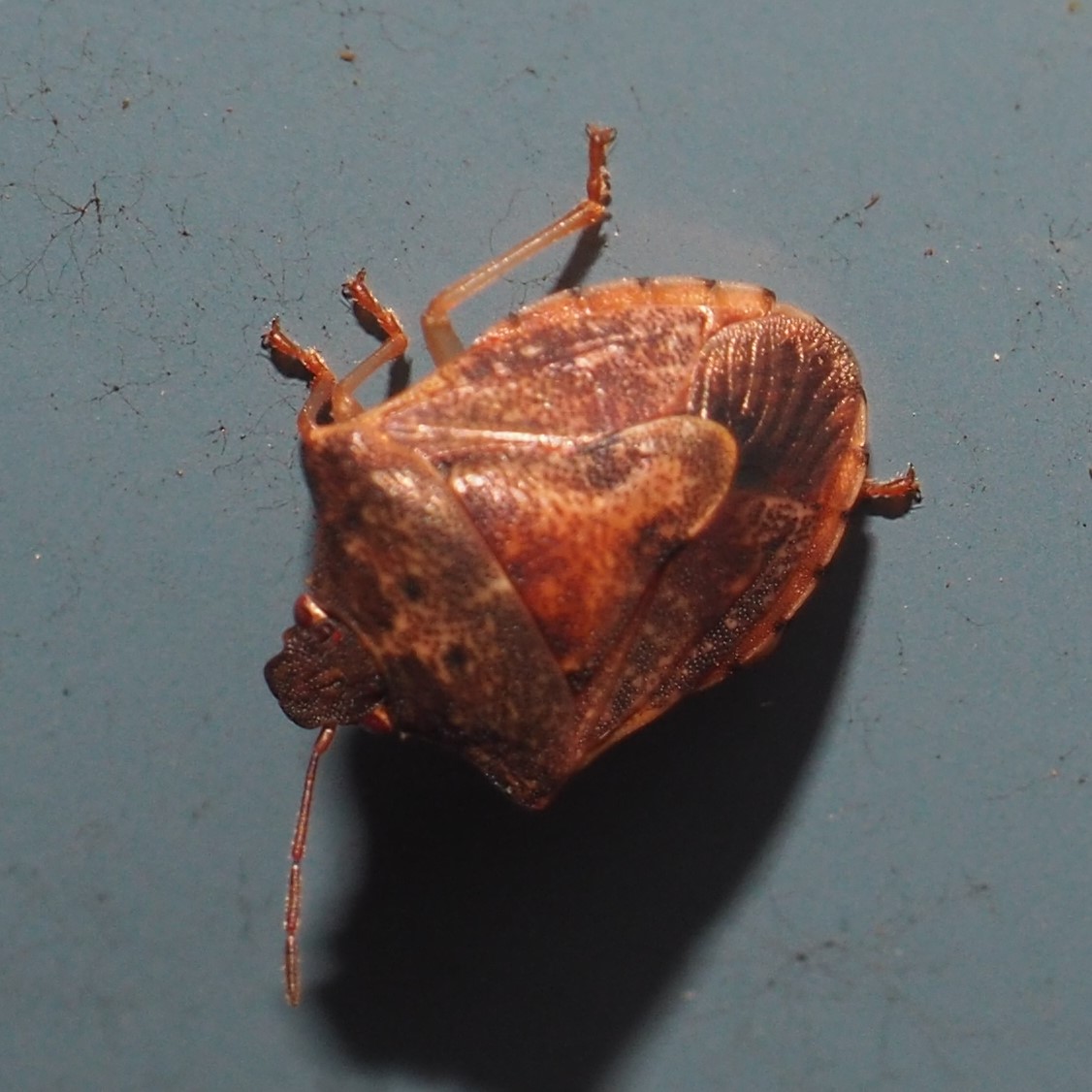
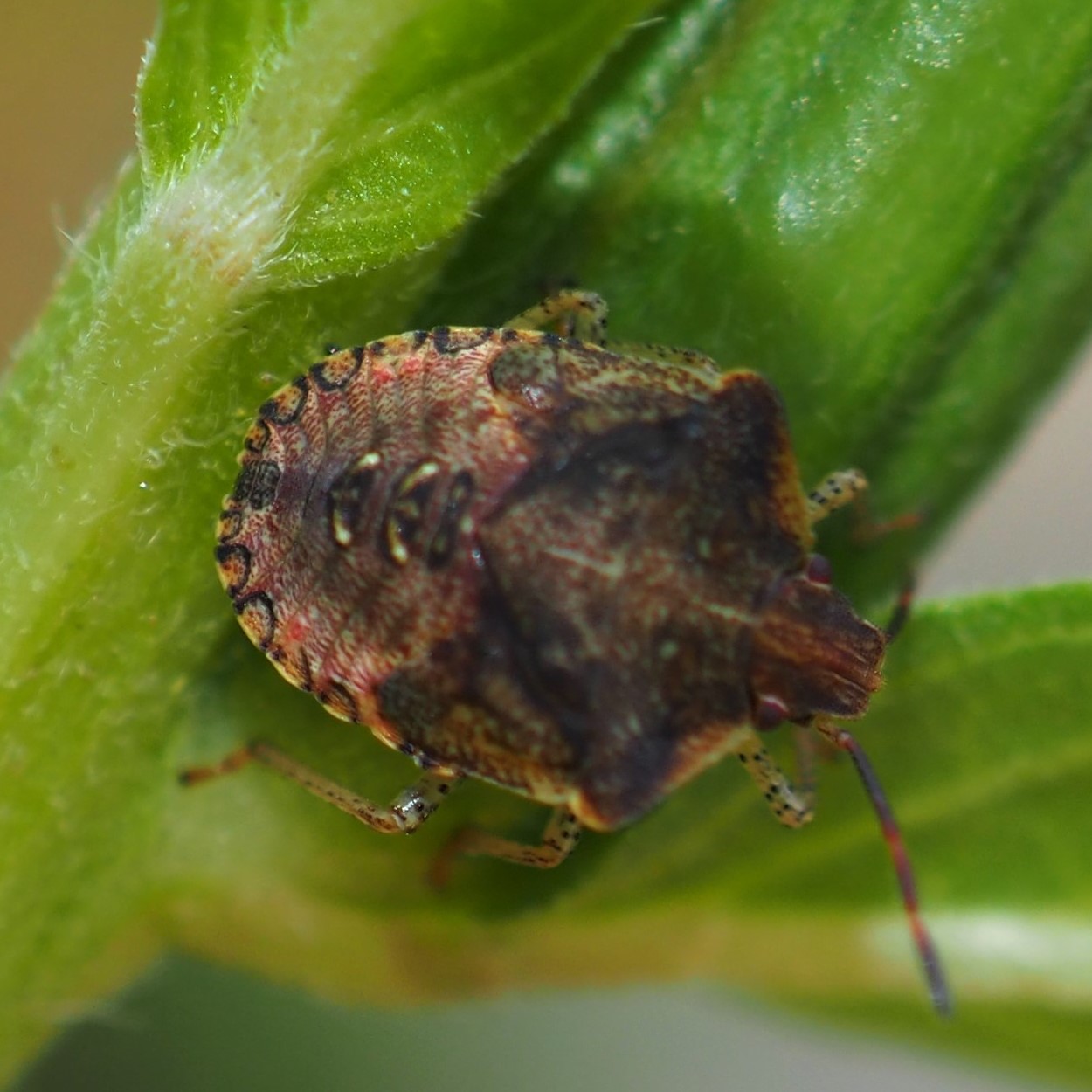
The pond MAY be done before the frost. I'm getting a bit antsy about this. But it's still fun to watch the fishes play in the shallow water (once I top up the pond). Can't wait to see my water bill! But look how each fish catches the sun differently.
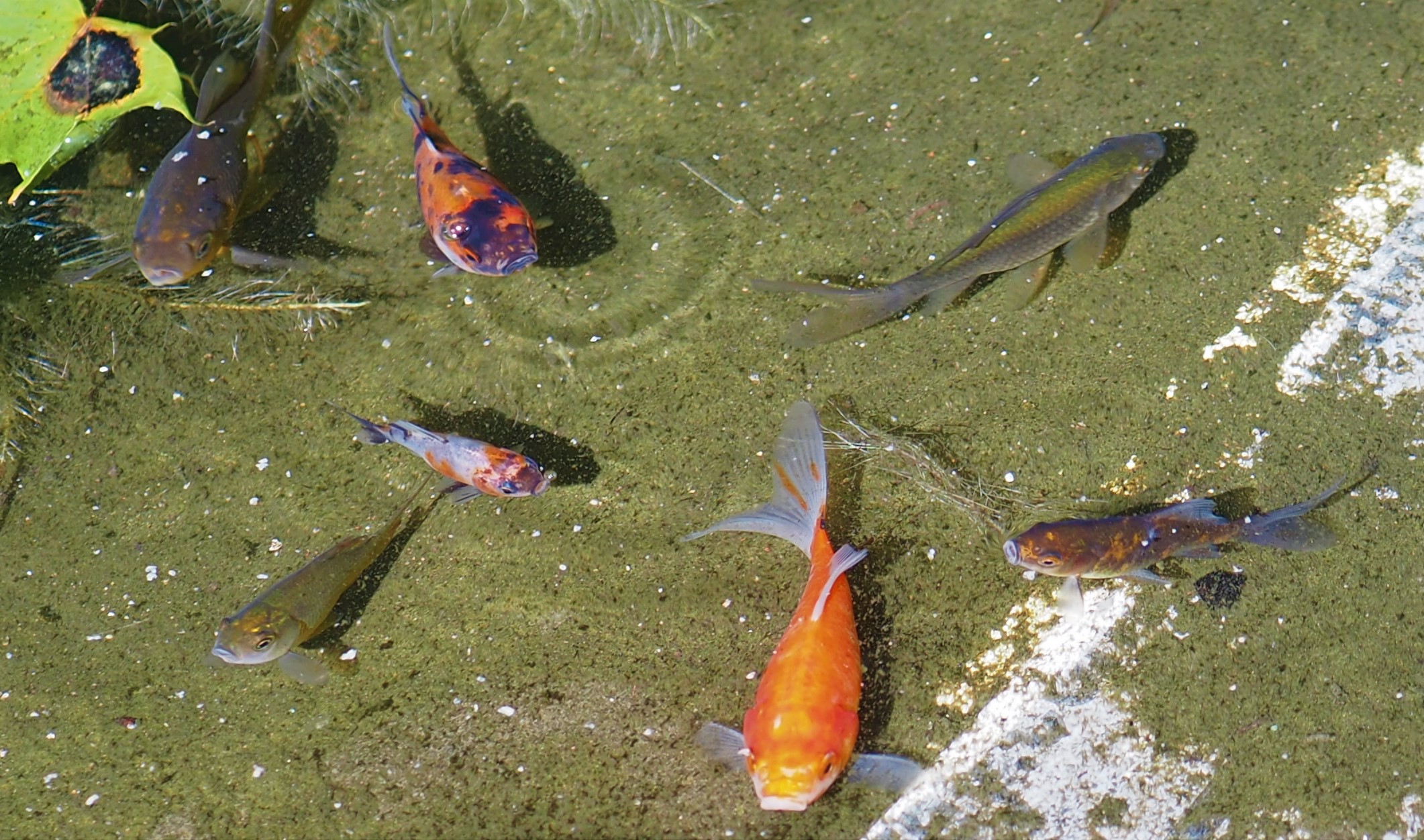
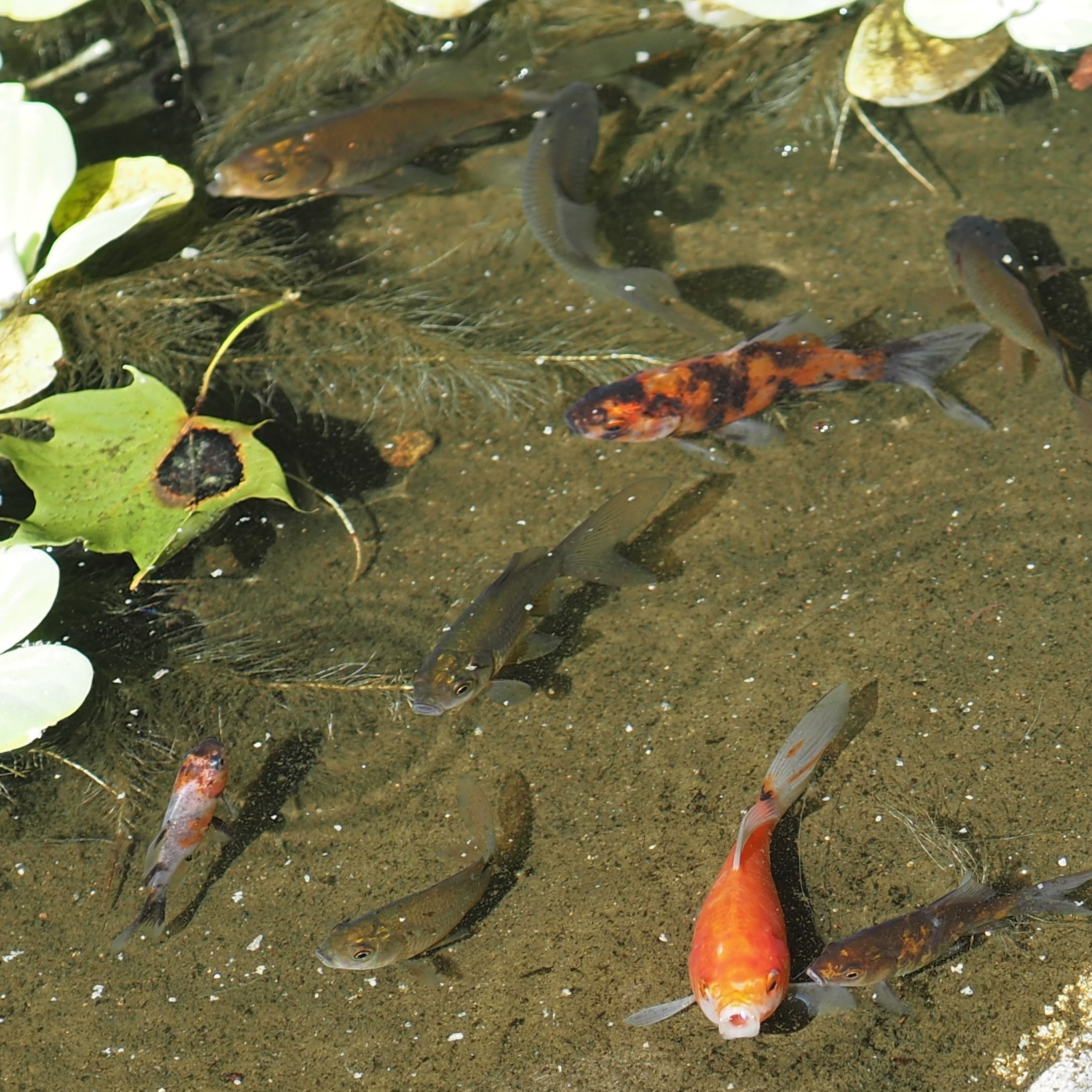
Let's move on to the Flies for a while. Here is a Gall Midge. And maybe a pair of Mosquitoes. The first one (picture 2) is a female and the second a male.
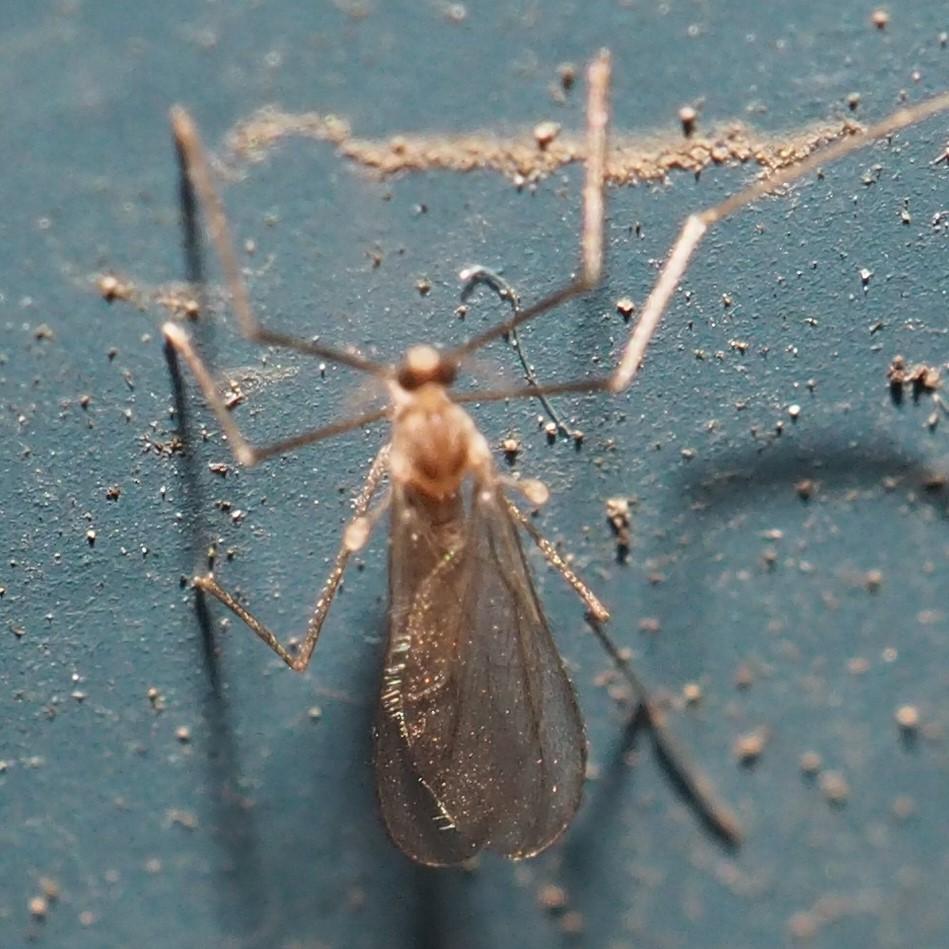
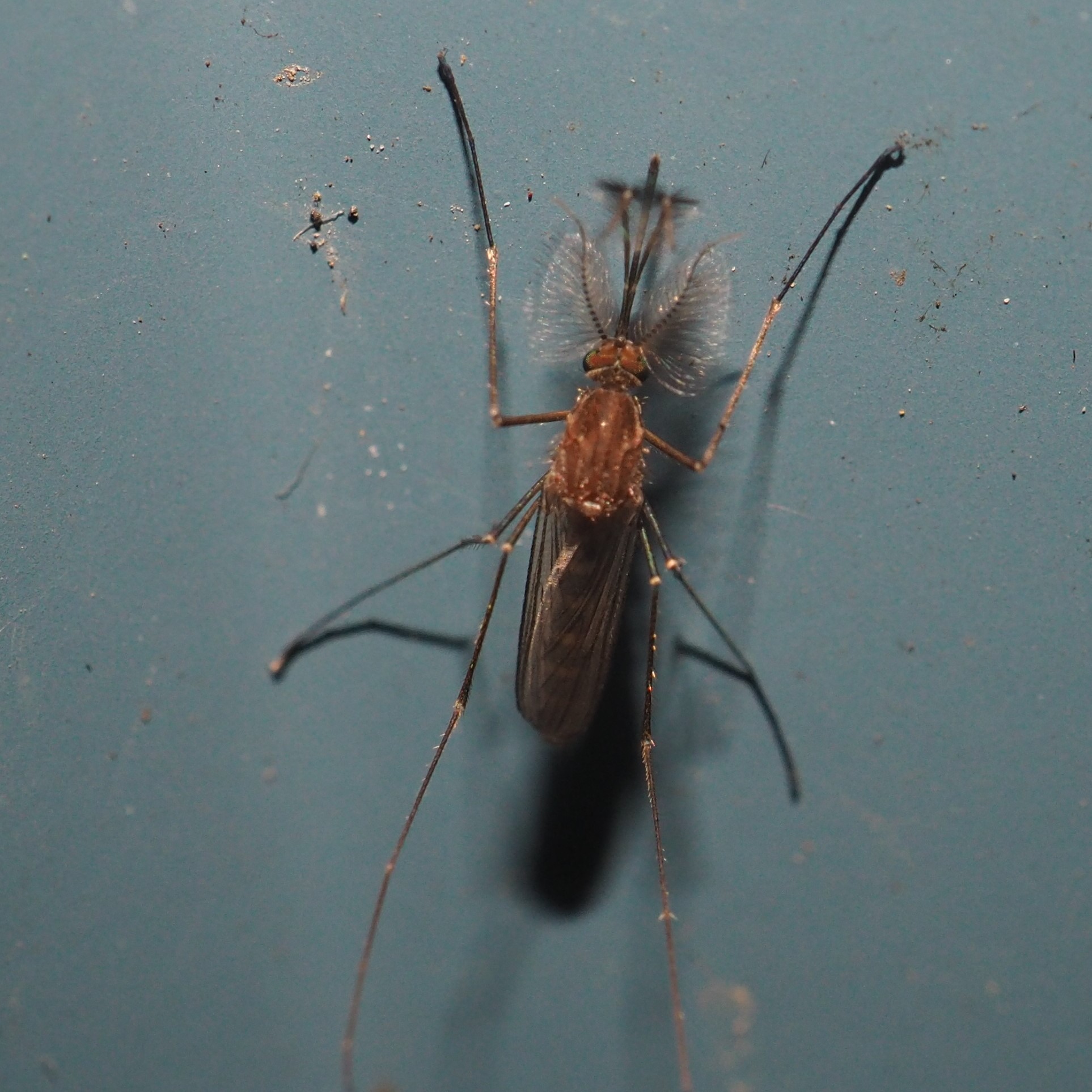
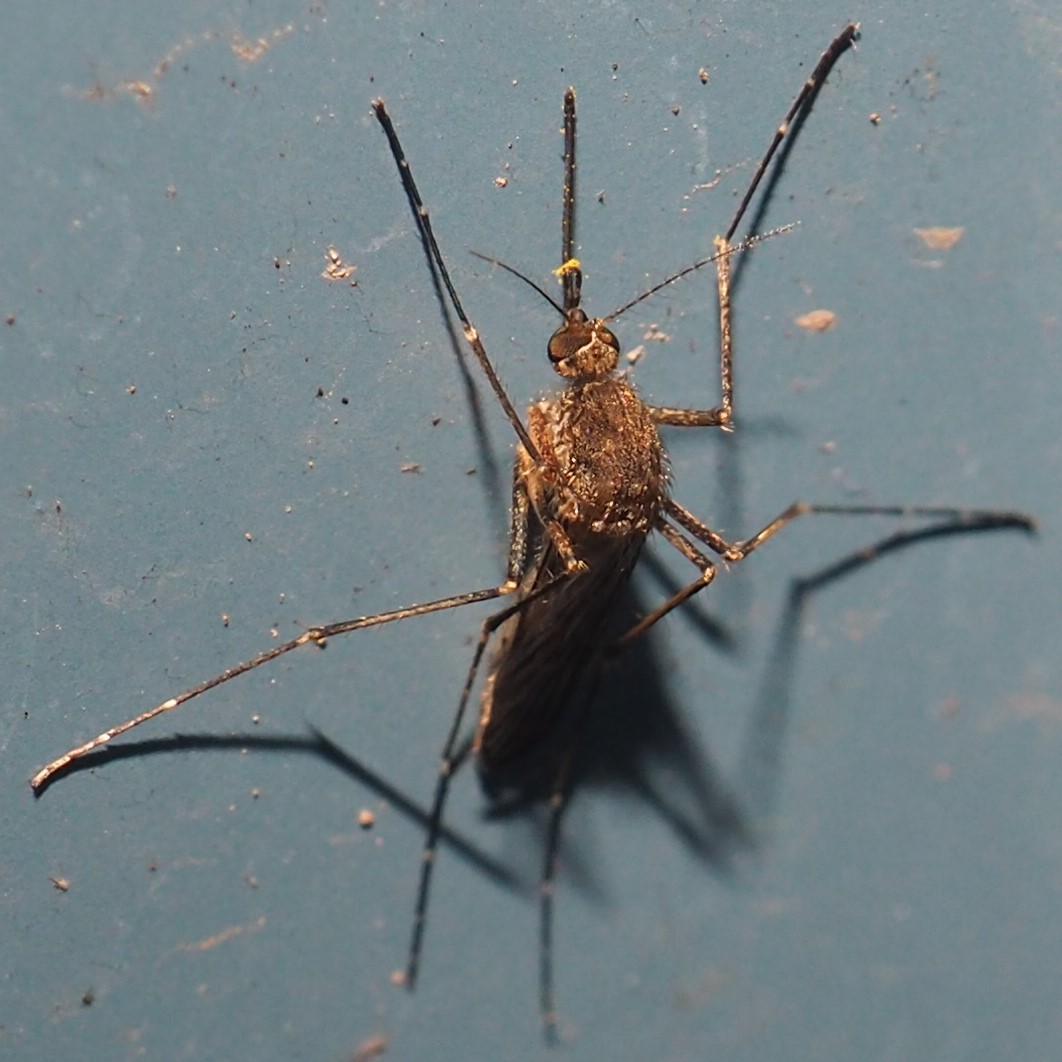
Here's a Moth Fly. They are all over the place just now. Second is a mystery but I think it's a Fly. The third one was identified as a Root-maggot Fly, whatever that means. Fourth, we have been seeing this little Smoky-winged Woodnymph Fly for about a month now. Unfortunately, this brings us to the end of the Flies for now.
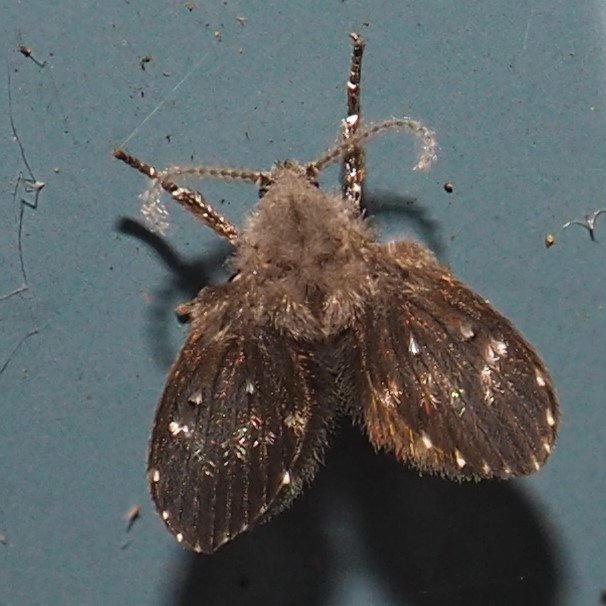
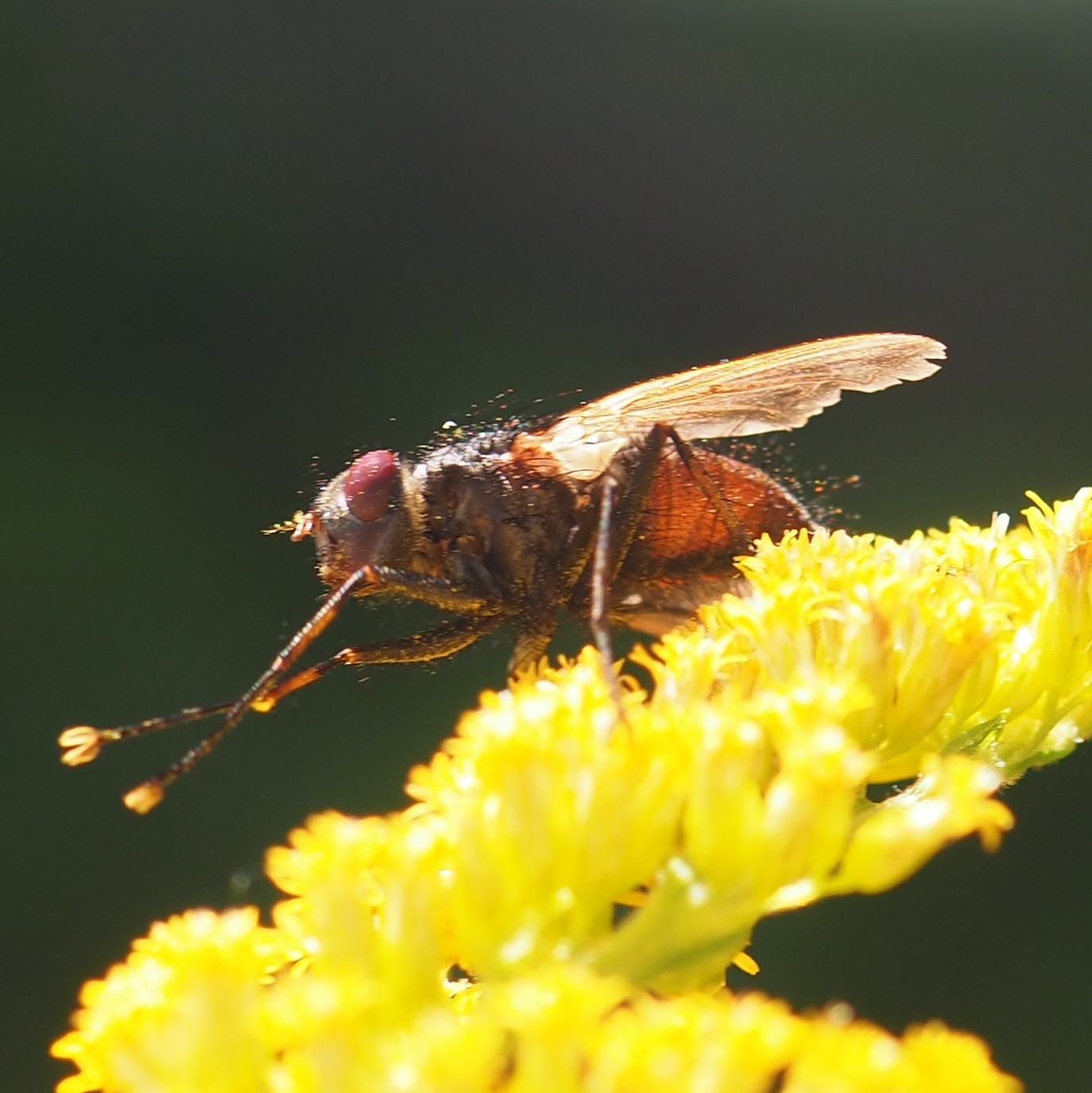
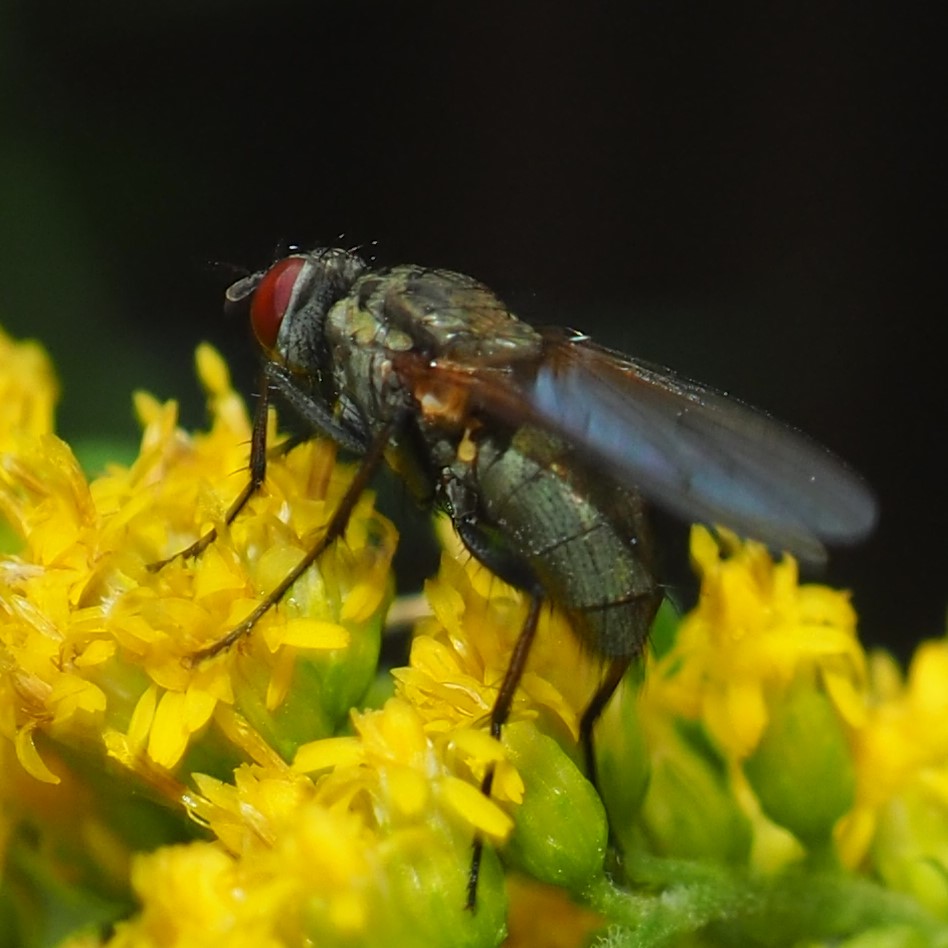
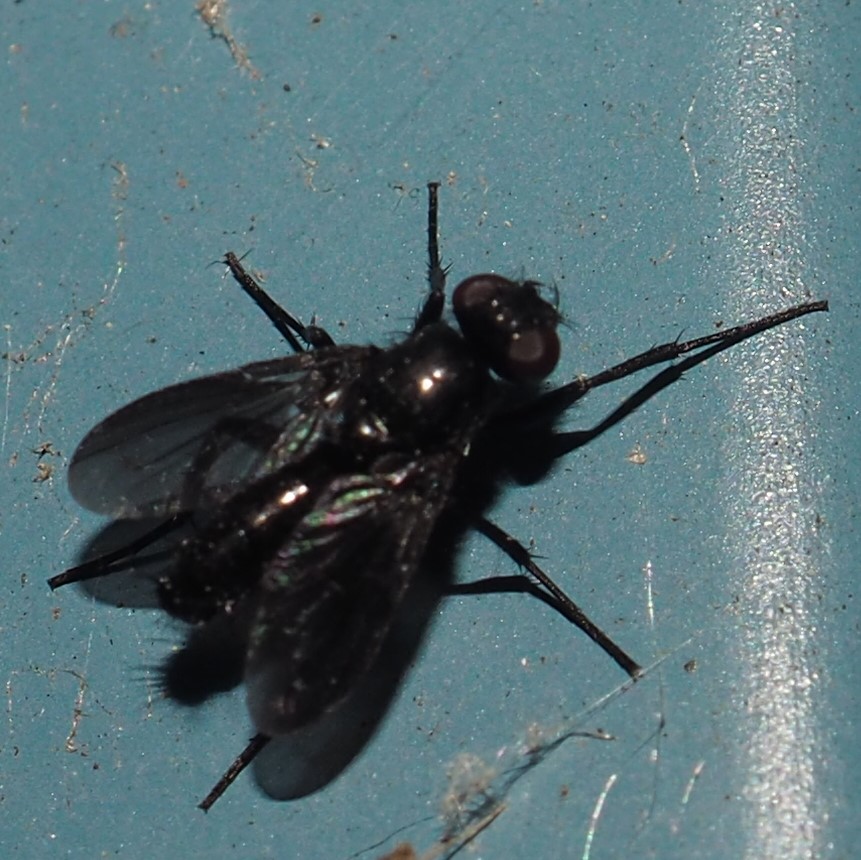
Sorry to say, I haven't seen Froggy this week. Haven't seen any Moths lately, even a Caterpillar. No Crickets, though I do hear them outside at night. But I have got one shot of a Brown Lacewing and a couple of Orthoptera and former Orthoptera. The Lacewing was wrapped around a bolt from the shop siding. The one Orthopteran was this Katydid, probably a Fork-tailed Bush Katydid, looking so lovely against the pink of this Aster. And some of you are probably wondering what I mean by "former" Orthoptera. Well, when I was a child, Orthoptera wasn't just Grasshoppers, Katydids and Crickets, but it included Cockroaches, Mantids, and quite a few other things! These last two have their own Orders now, not from social pressure but because modern methods of analysis have unblurred some of the lines. I didn't find a Cockroach but my neighbors on Fitch Street, the Vaughns, called me up the other day to ask me to come look at a Mantis they found. I was surprised to see it was not a Carolina Mantis or a Chinese Mantis, the only two I'm familiar with around here. It seems nice and plump and at this time of year, it is probably a pregnant female. I've just gotten back feedback from Brandon Woo of iNat. It's a European Mantis, Mantis religiosa.
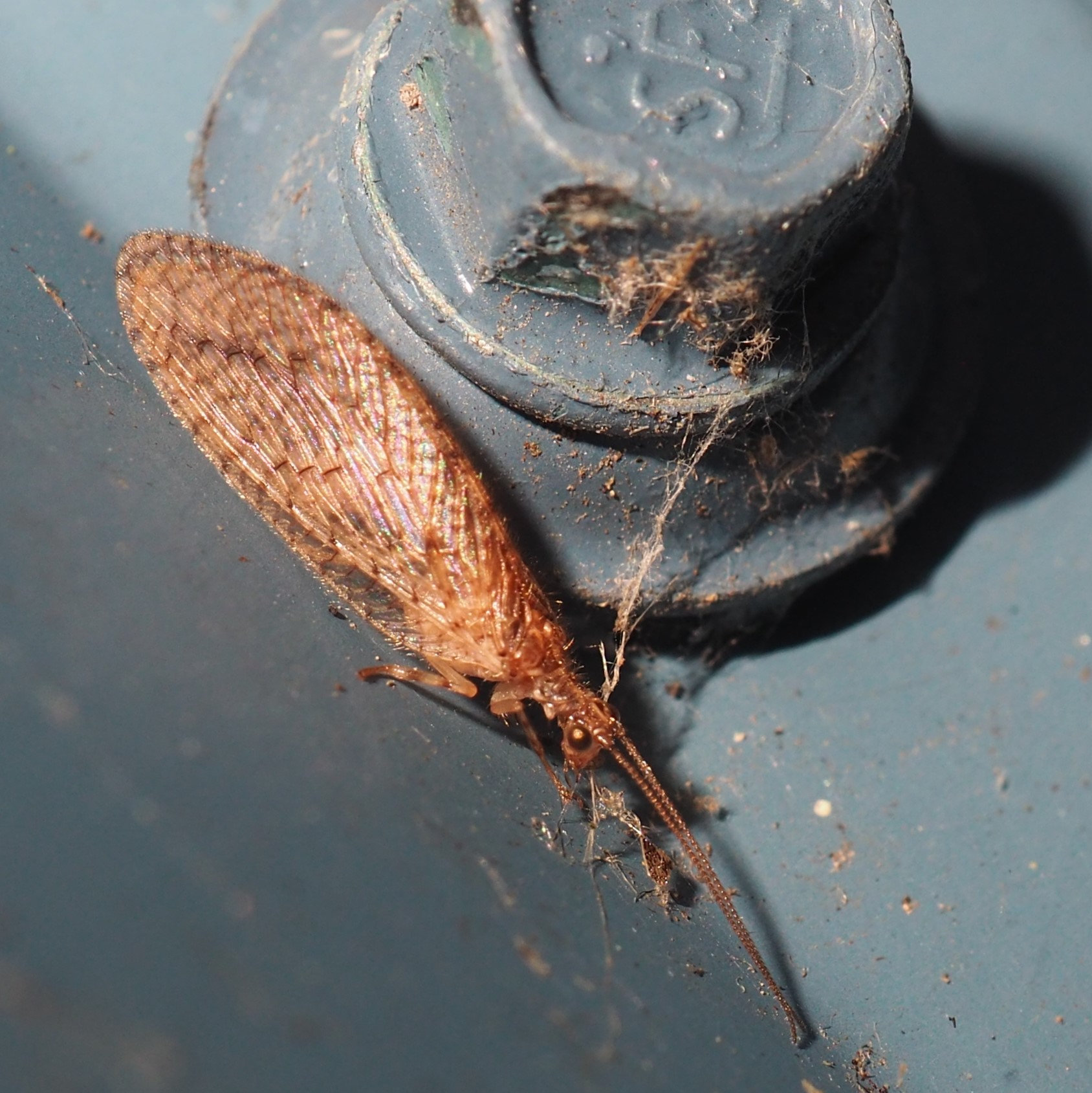
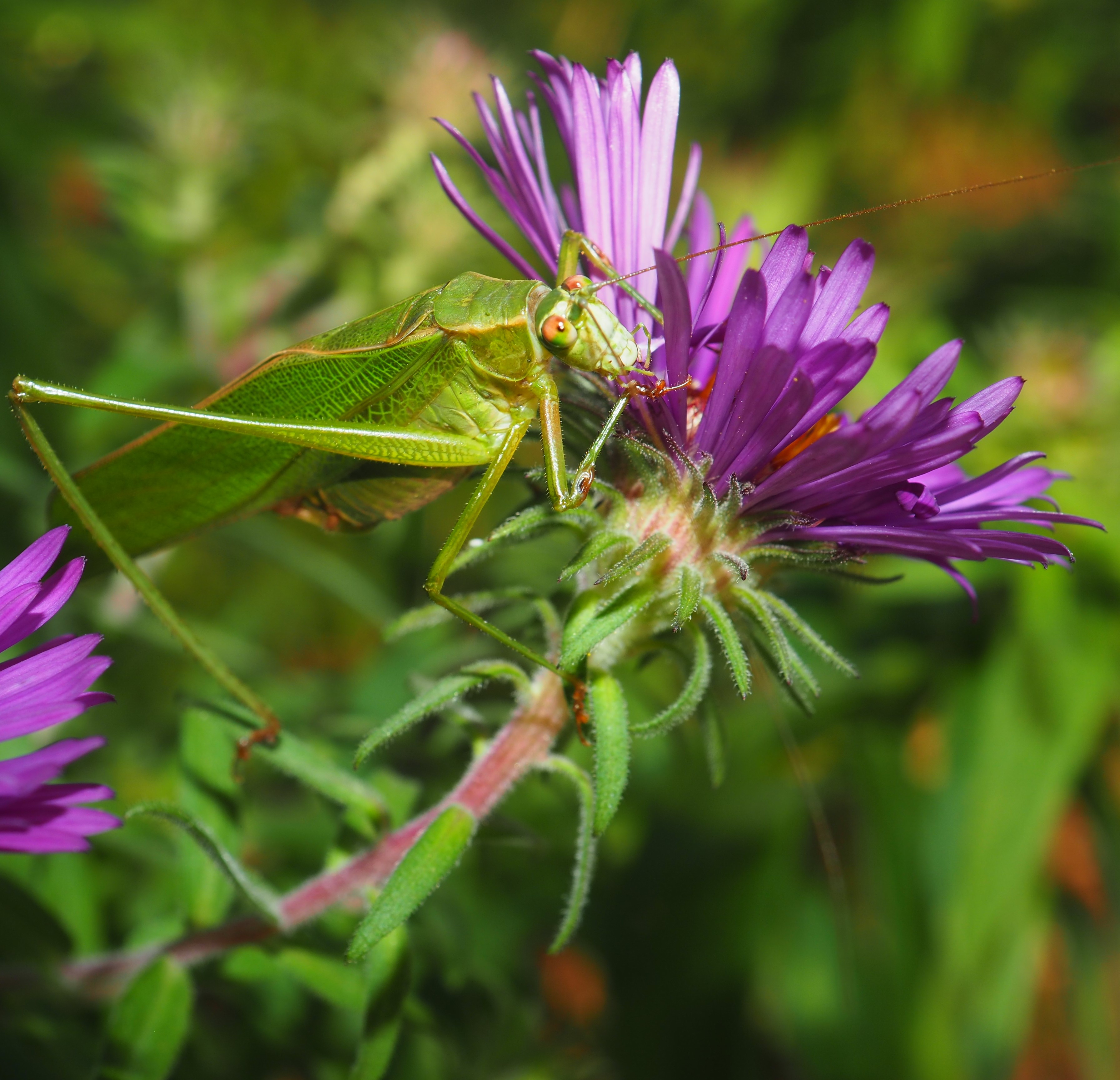
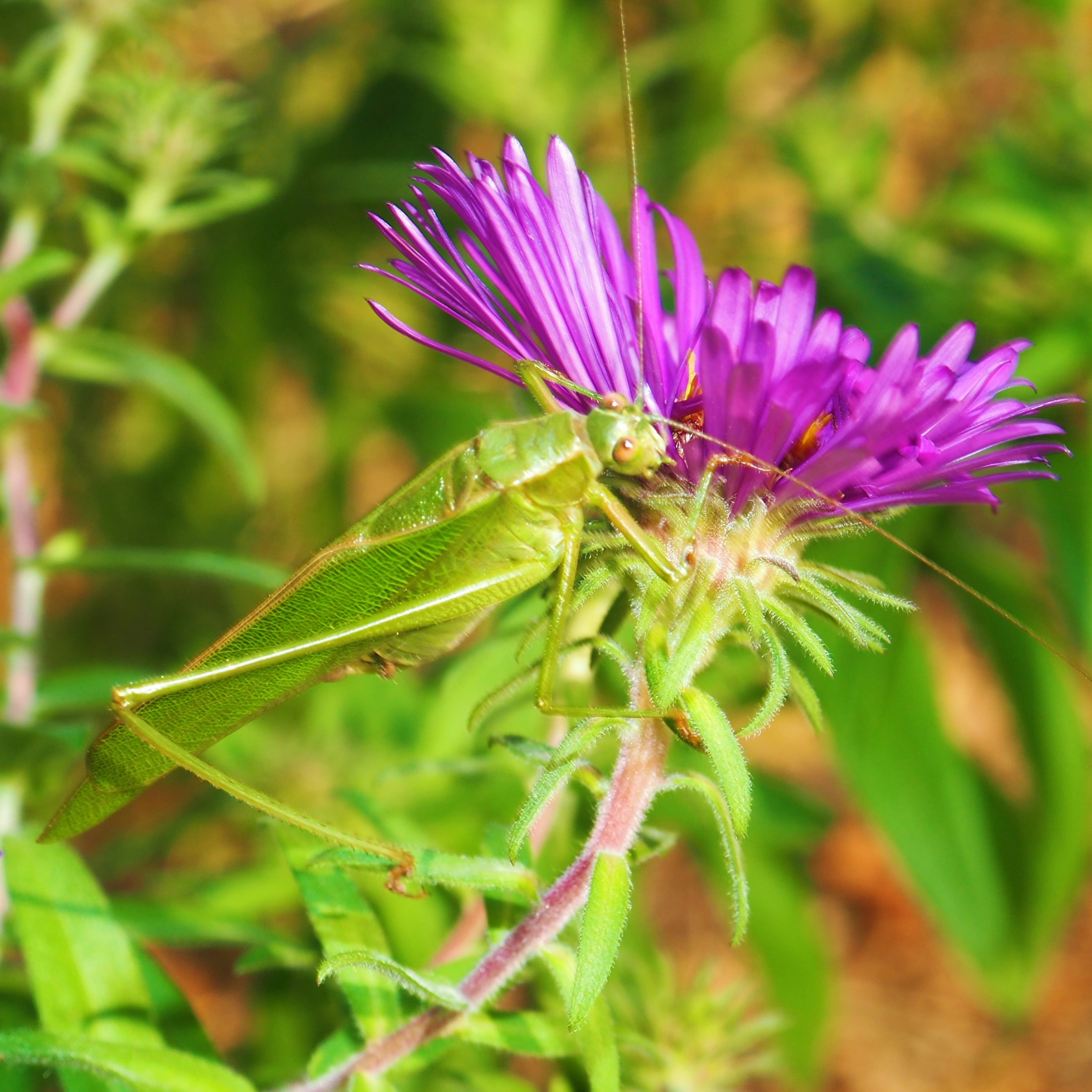
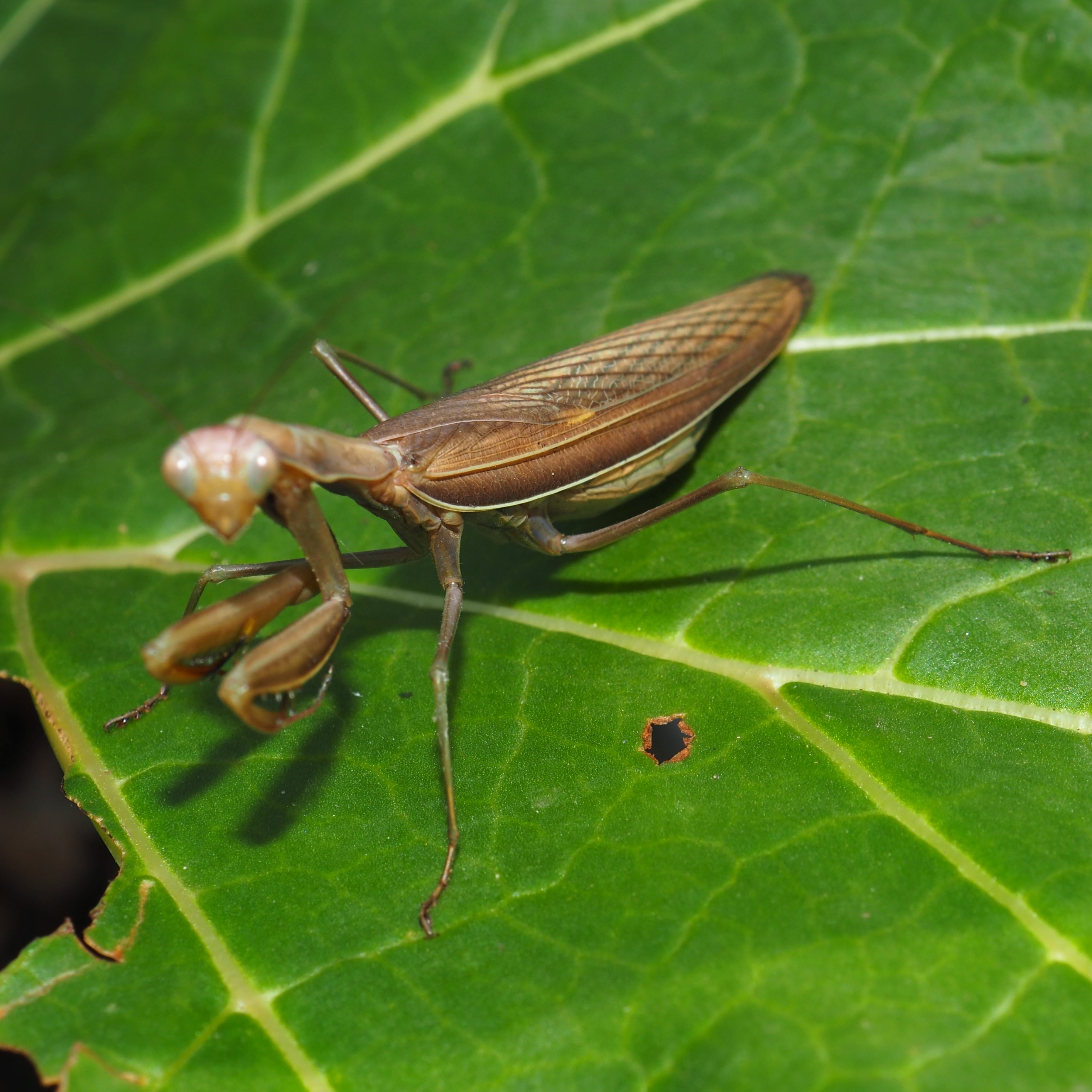
So let's take a walk through the late-season Flowers. The Goldenrod seemed to bloom quickly and start to turn brown. It attracted those strange Ambush Bugs (all gone), the Goldenrod Soldier Beetle (all gone), and the Locust Long-horned Borer Beetle (all gone), and many kinds of wasps (many still here). Its golden color is so startlingly beautiful, I almost can't bear to see it go. Here's one picture with two Wasps, of which the big one in the foreground is a Dark Paper Wasp; and a small unidentified Bee. The Japanese Anemone is still blooming strongly, and here is also a medley of Purple and Pink New England Asters.
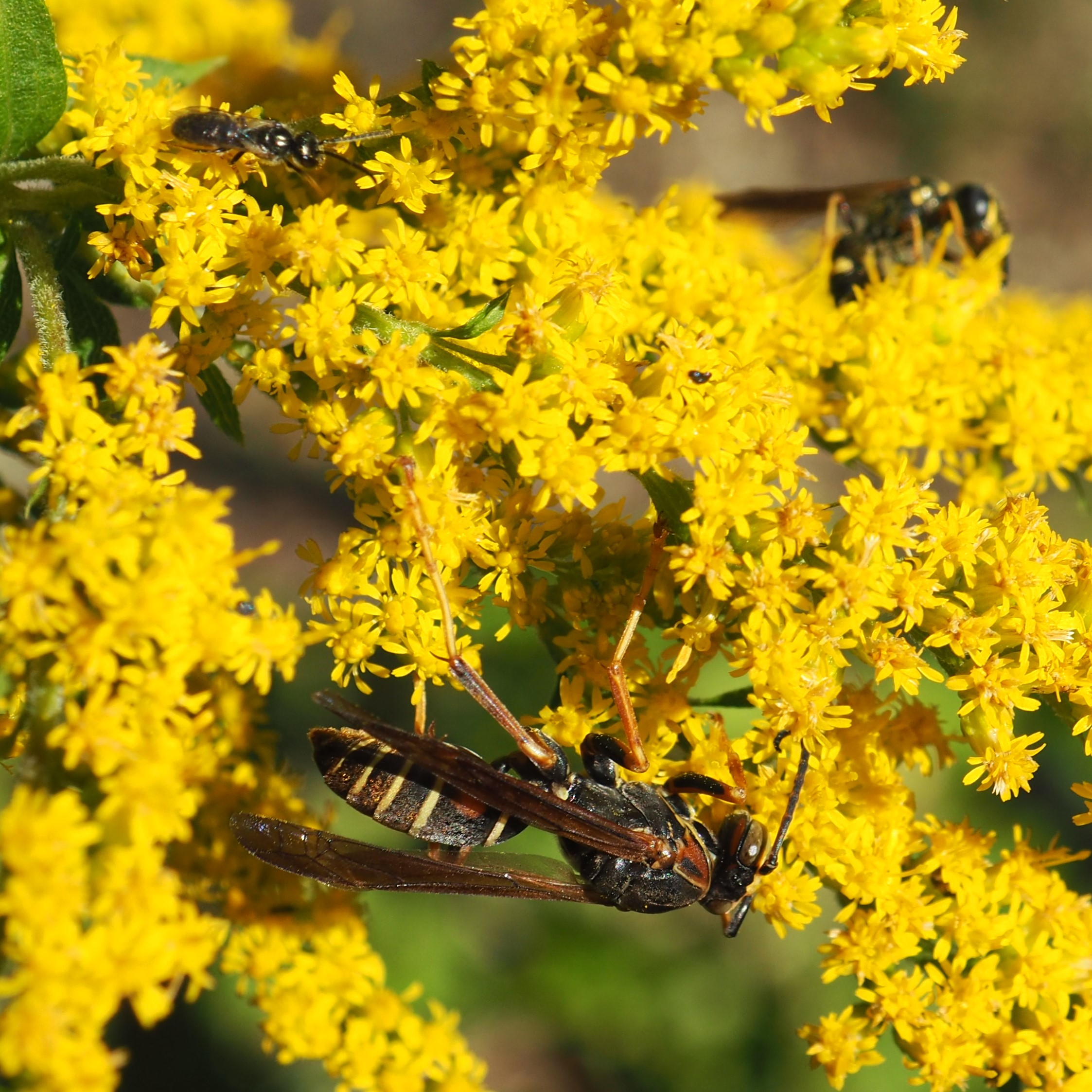
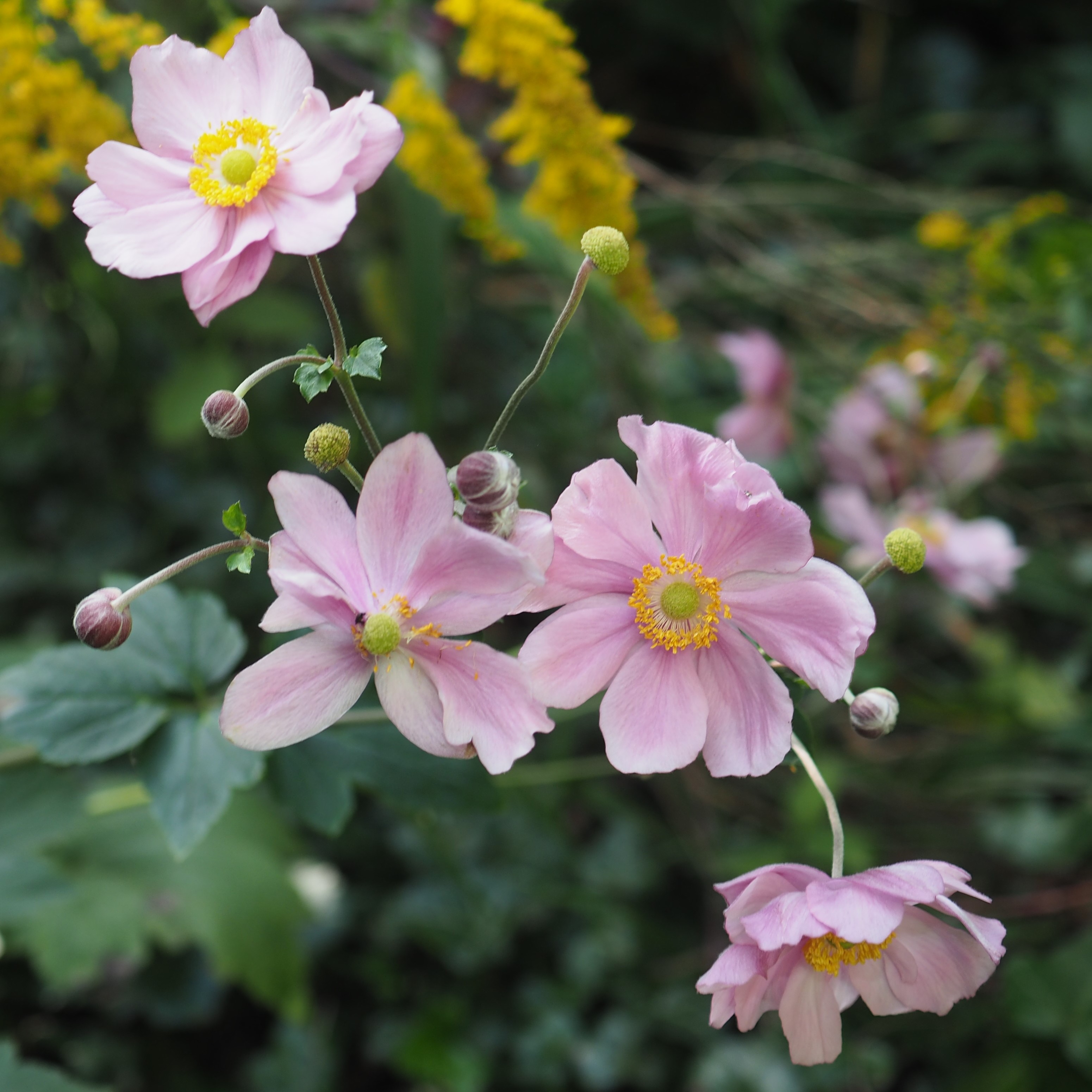
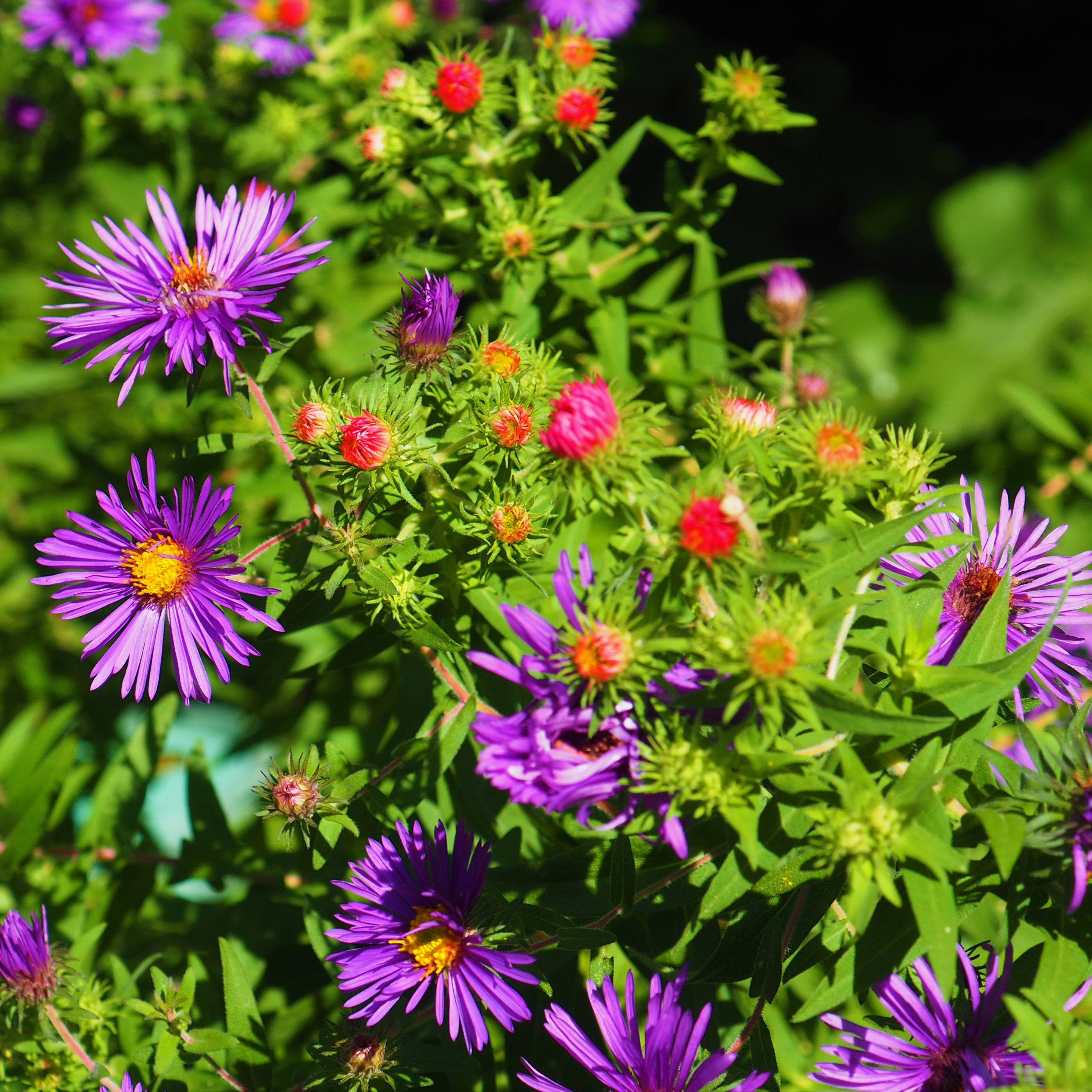
Here are some of the Aster Colors - they never cease to amaze me with their beauty and faithfulness.
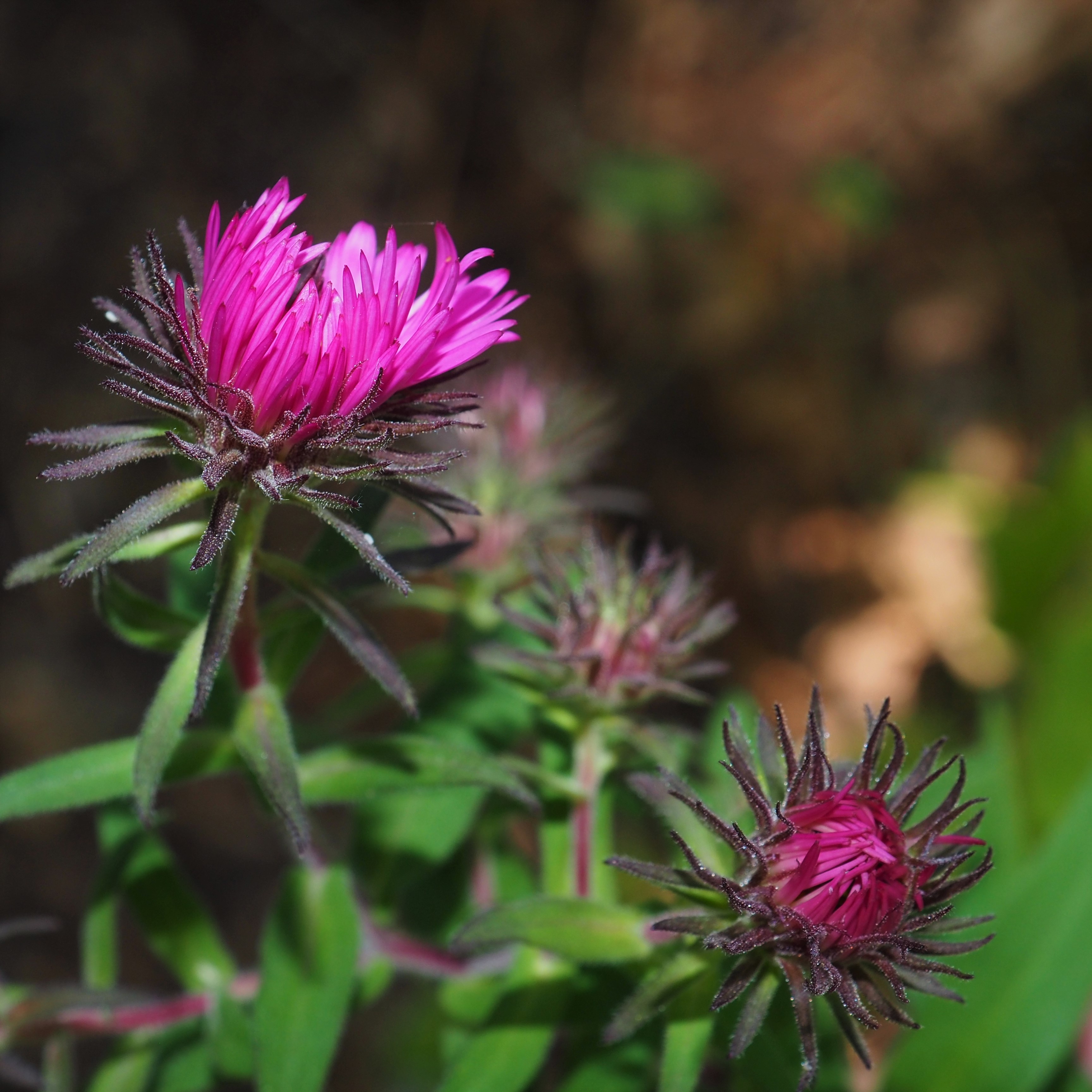
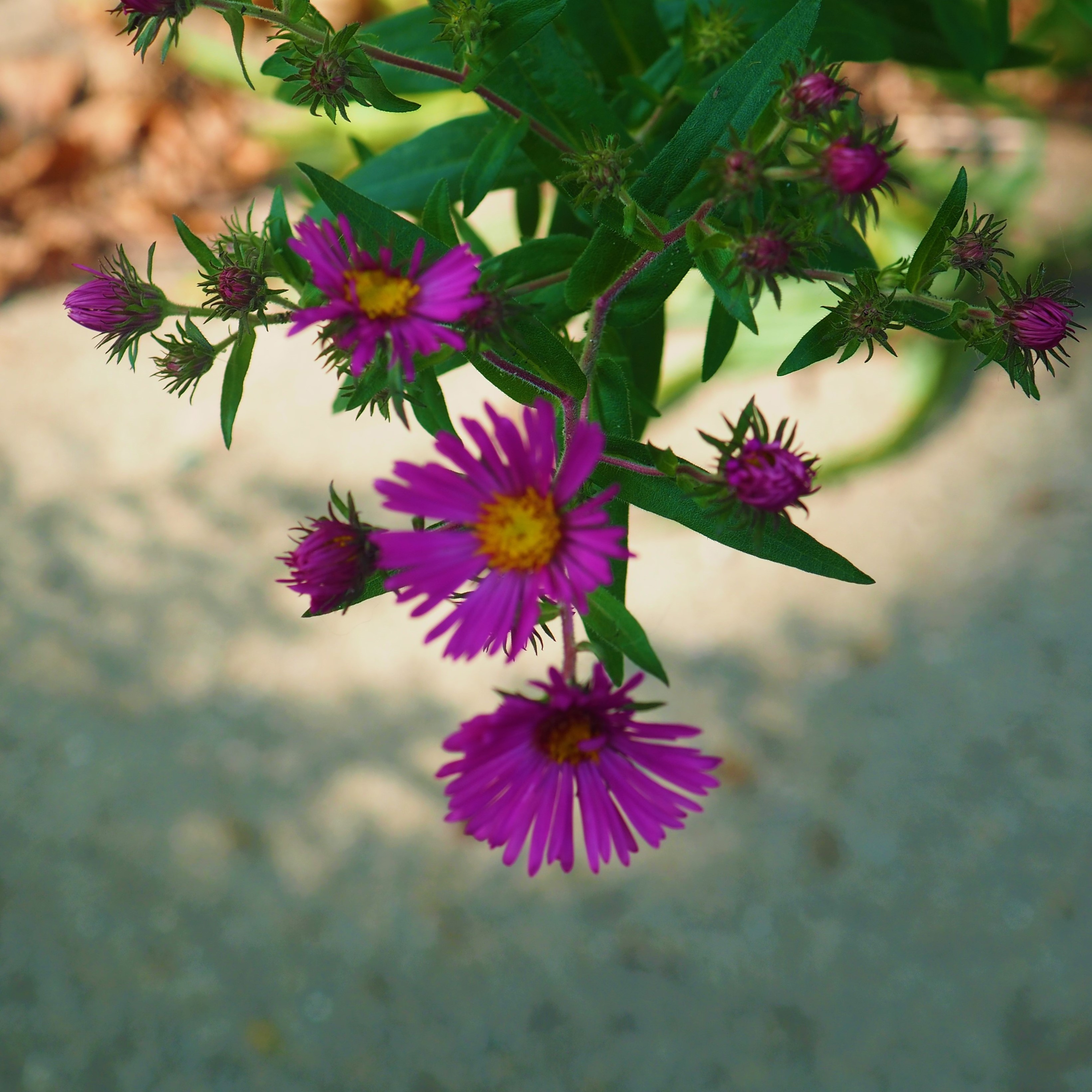

The Climbing Fumitory is still pretty at the top, even though it has had an accident and broken off at the bottom of its 5 foot vine. One of my new friends from iNat suggests that it probably has produced some seed farther down (I can't tell but hope it's true), and we're hoping that it will eventually bloom again. It's so hard to know - it is officially a biennial but the "bi" may stretch into quite a variety of numbers of years between manifestations. Meanwhile the Phlox decided to have a re-bloom. See how different it looks in different lights!
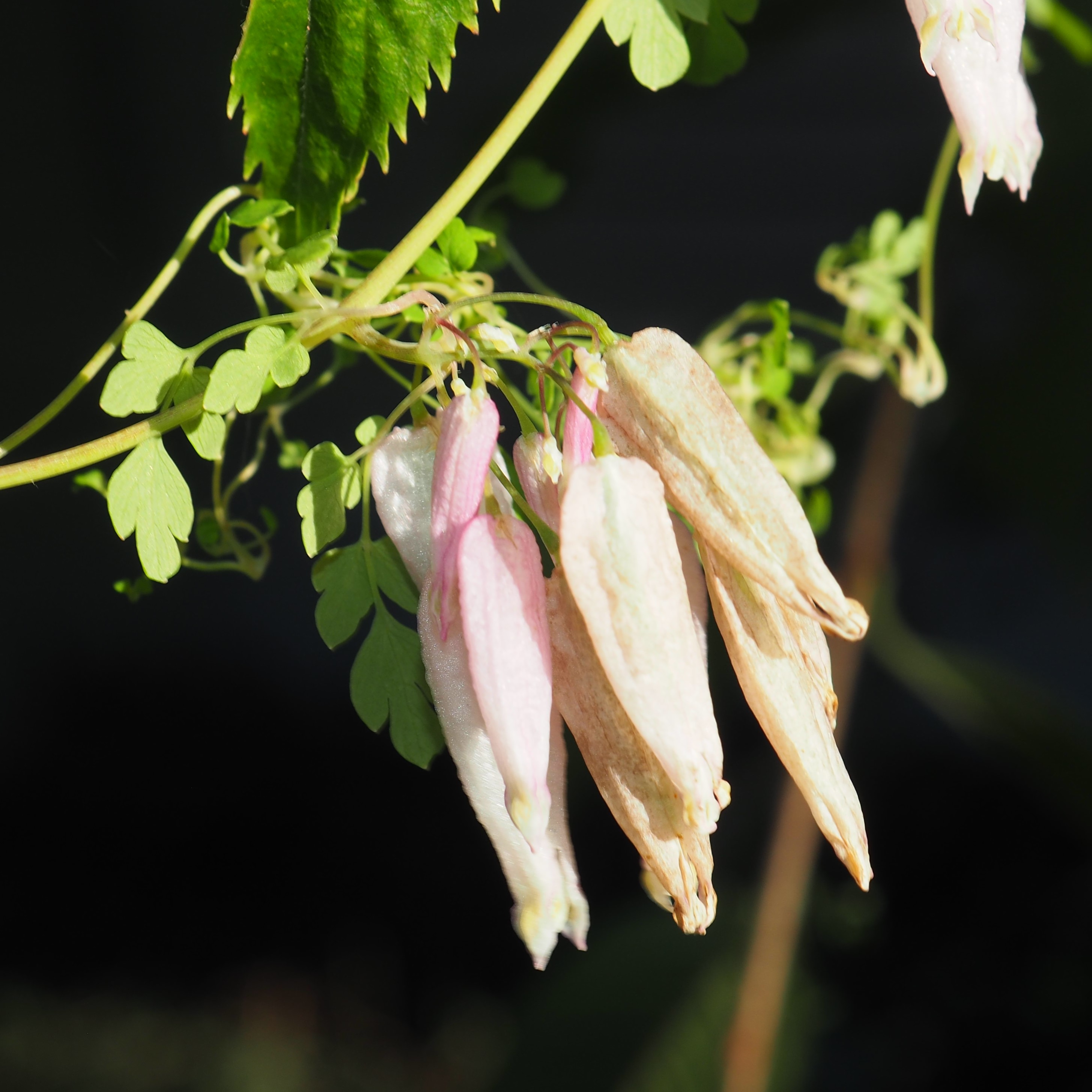
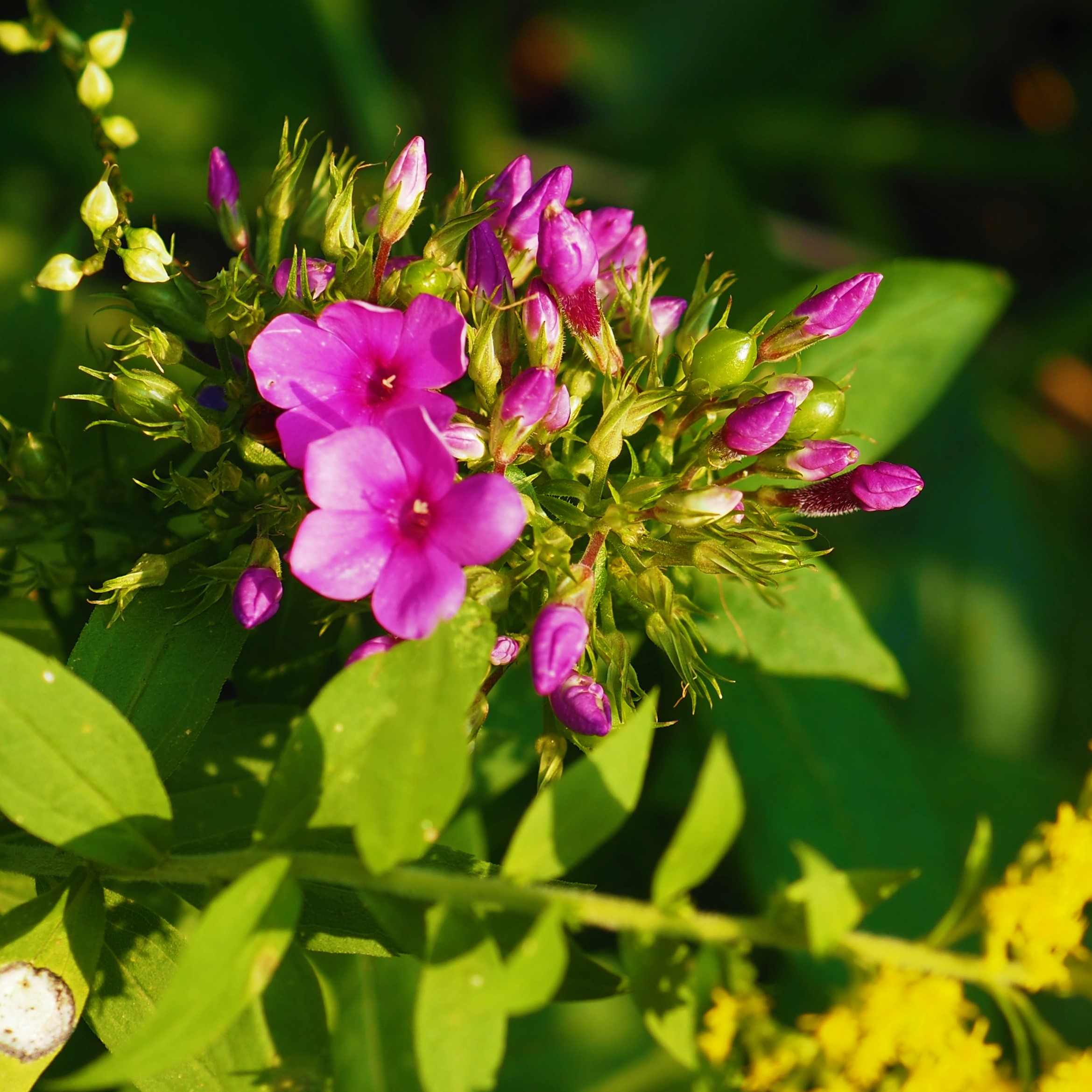
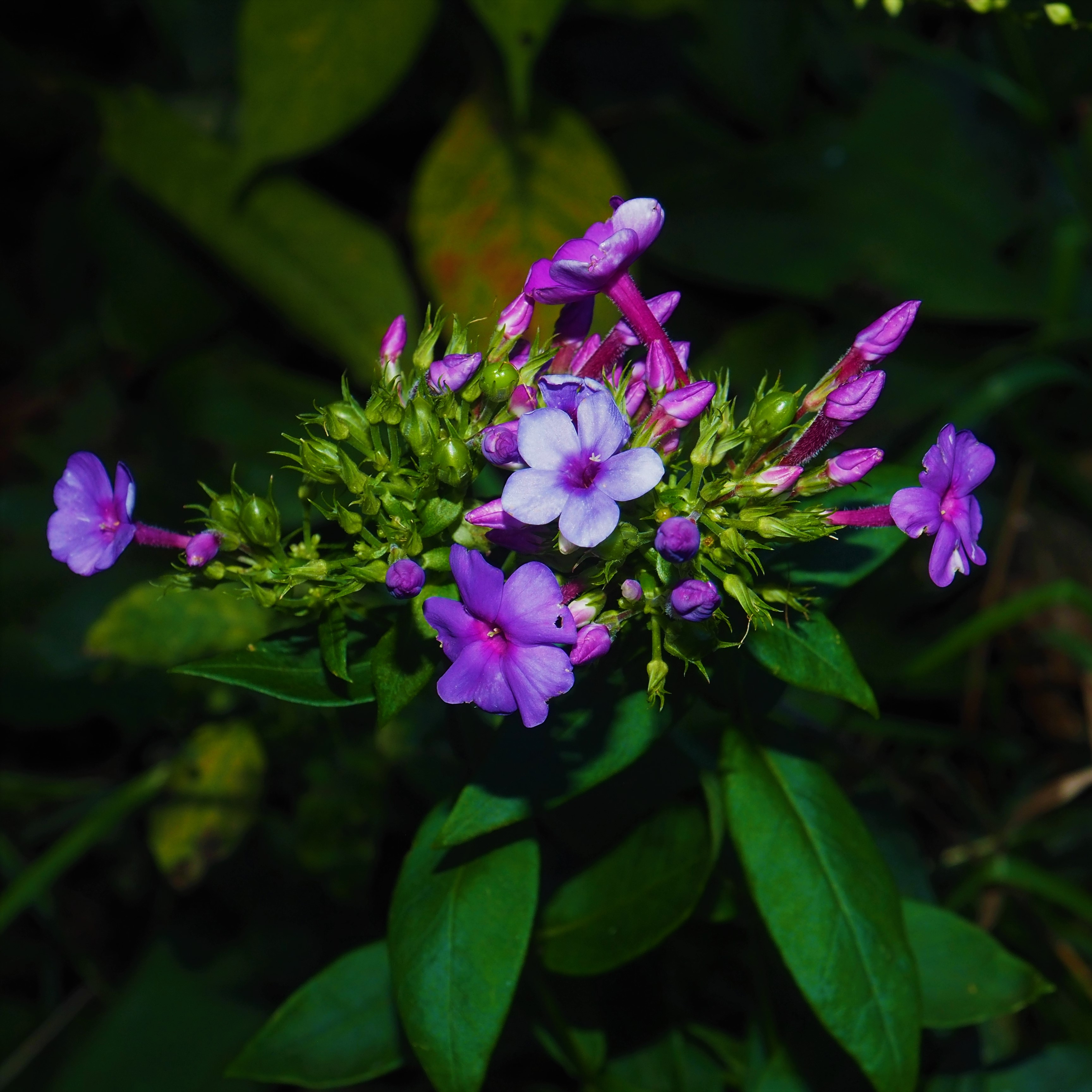
A few more odd animals! My neighbor Debbie brought over this salamander that had outgrown her schoolroom. It ambled over to the pond and moved in, and I haven't seen it again. I hope it and the other fishes and living things will survive the re-dig if it happens. Maybe I will have to get a re-patch on the shallow area liner and wait till next year to do the proper re-dig. It is taking so long for the workmen to get around to it! Meanwhile the trapping operation turned up Rocky and Pogo. Finally, on the other side of the pond skulks a black cat who looks brown in the sunlight.
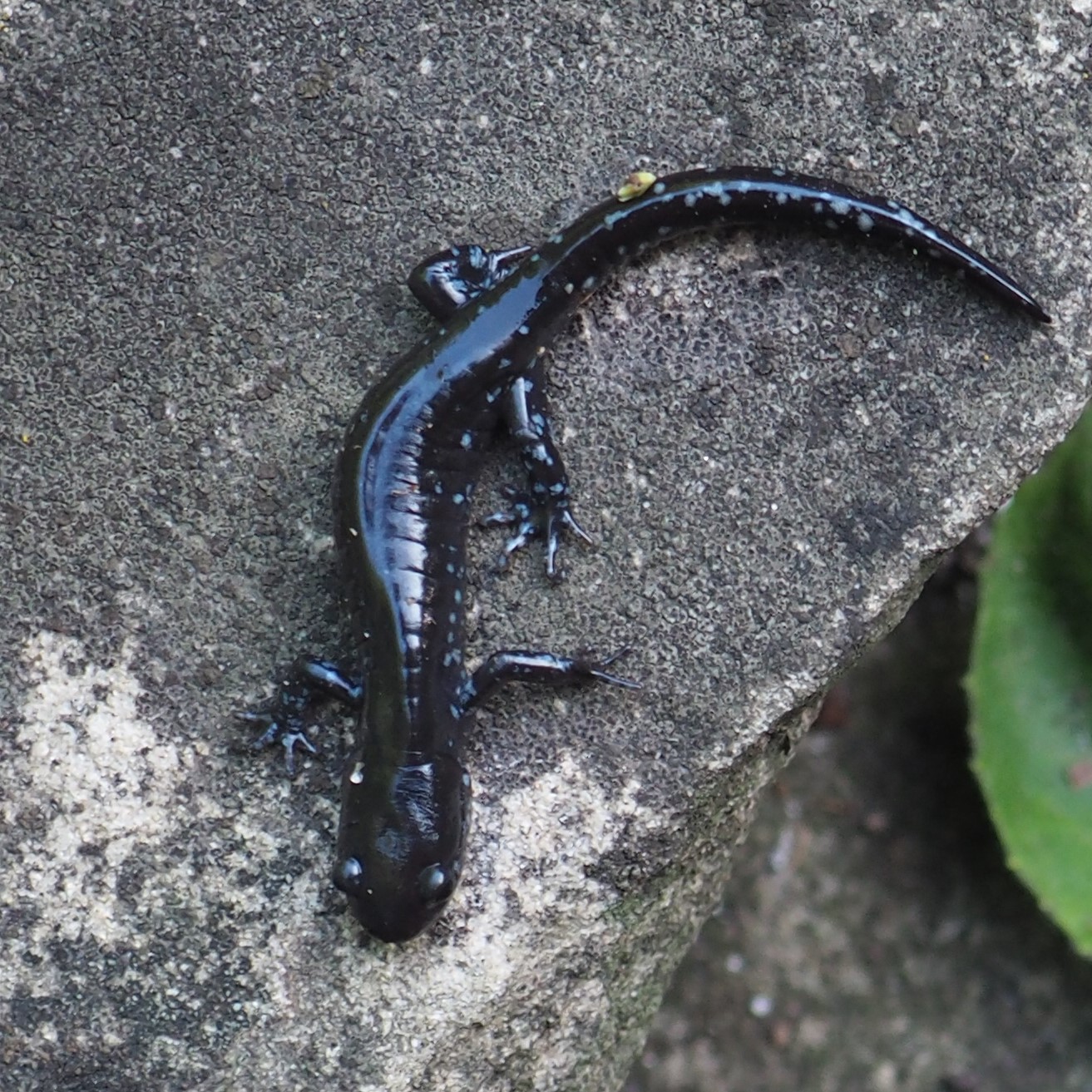
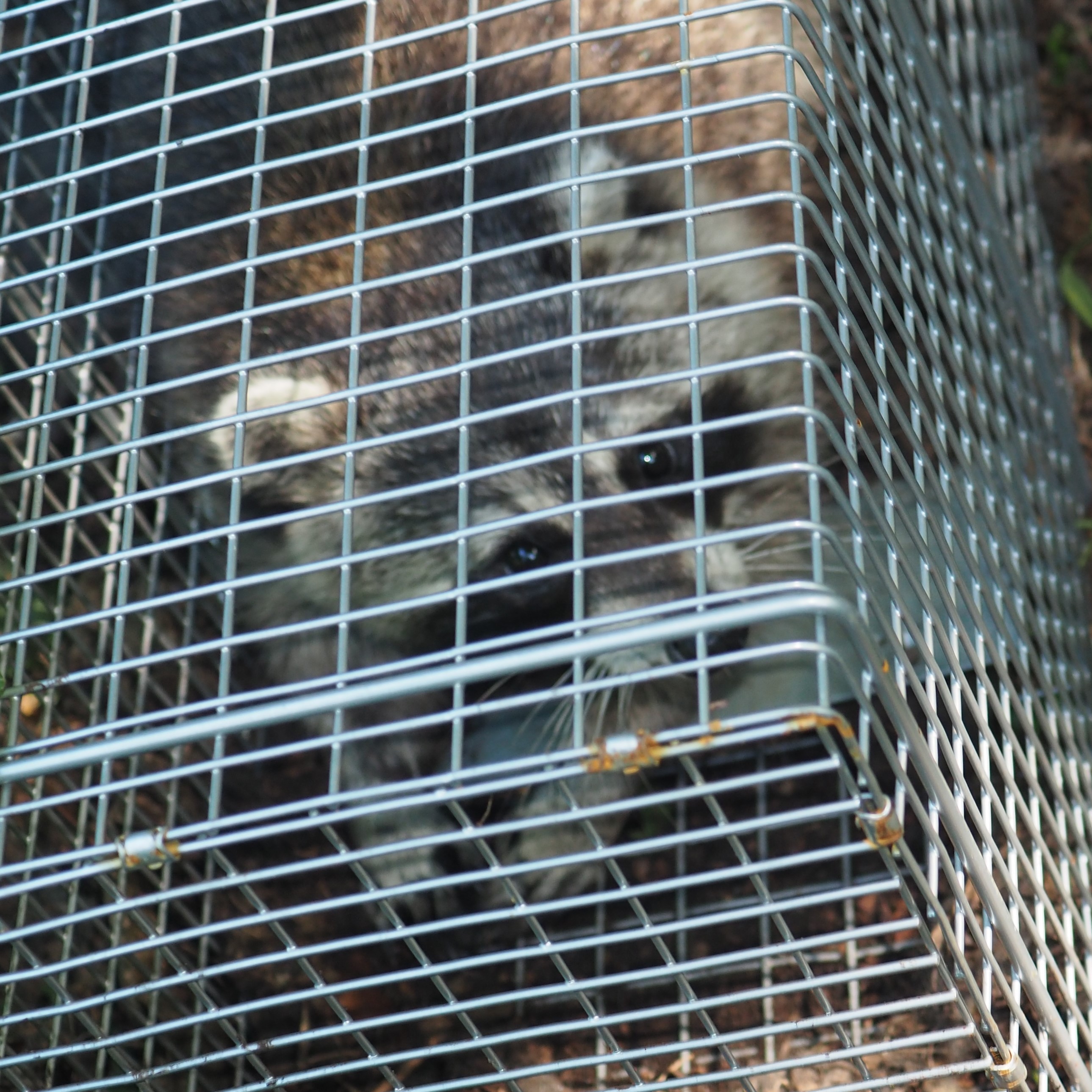 i
i

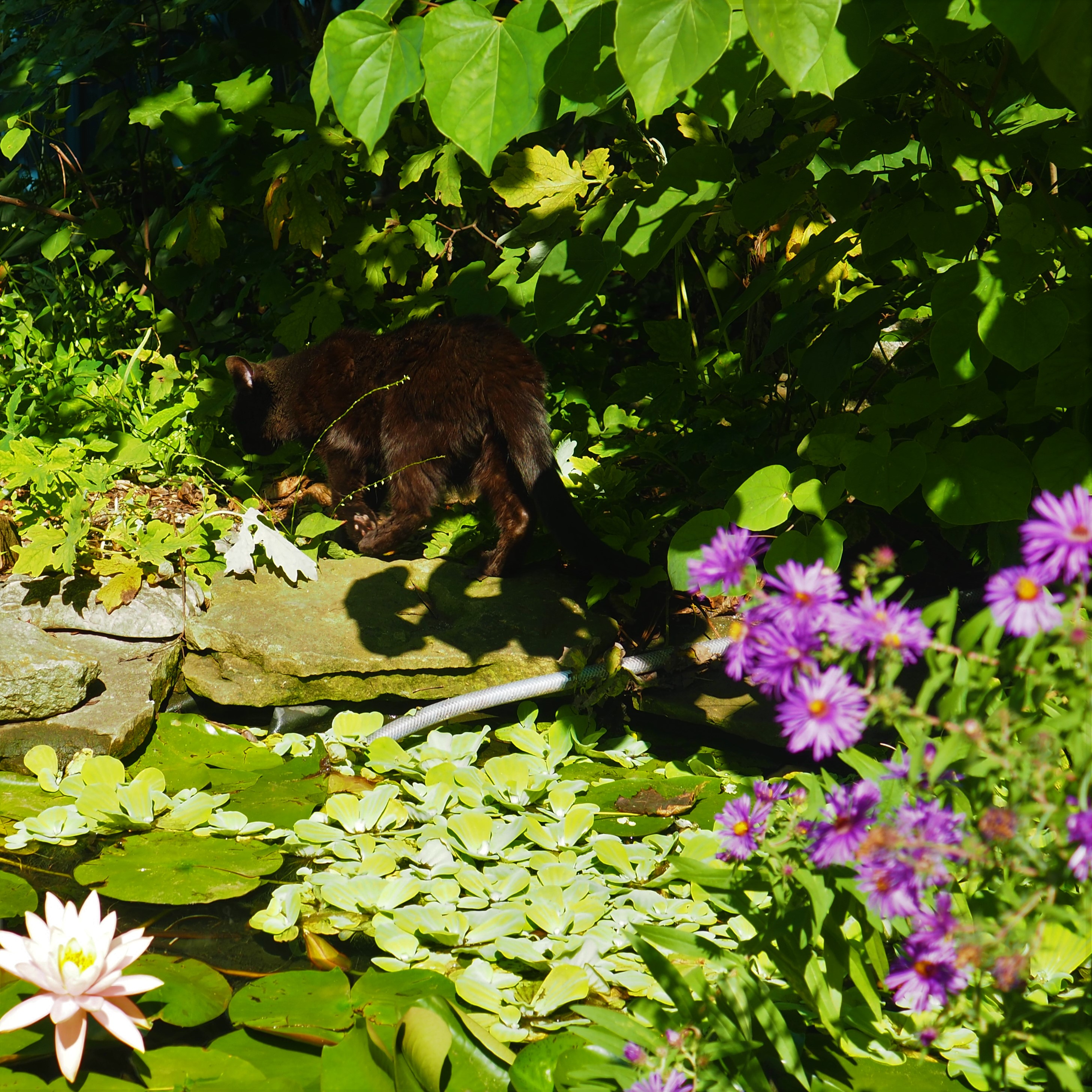
Let's take a loving look at a few Spiders. One good thing about the Asters is that they attract a lot of little Crab Spiders. In picture 3, right above the Northern Crab Spider - is that a Prey or a Predator?
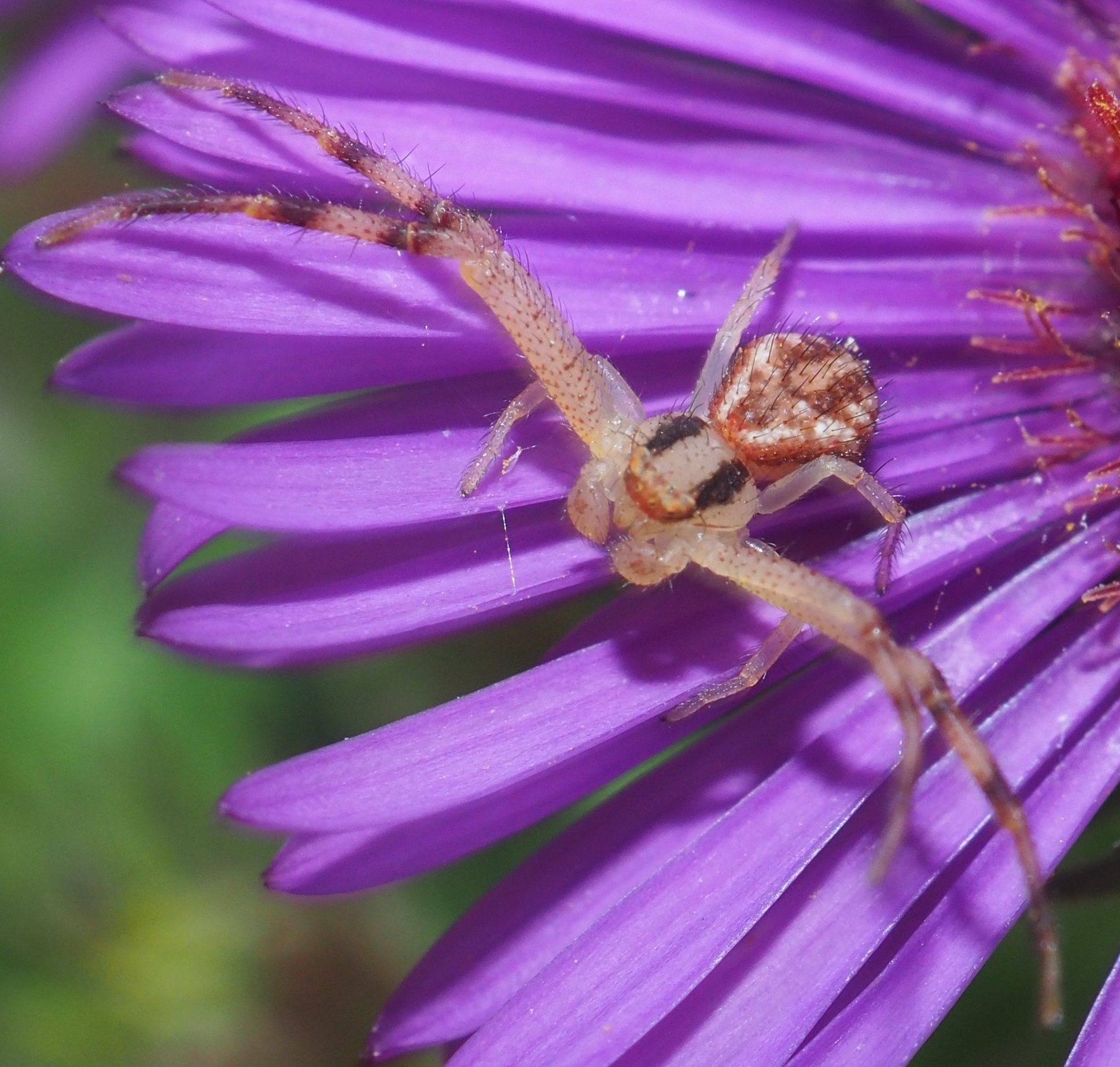
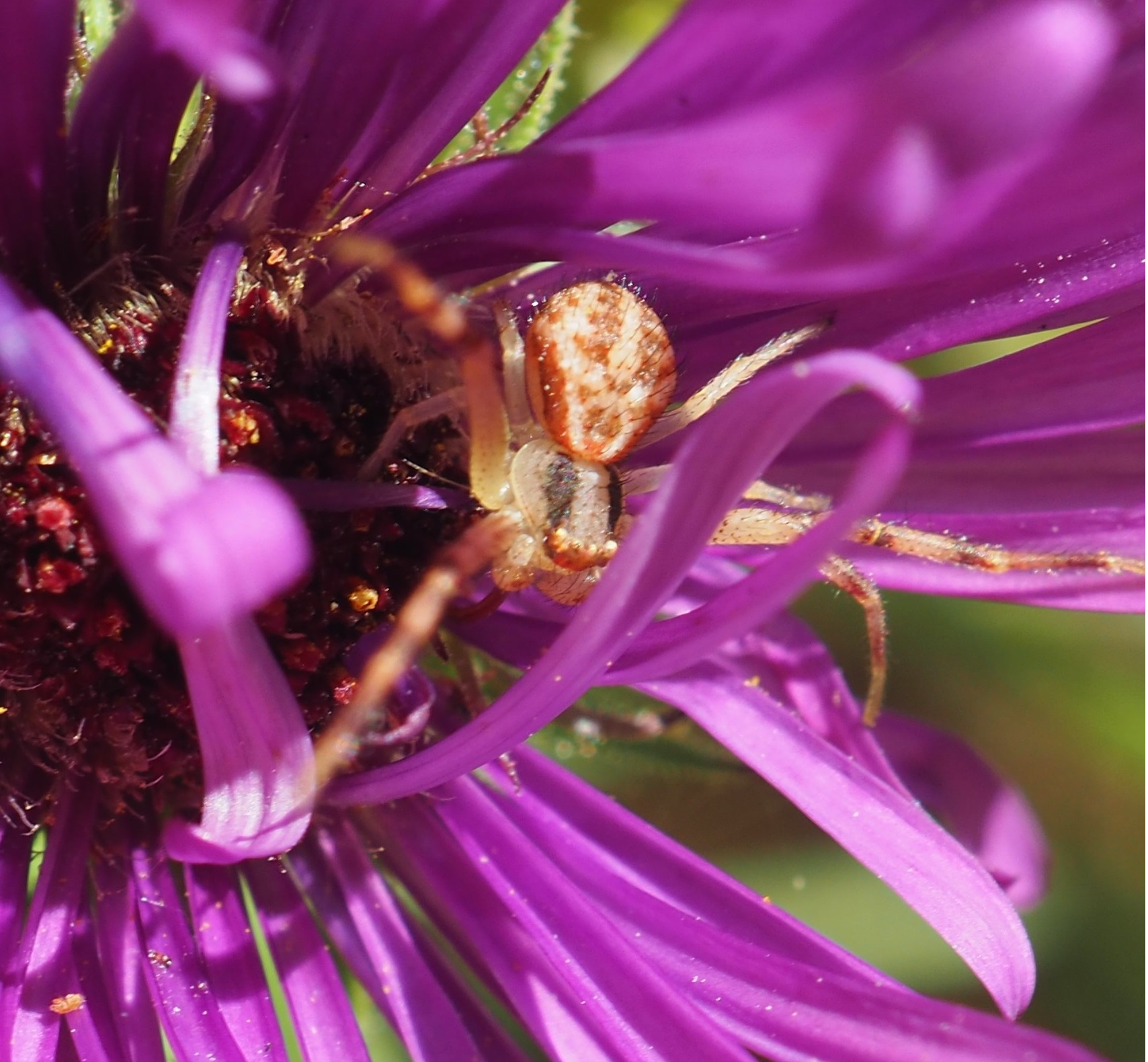
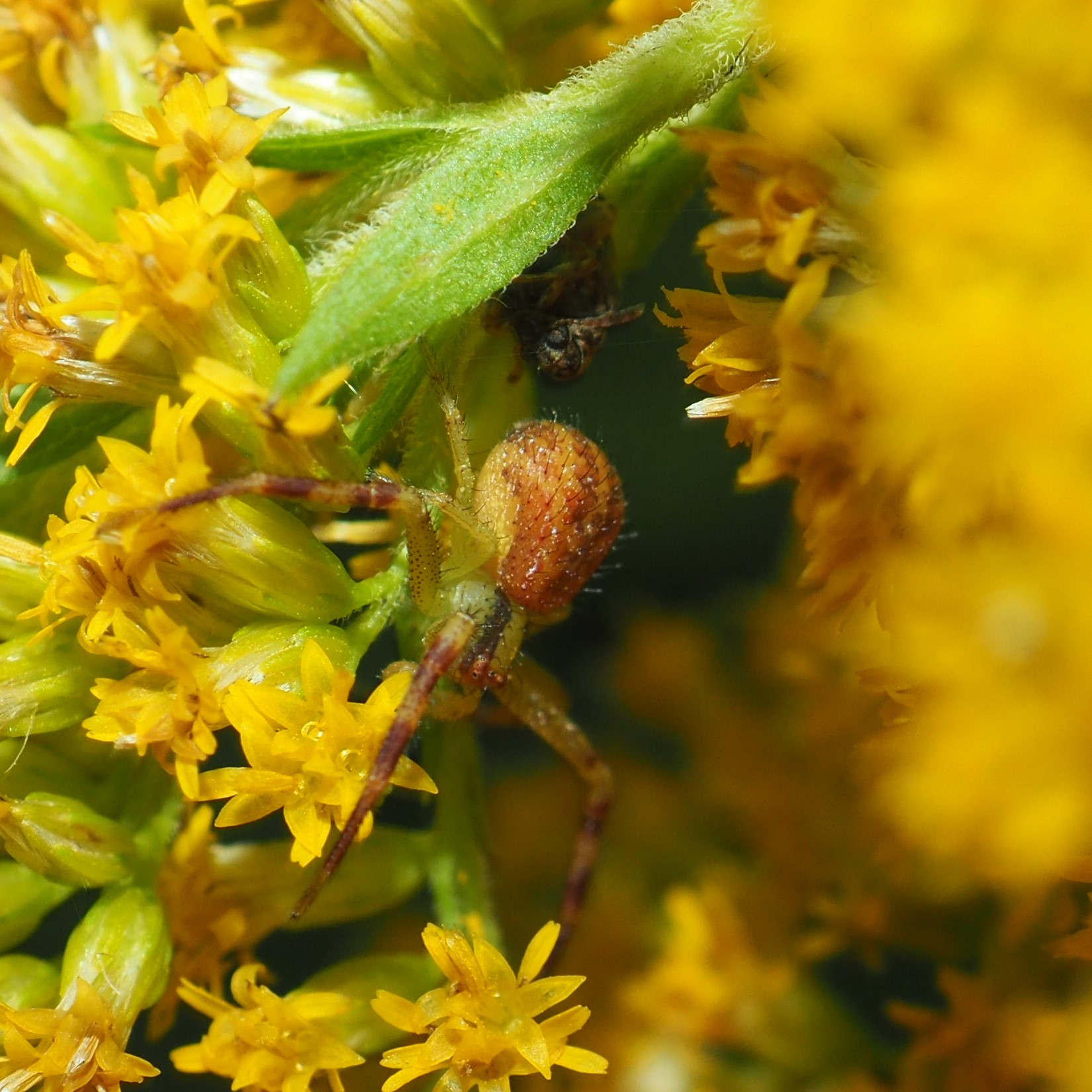
Here are a couple of Cobweb Spiders. The third one, says Matt Claghorn, is only POSSIBLY a two-spotted Cobwebber.
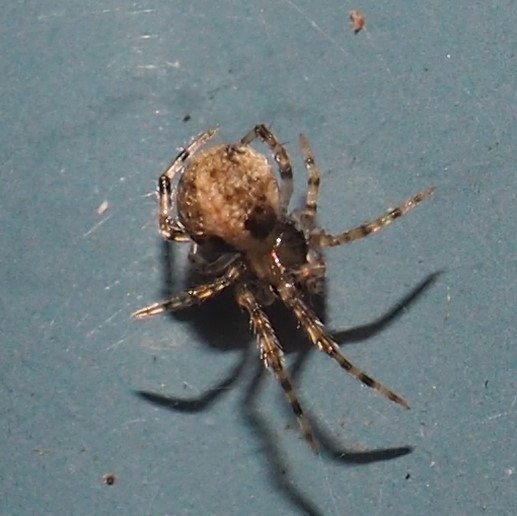
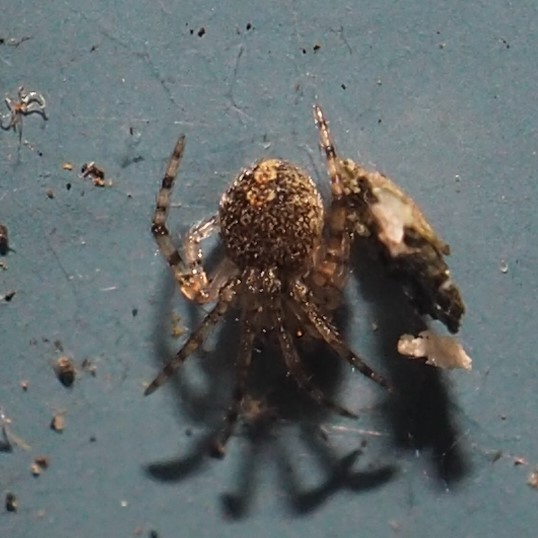
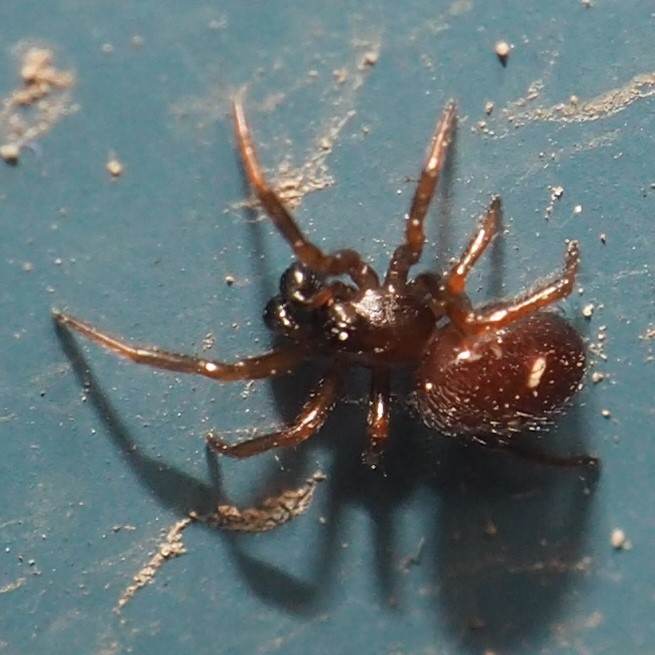
Here's that Euryopis Spider again (two shots). Still don't know the species. The third one may be a ventral (tummy) view of a Common House Spider. The shape is right.
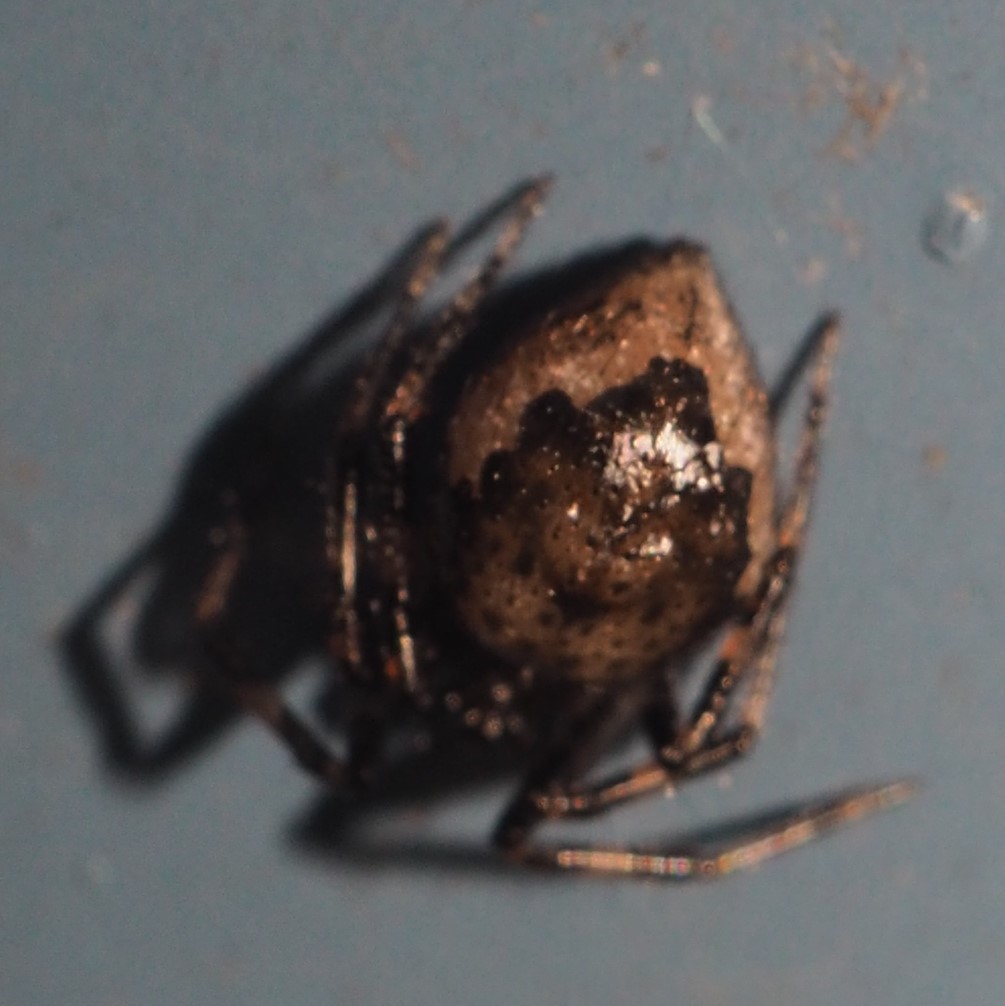
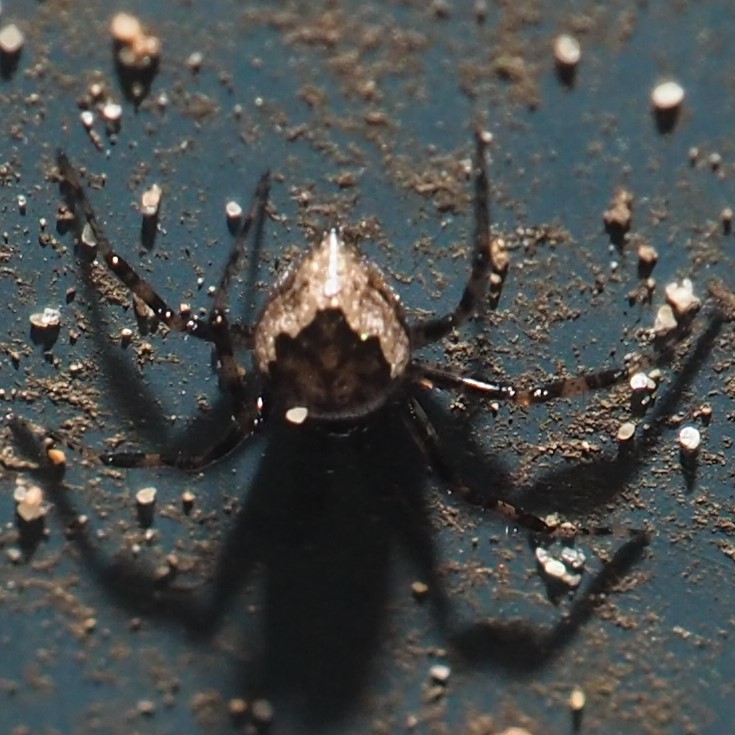
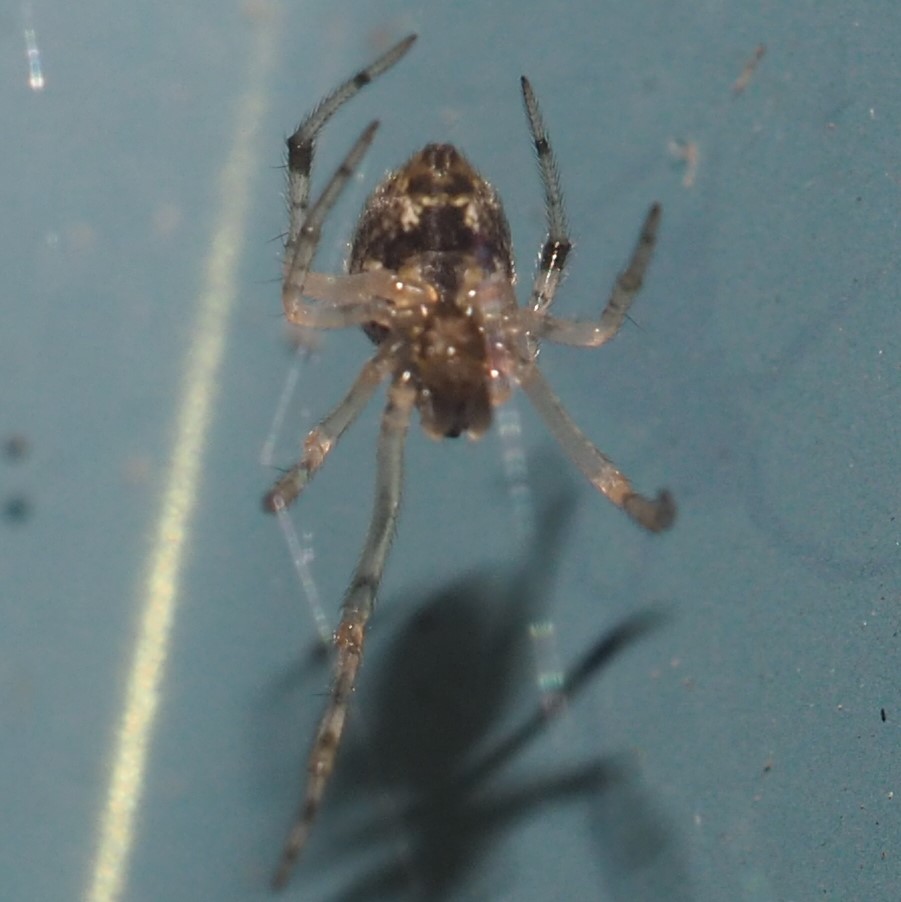
The other day, as I was opening the back door, I found this huge Grass Spider between the door and the outer storm door. I hadn't seen a large spider in some time, so was doubly delighted when I closed the outer door and spied this very large American Nursery Web Spider, which seems to be tiptoeing her way outta here. The mystery in picture 3 was very near the Nursery Web Spider, so I'm wondering if it might not be her eggs...

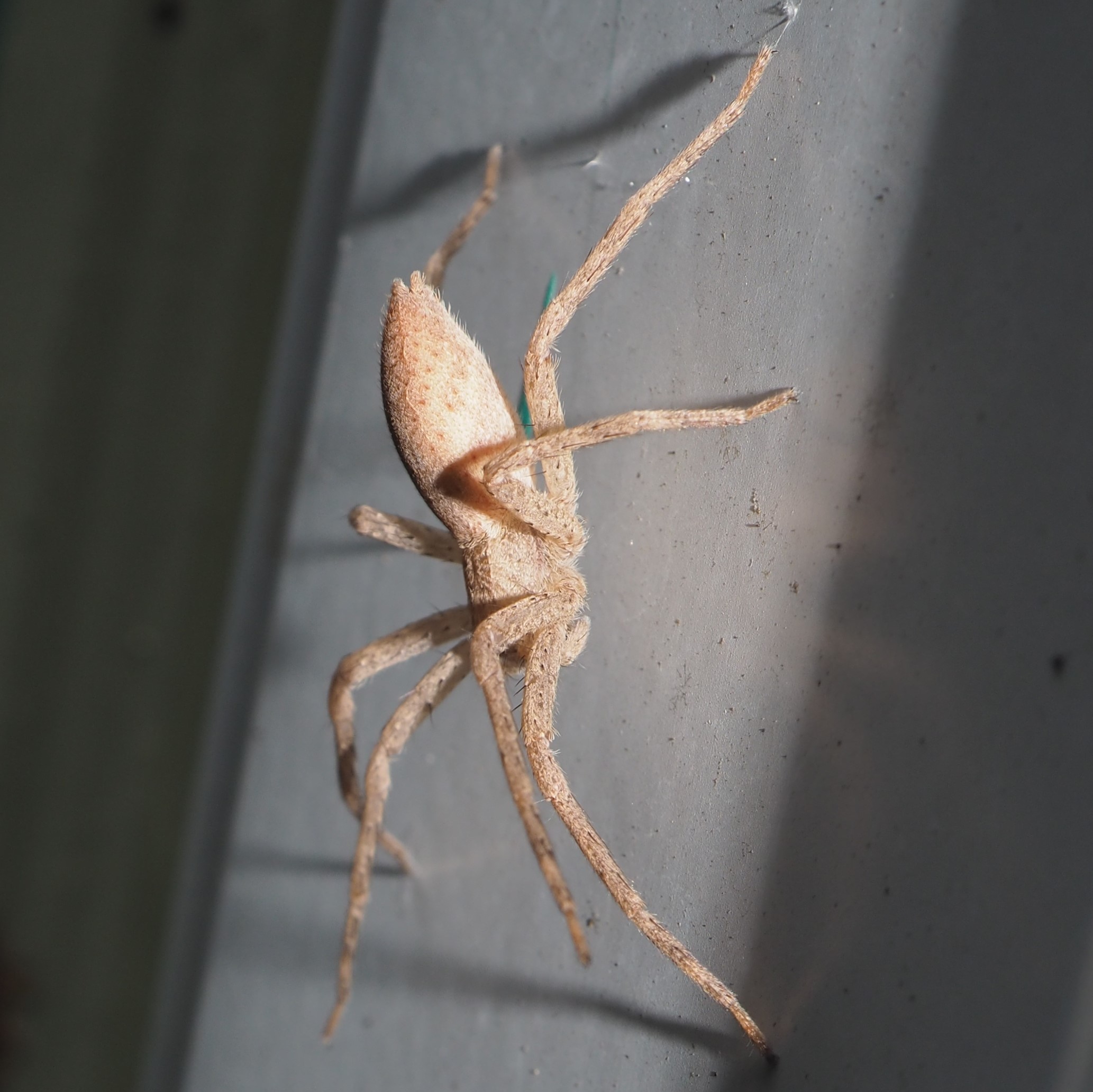
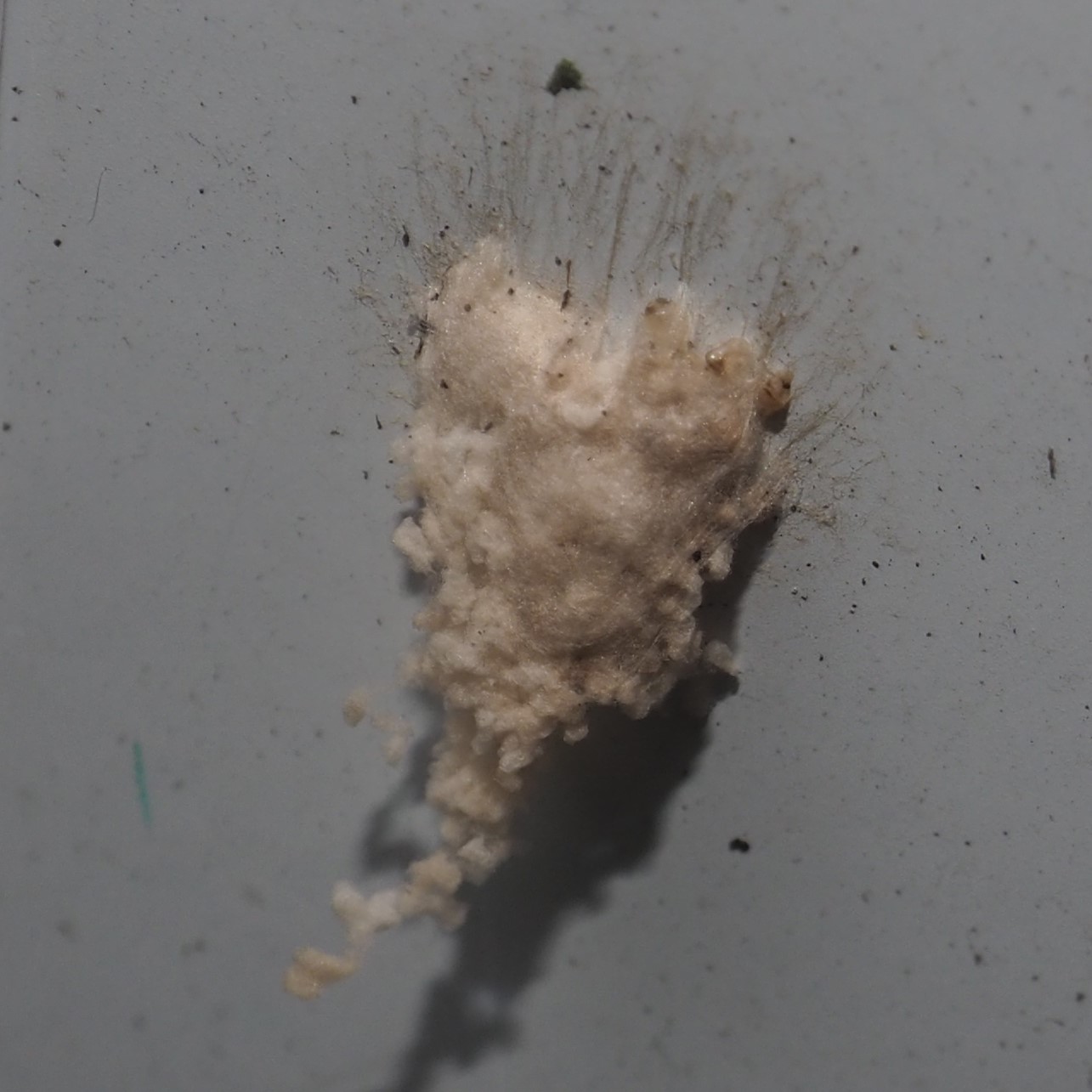
So now we move to the Wasps. Usually I see a few wasps a week on the Wall of Fame. But these weeks different kinds have moved into the Goldenrod. This first tiny Wasp is called a Bee Wolf, I suppose because they eat some kinds of little bees. I spot them by the little dashes that ring the back of their head, as in picture 3.
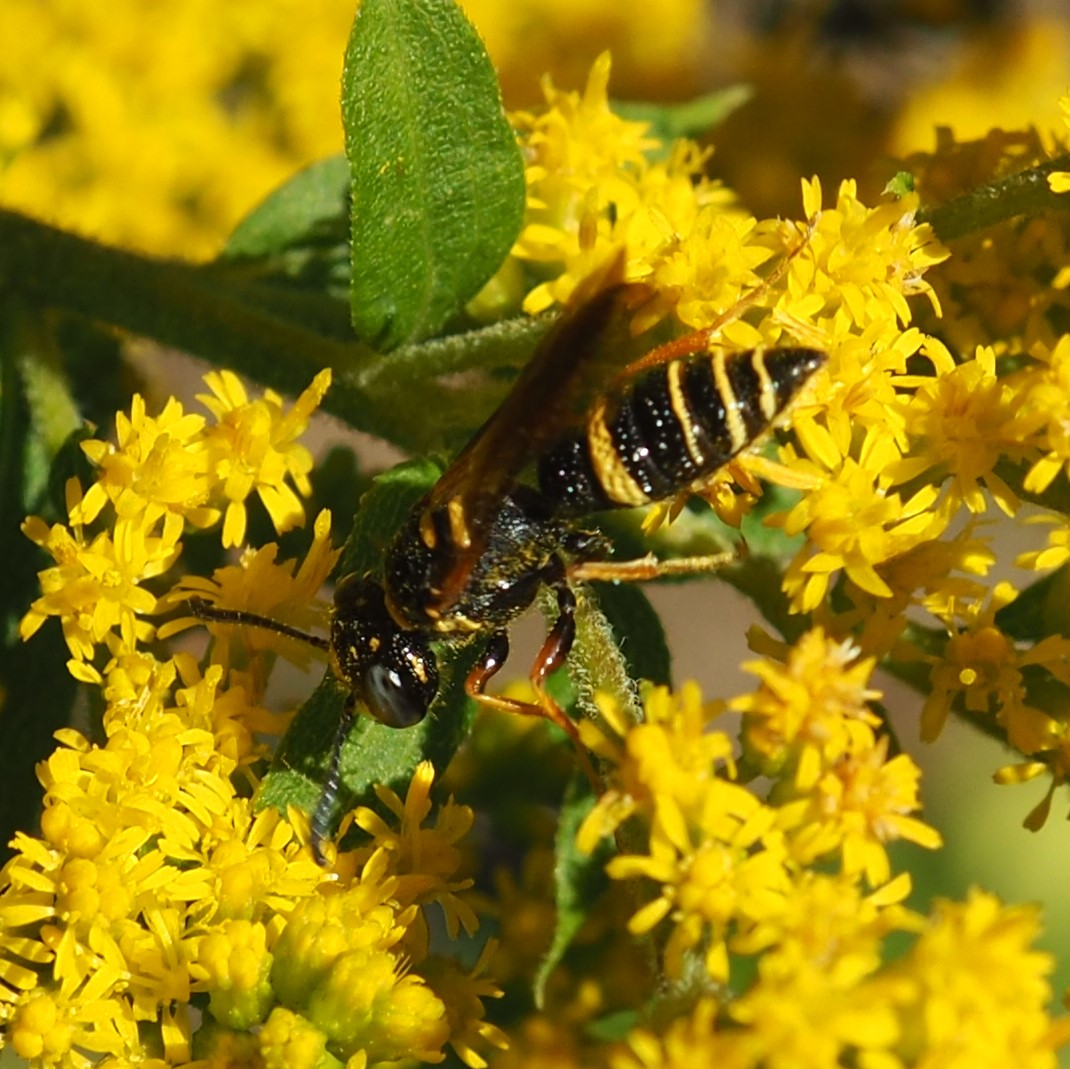

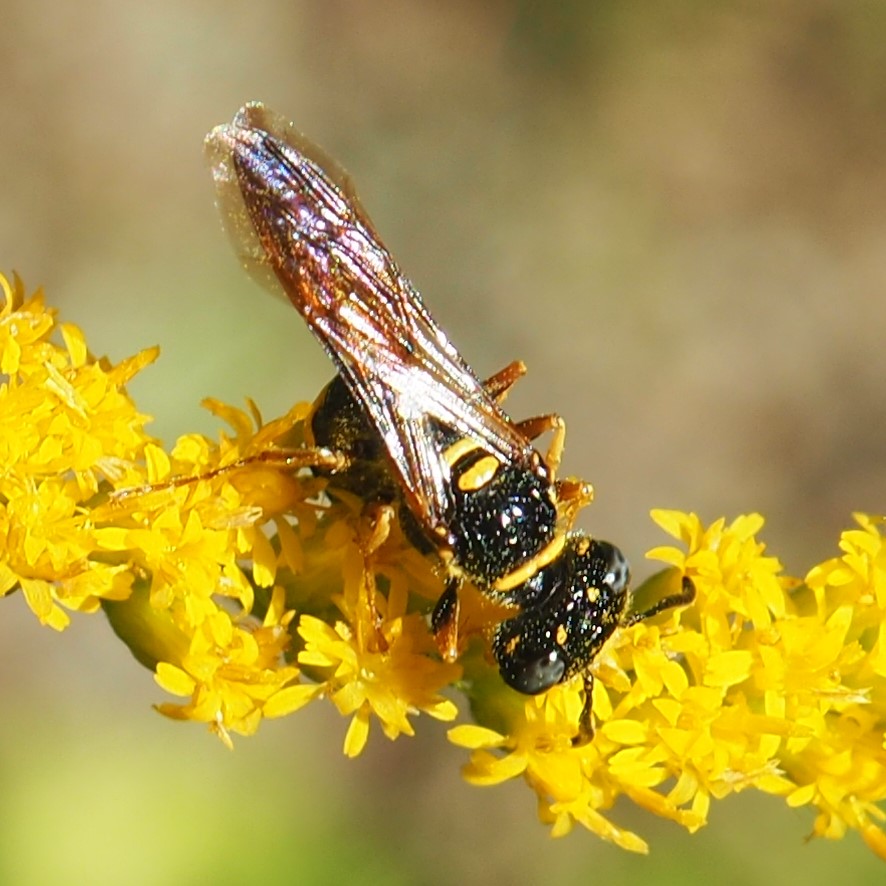
Next is a tiny wasp of the Cerceris genus. Picture 1 shows the face of a female.
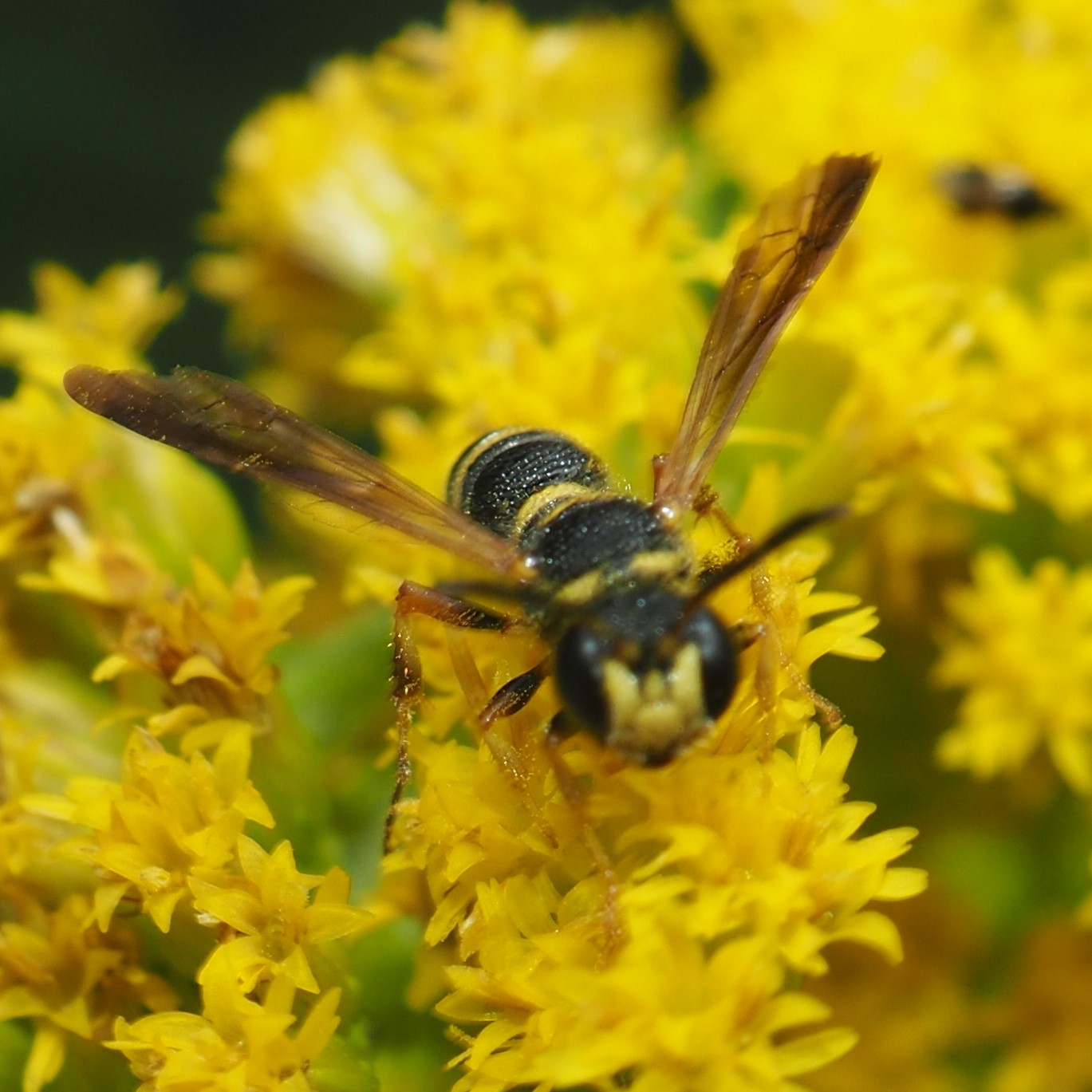
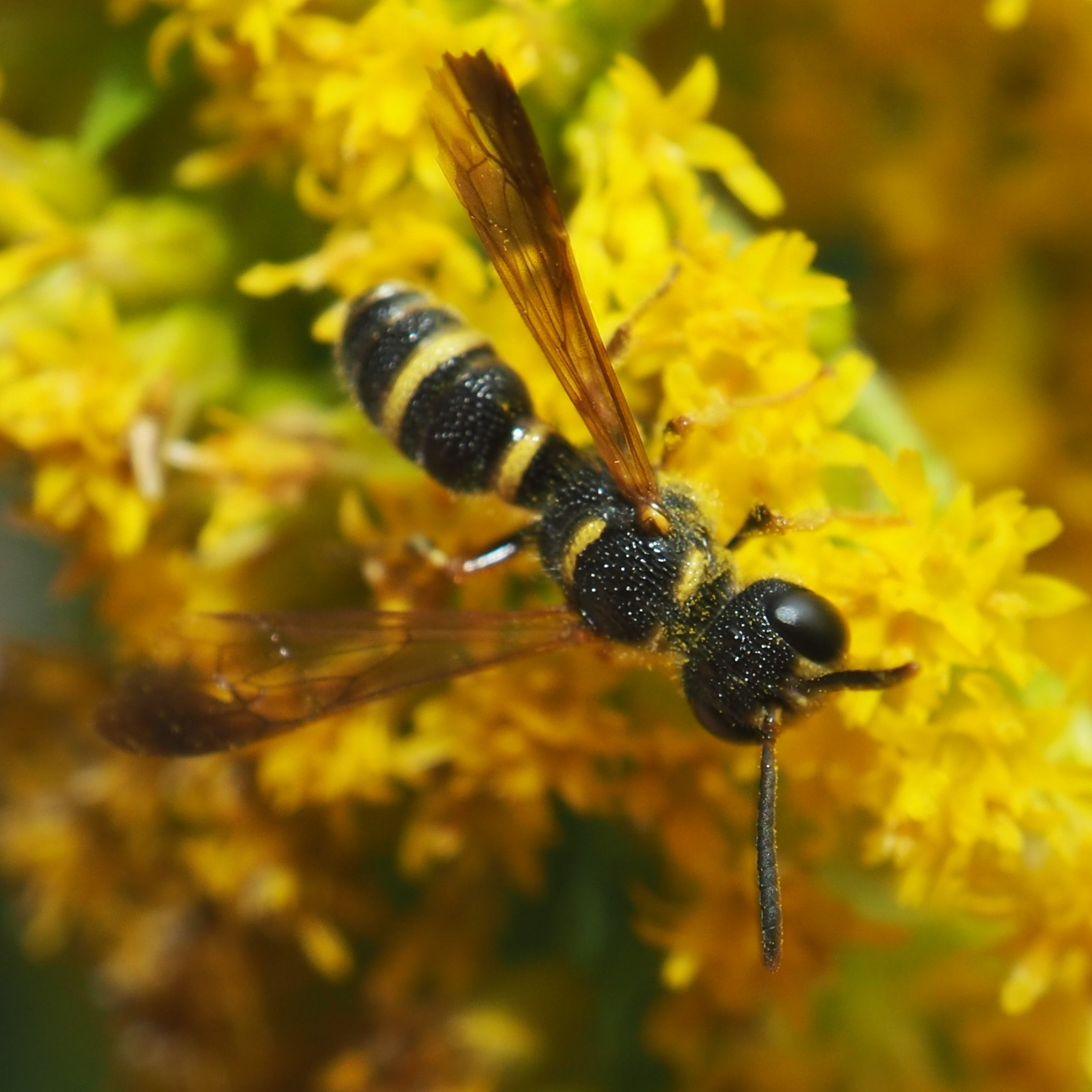
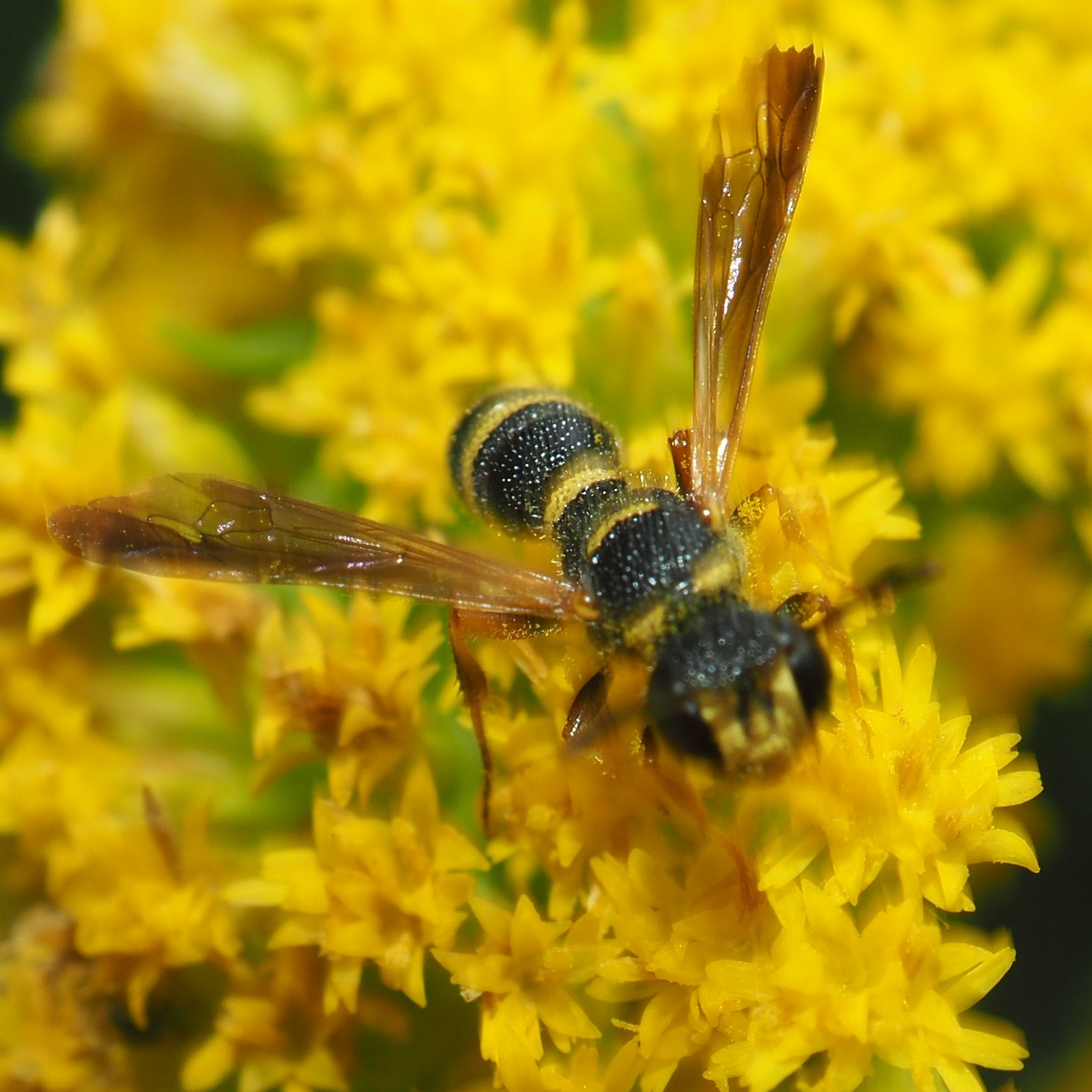
This one may be the same species, but it is another Cerceris. I love those big intelligent-looking eyes!
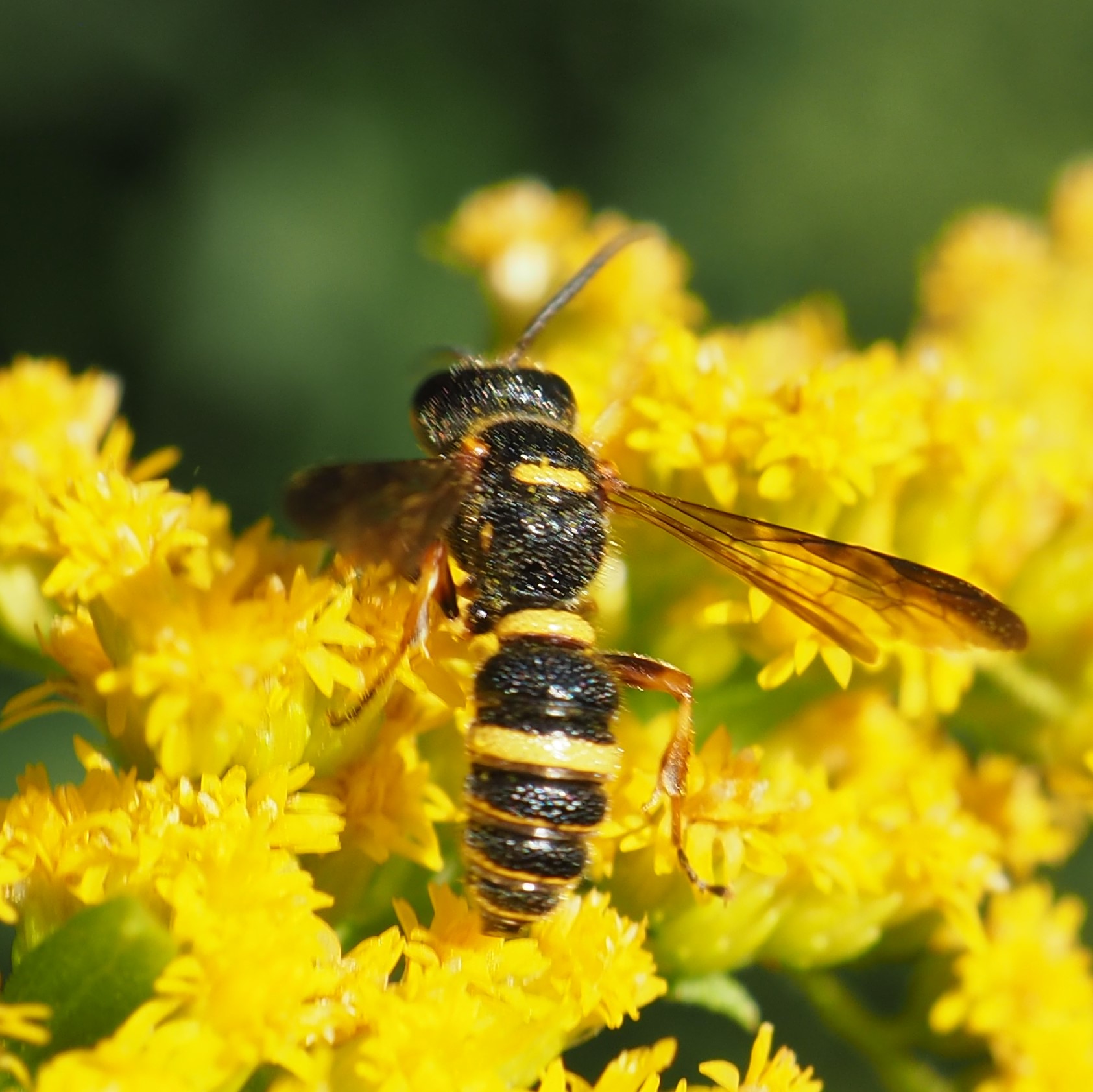
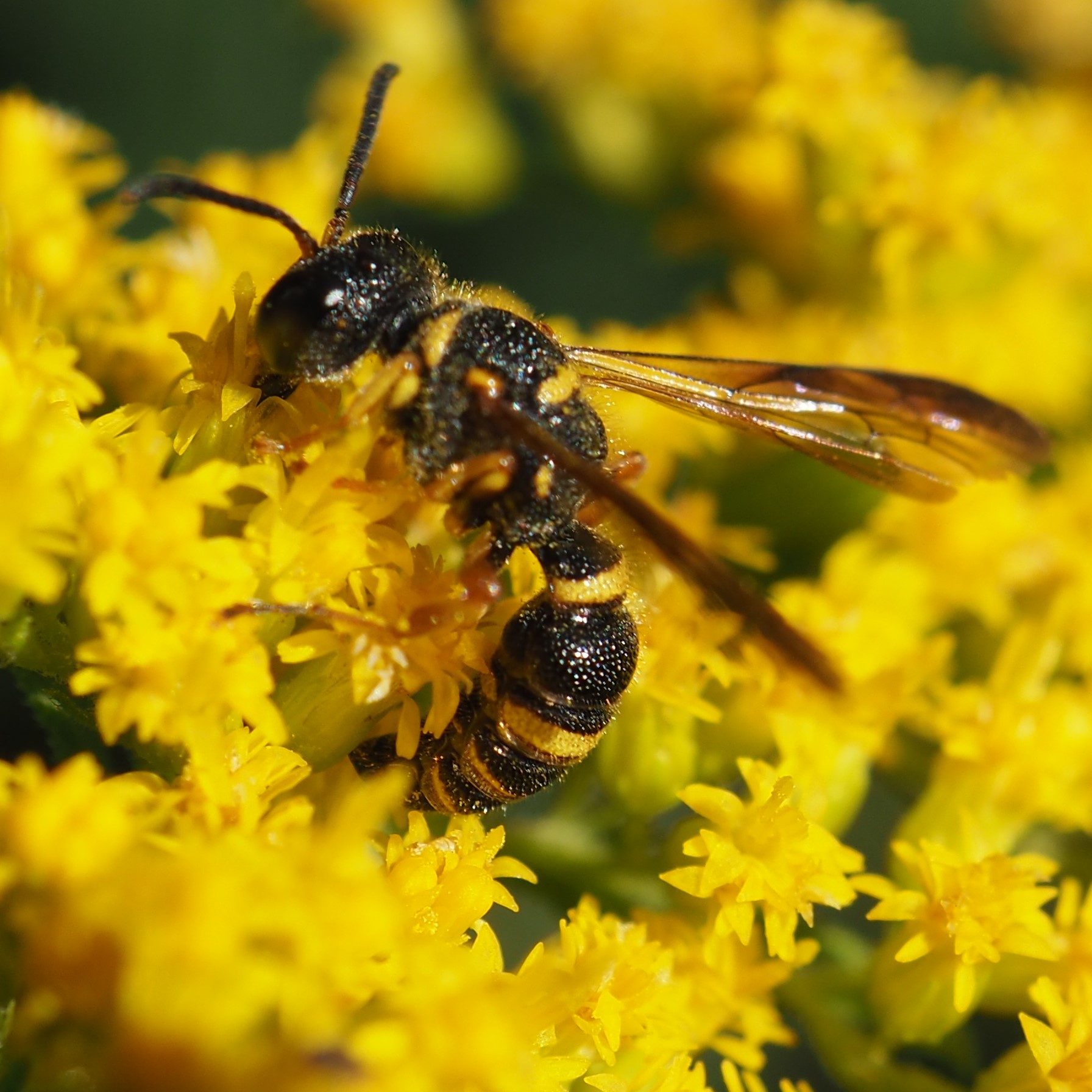
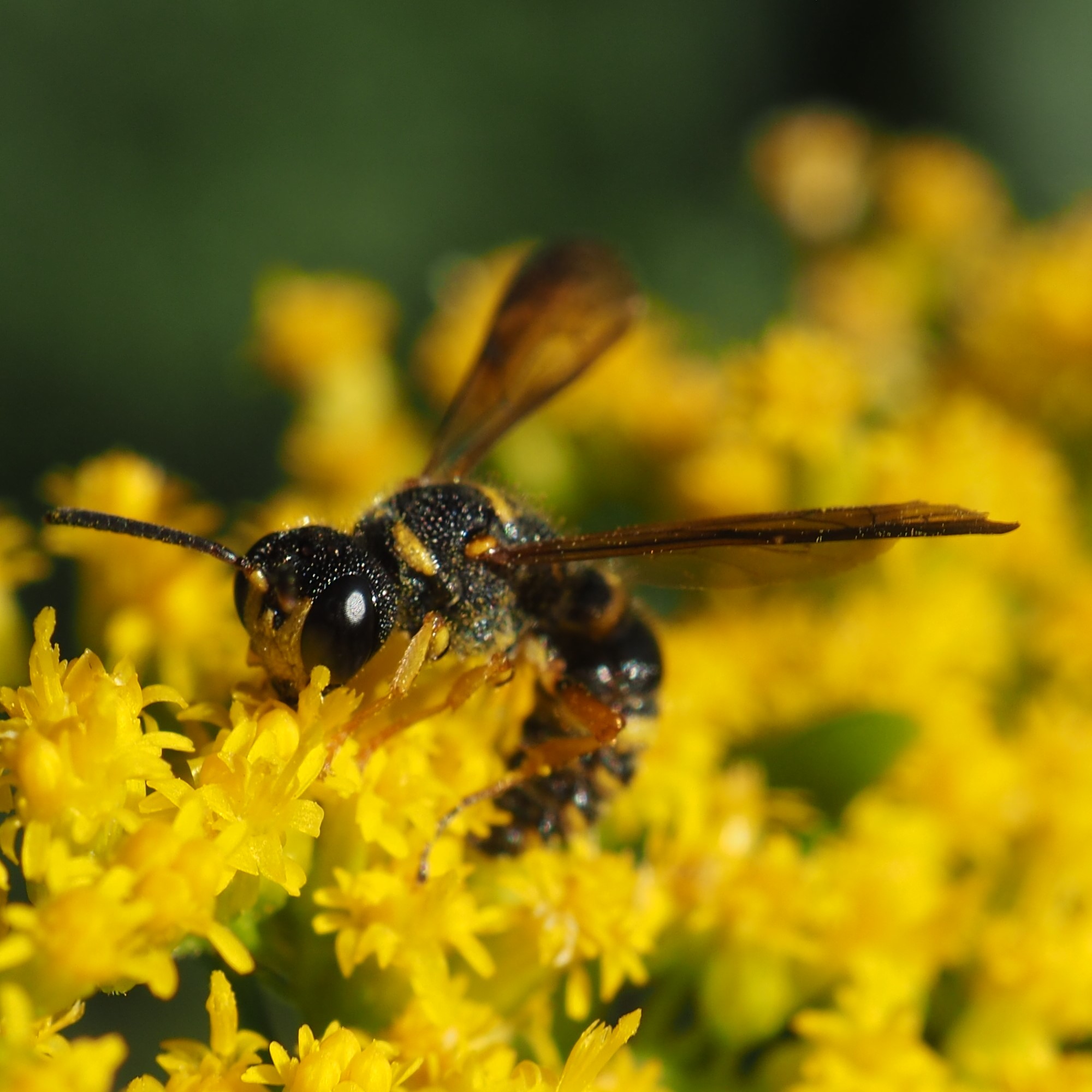
Here is one of the little Potter Wasps, Eumenes fraternus. They are called that because they craft tiny pots to lay their eggs in. Look at all the pollen it's been raising!
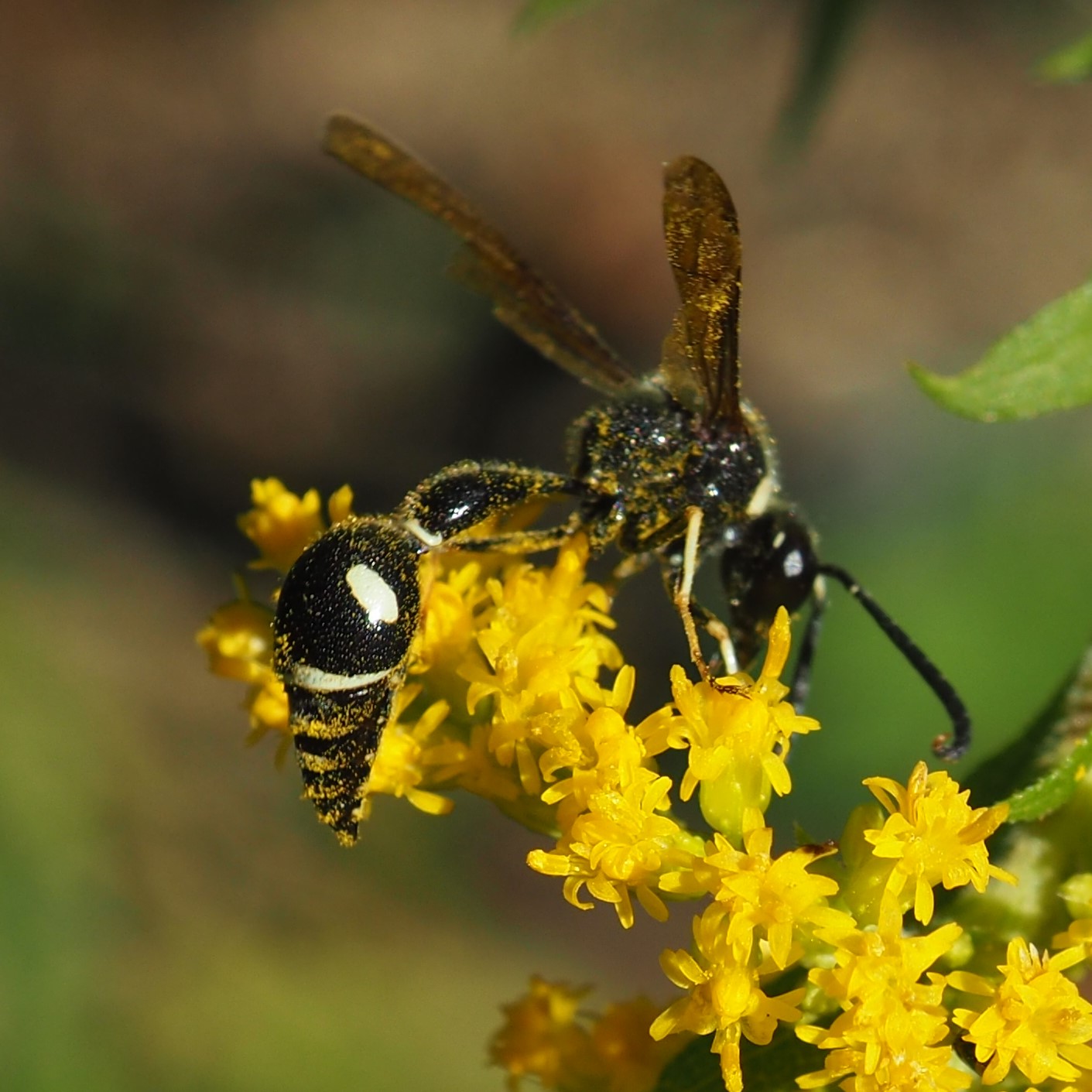
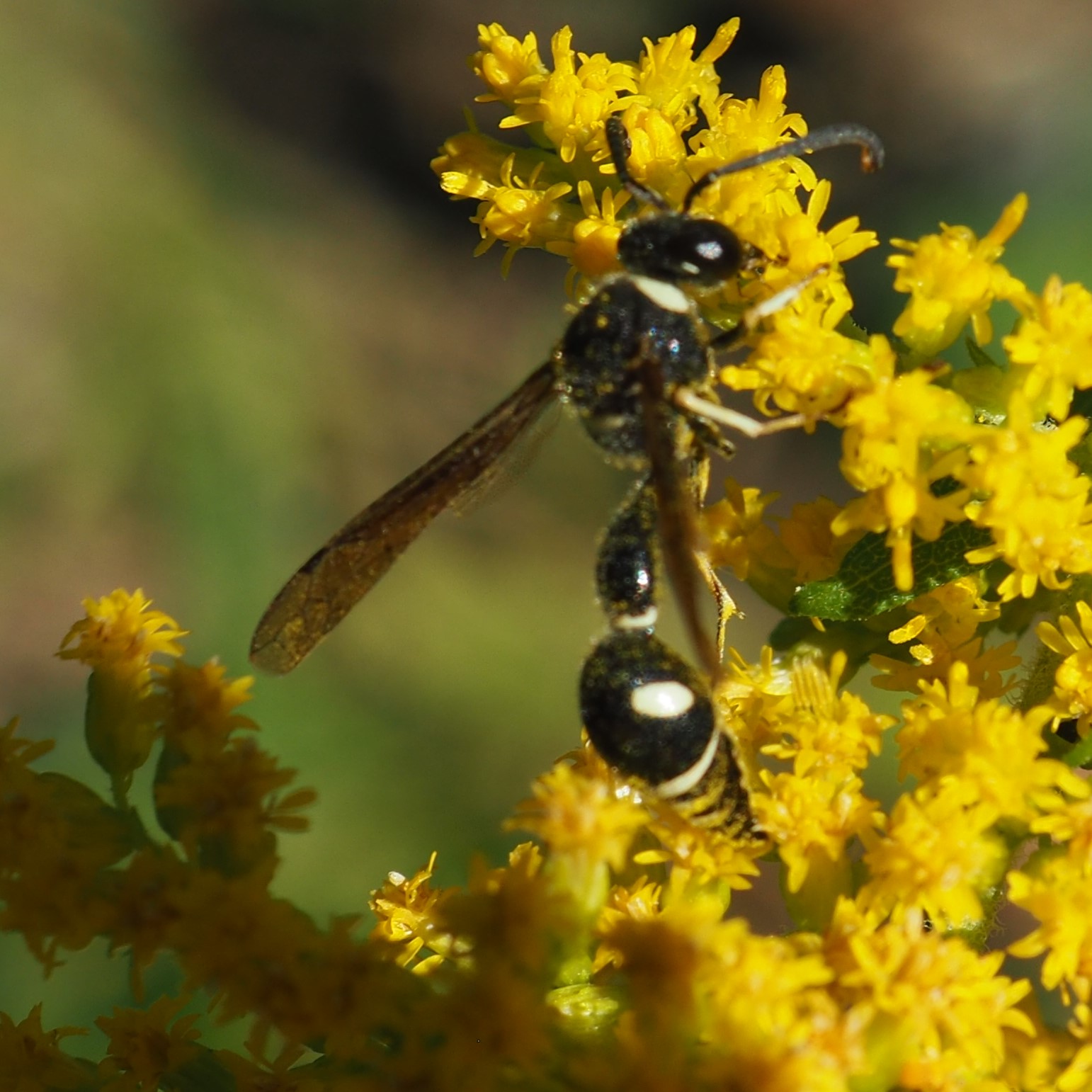
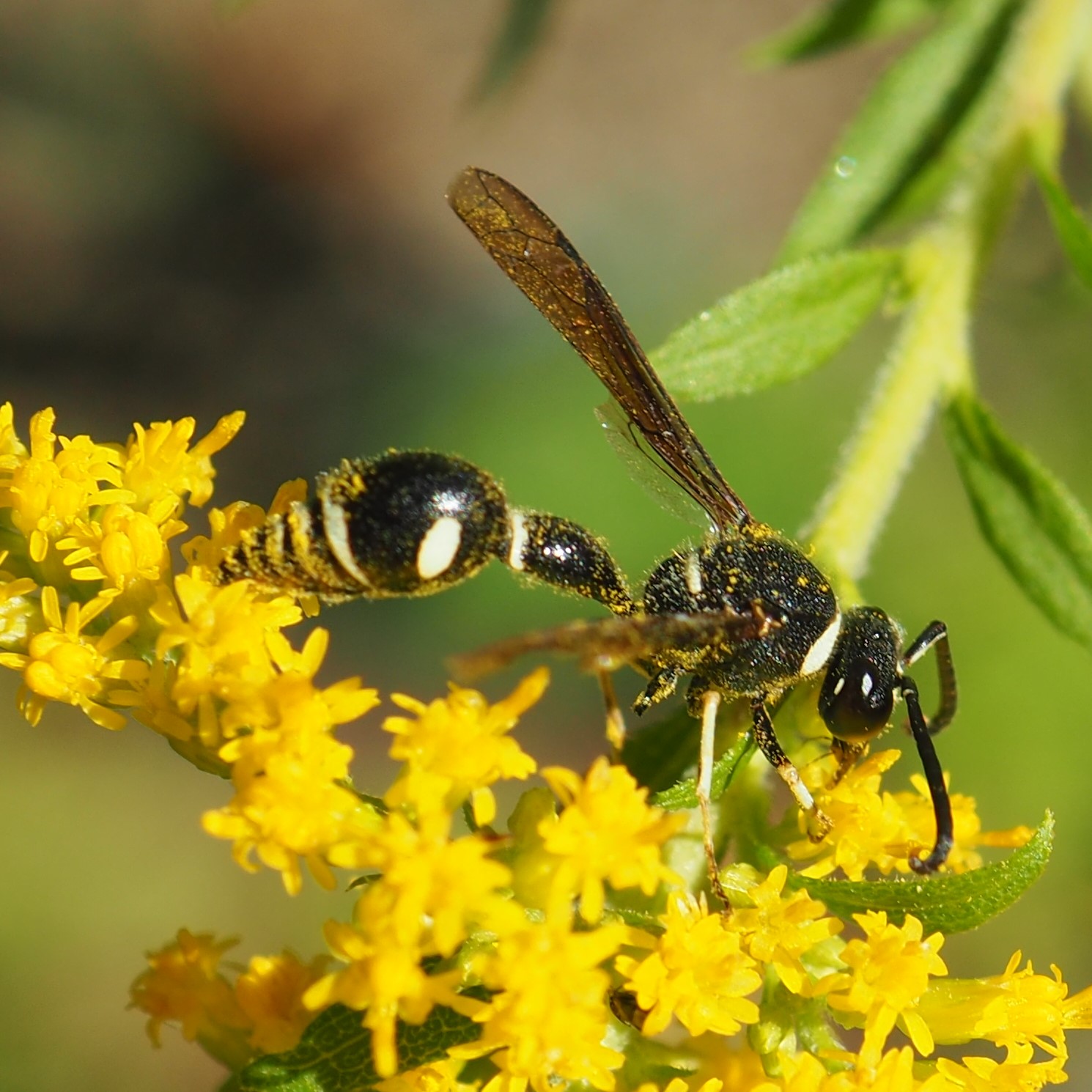
Here's one that even looks tiny when perched on an Aster blossom.
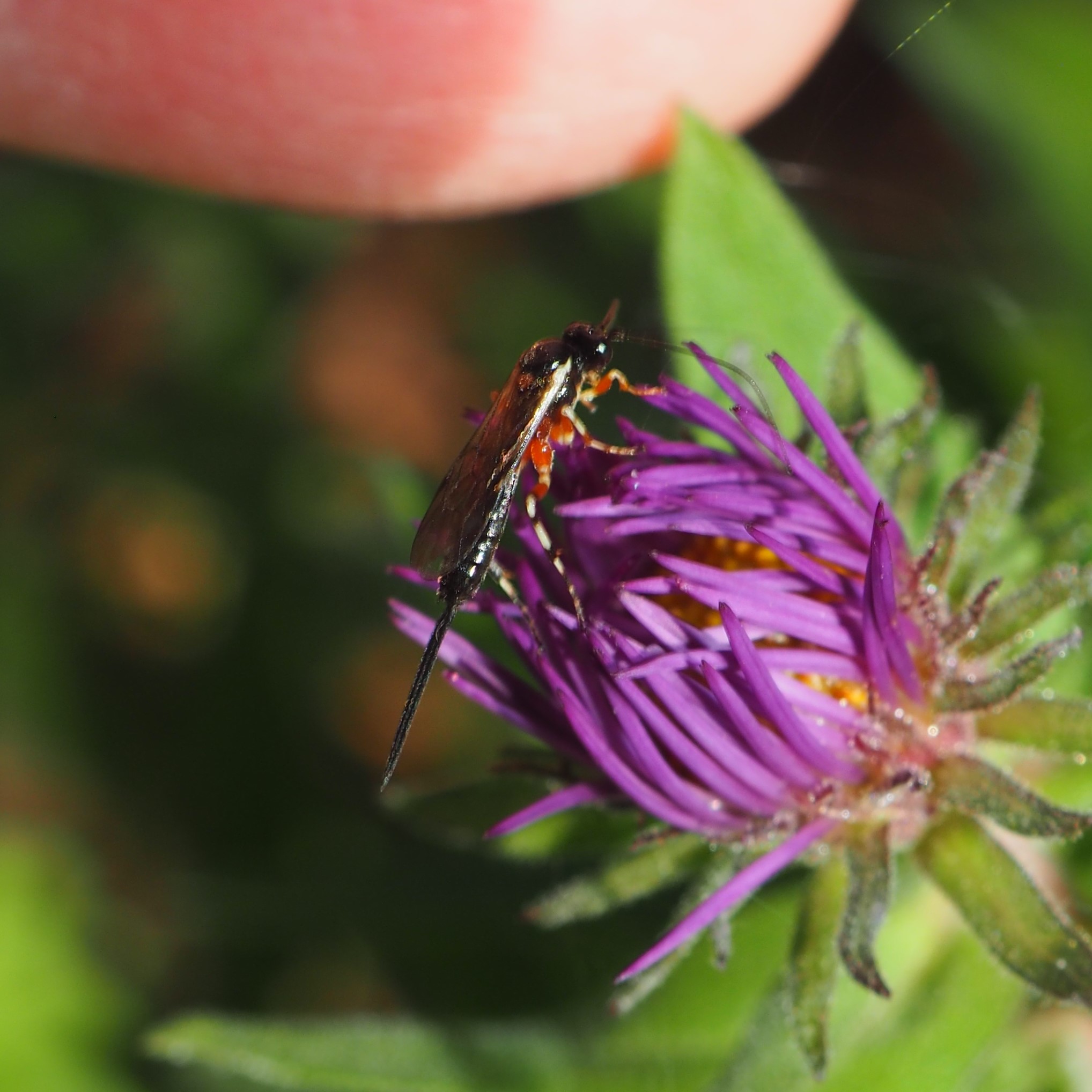
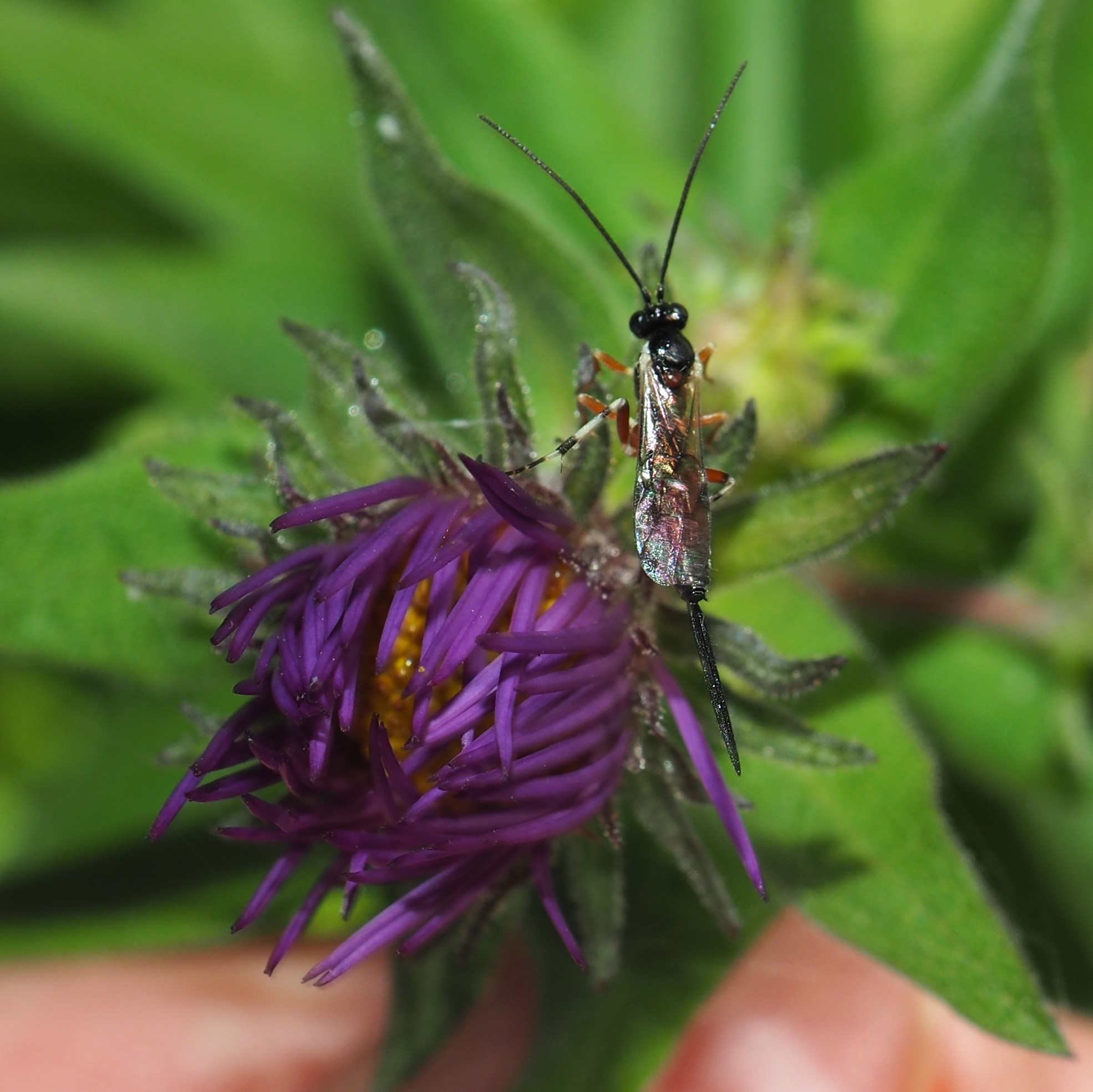
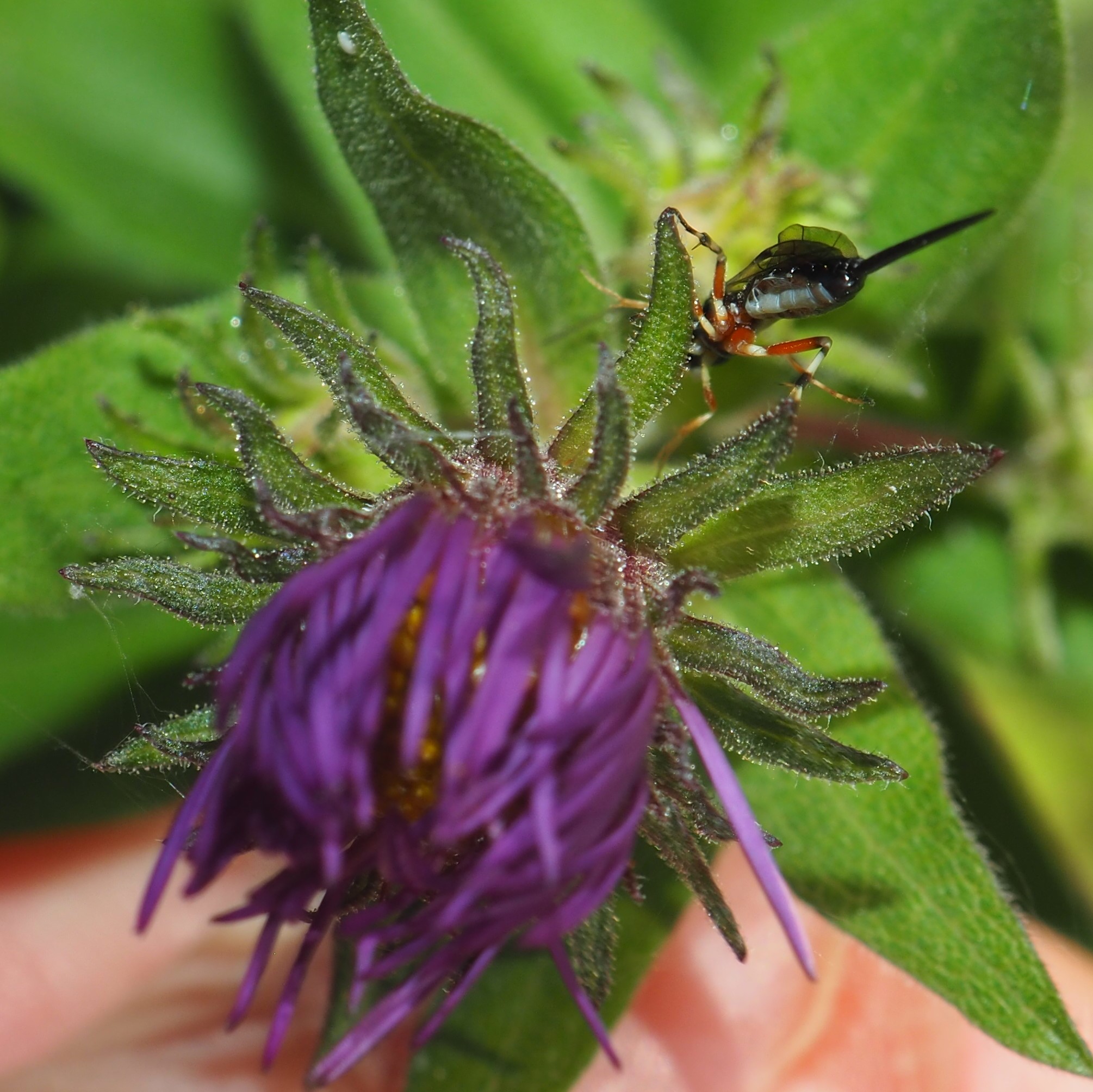
We saw one of these a couple of weeks ago. It's Leucospis affinis, and you can distinguish it by its little sailor suit collar.
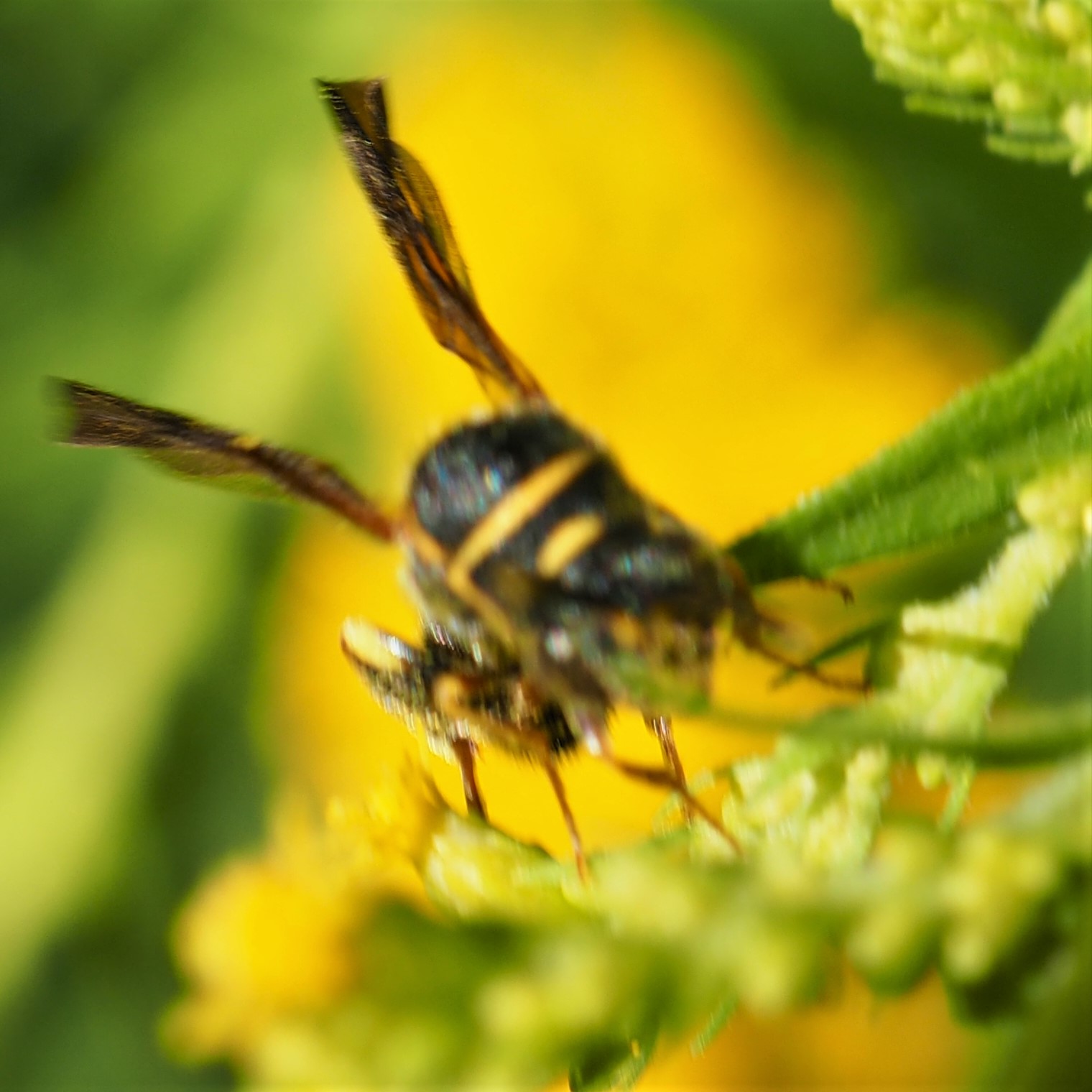
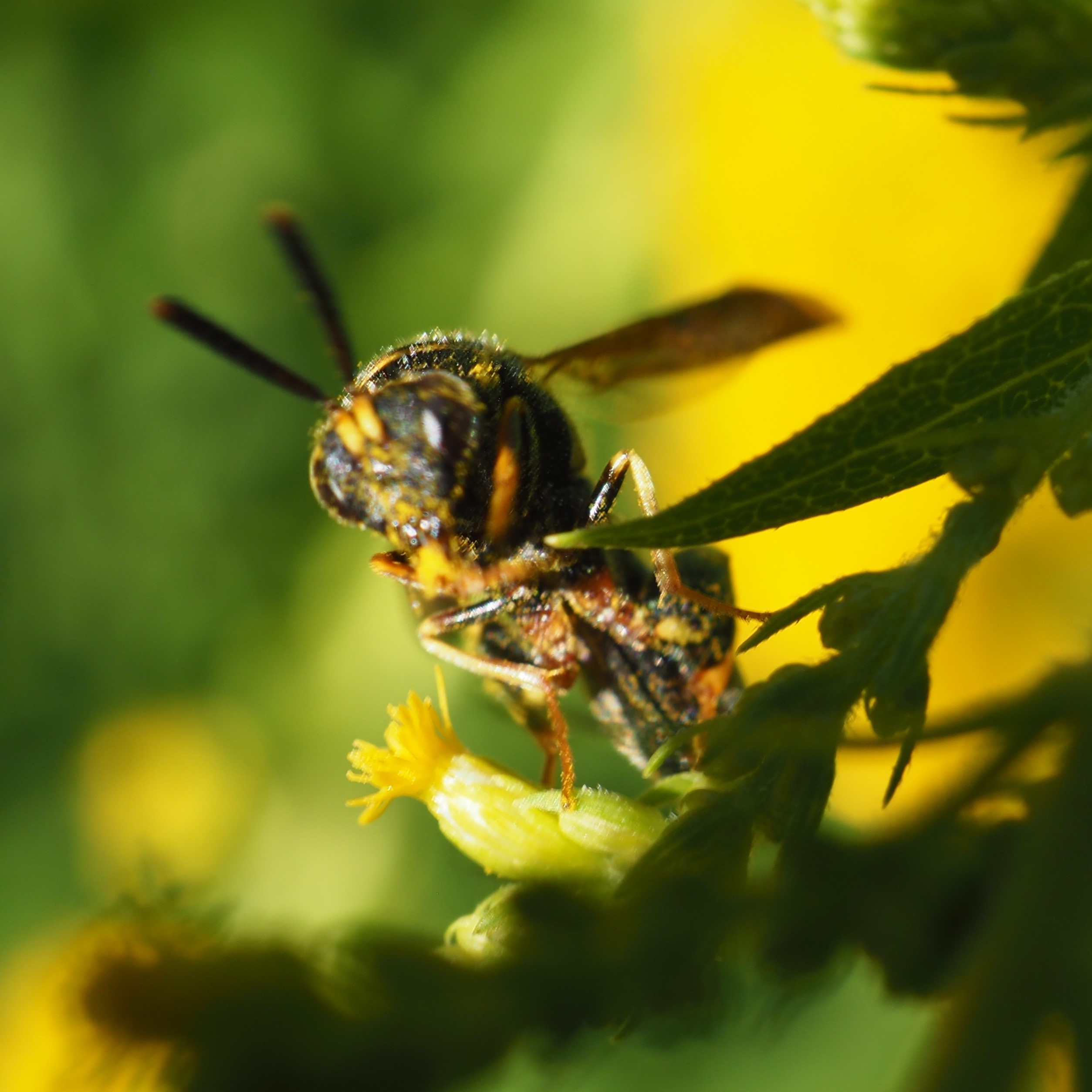
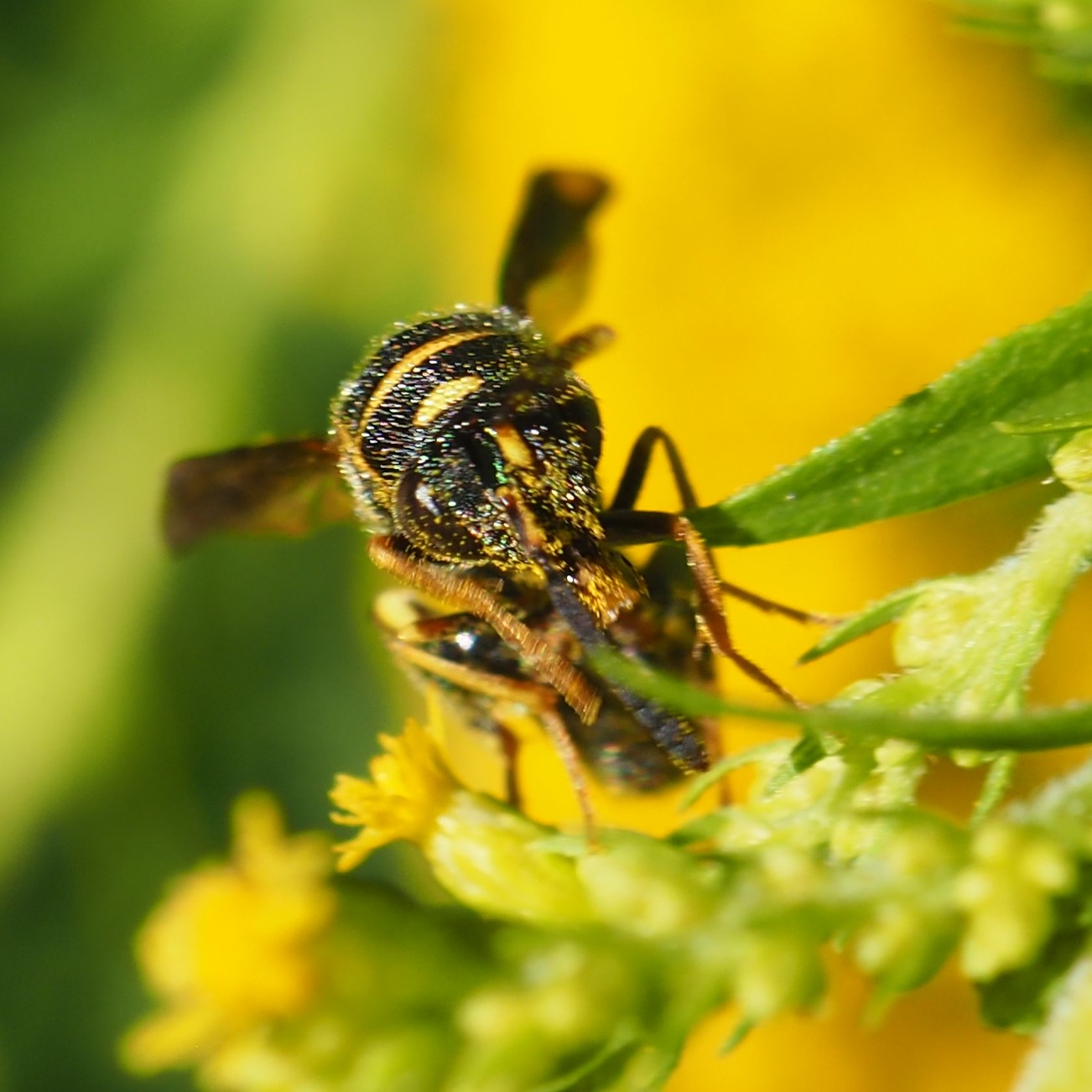
Here's that male European Paper Wasp (two shots) and a male Dark (or Northern) Paper Wasp.

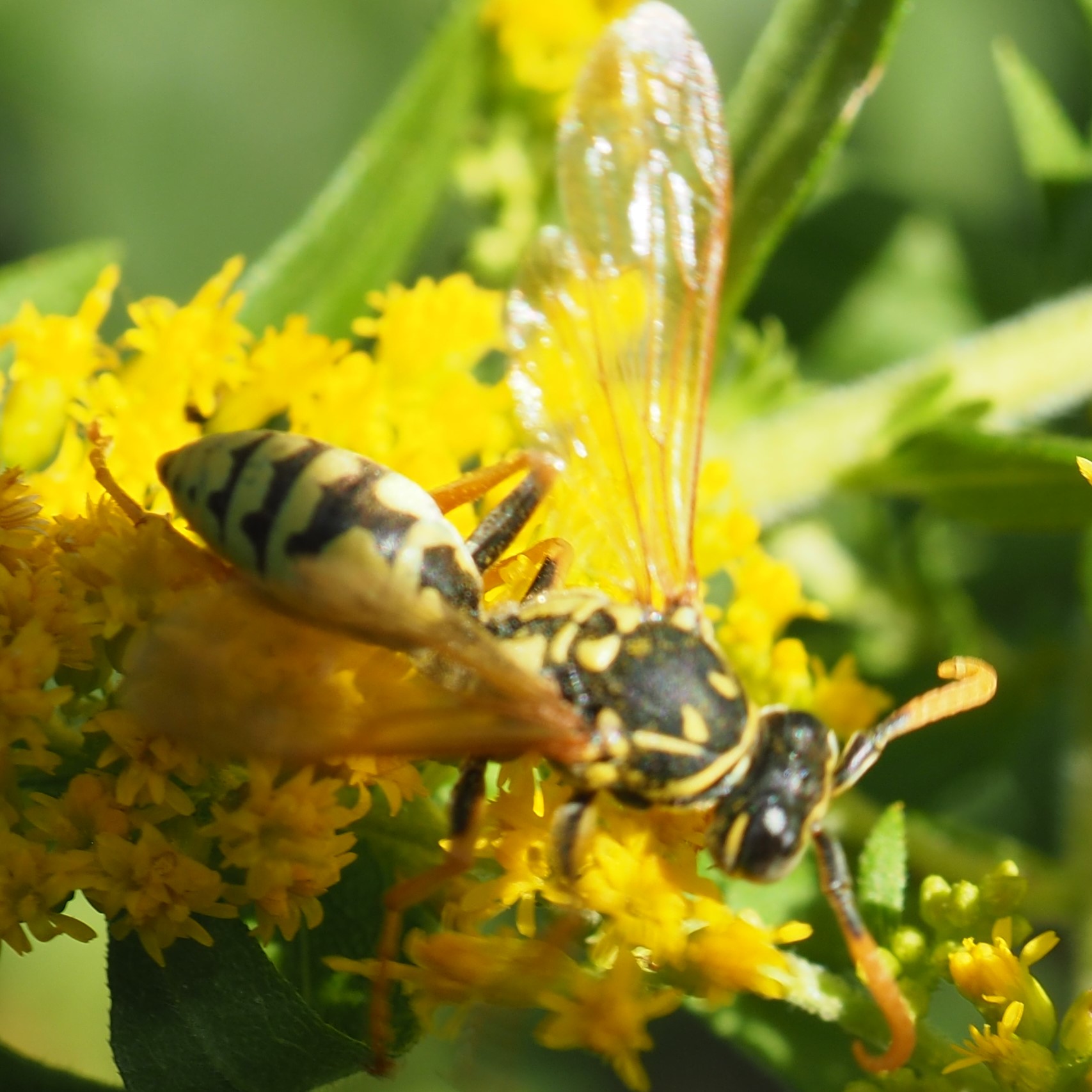
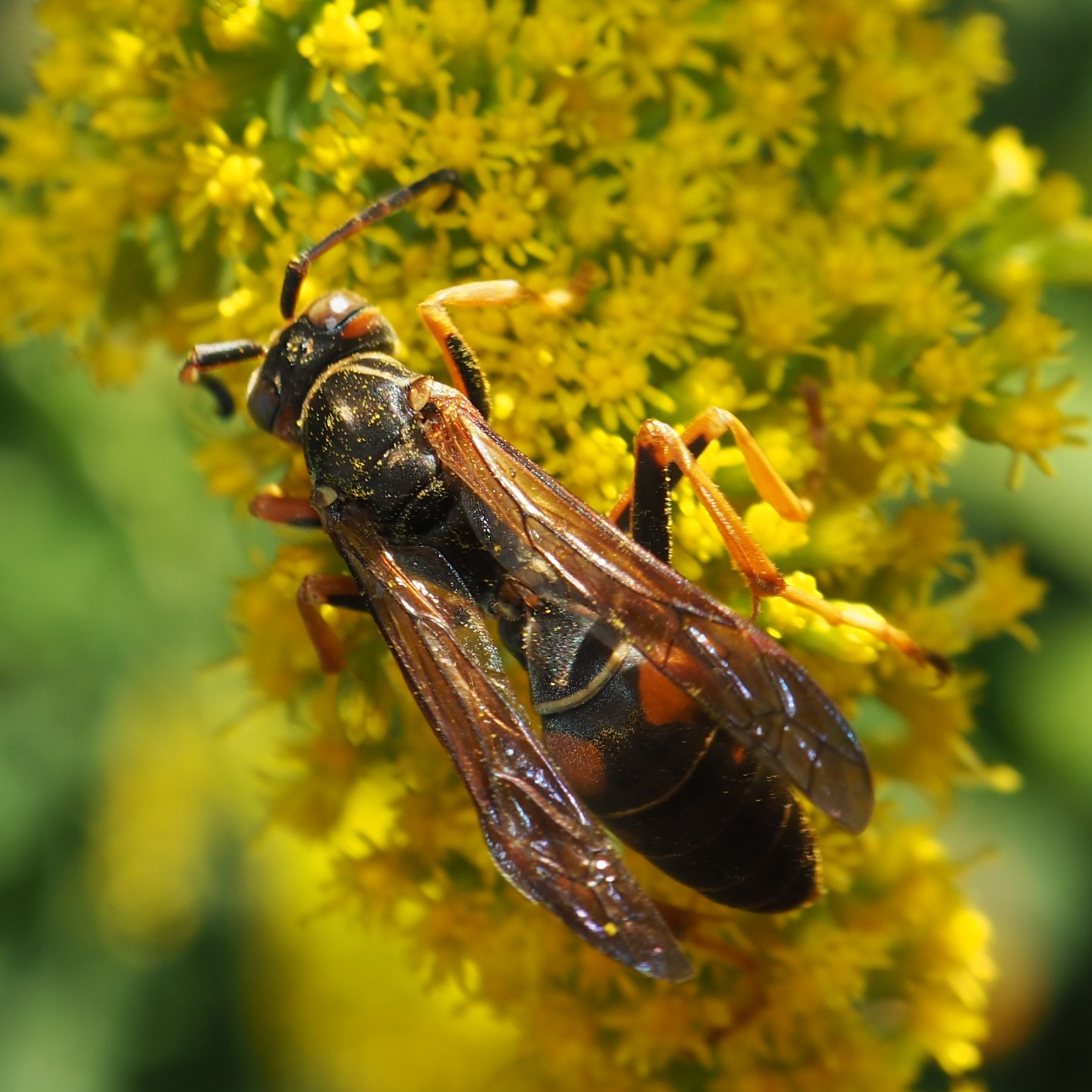
These little threadwaisted wasps that carry their wings at 45 degree angle to their bodies are called Grass-carrying Wasps. I mentioned to one of the Wasp experts who identified this genus that it seemed it should have been called a Pollen-carrying Wasp. He wrote back sadly that it is after all a pollinator, only the Bees get all the praise for that. Next is another kind. Third is another tiny one, Ancistrocerus campestris. Several of this genus have the little happy-face on their backs, but I believe this is A. campestris.
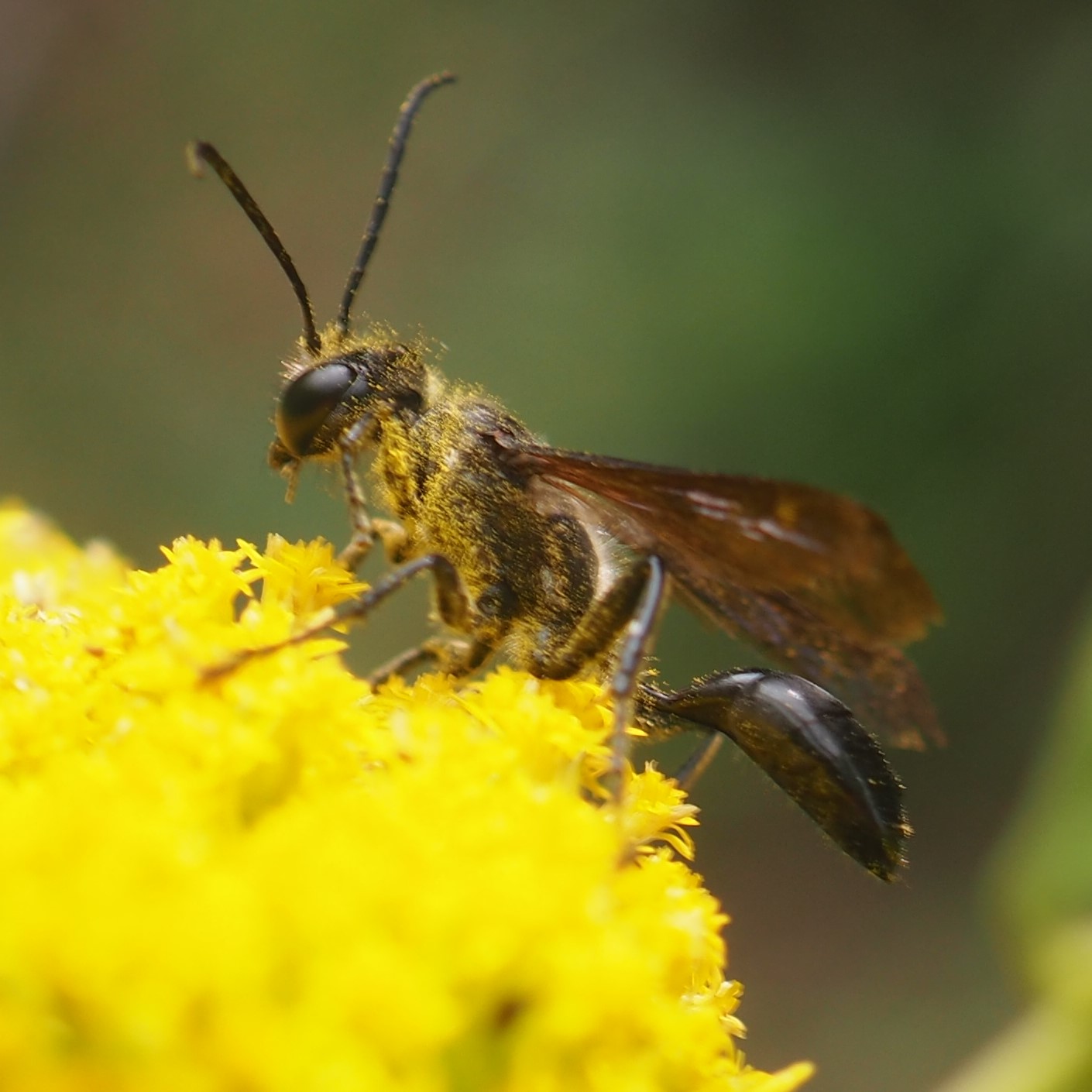
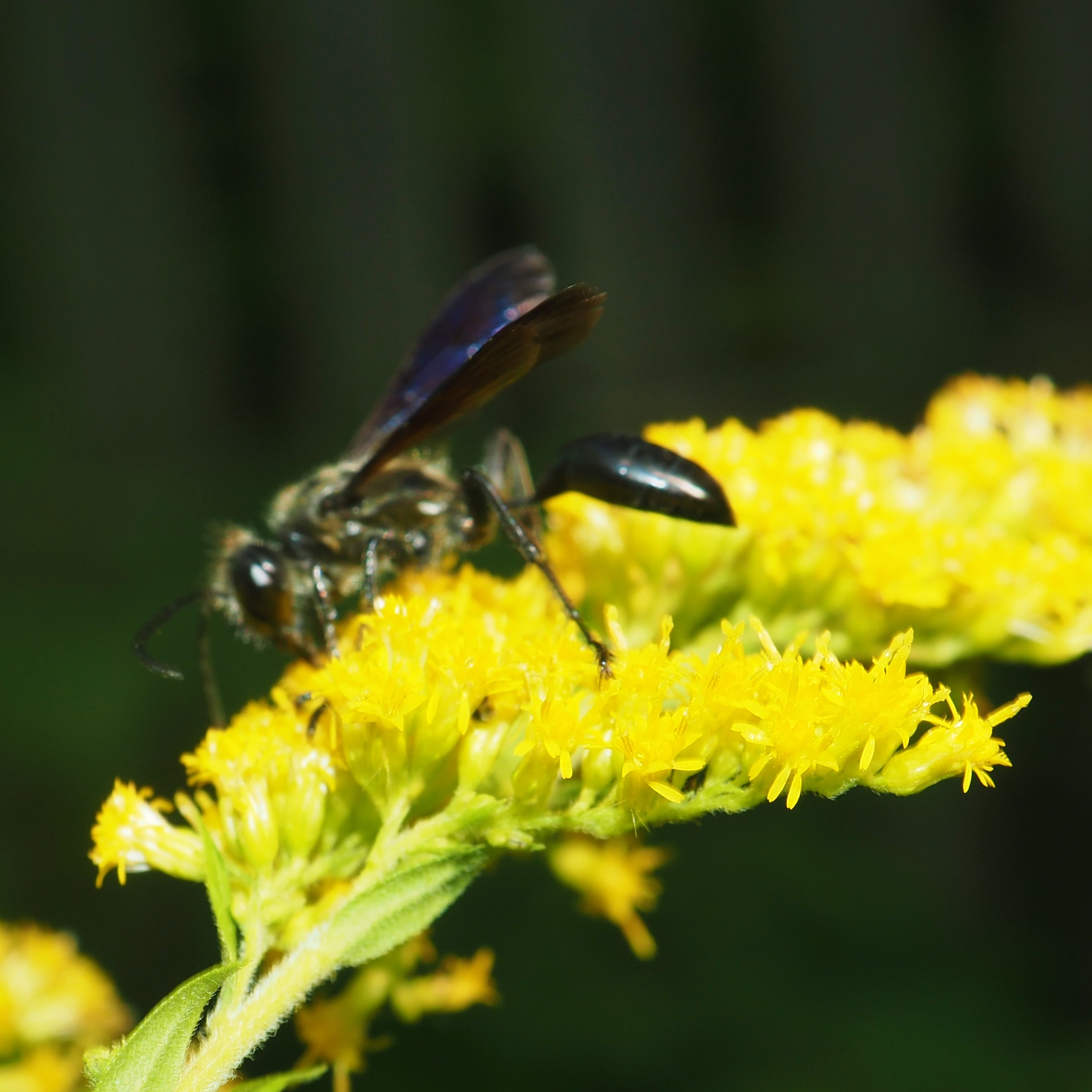
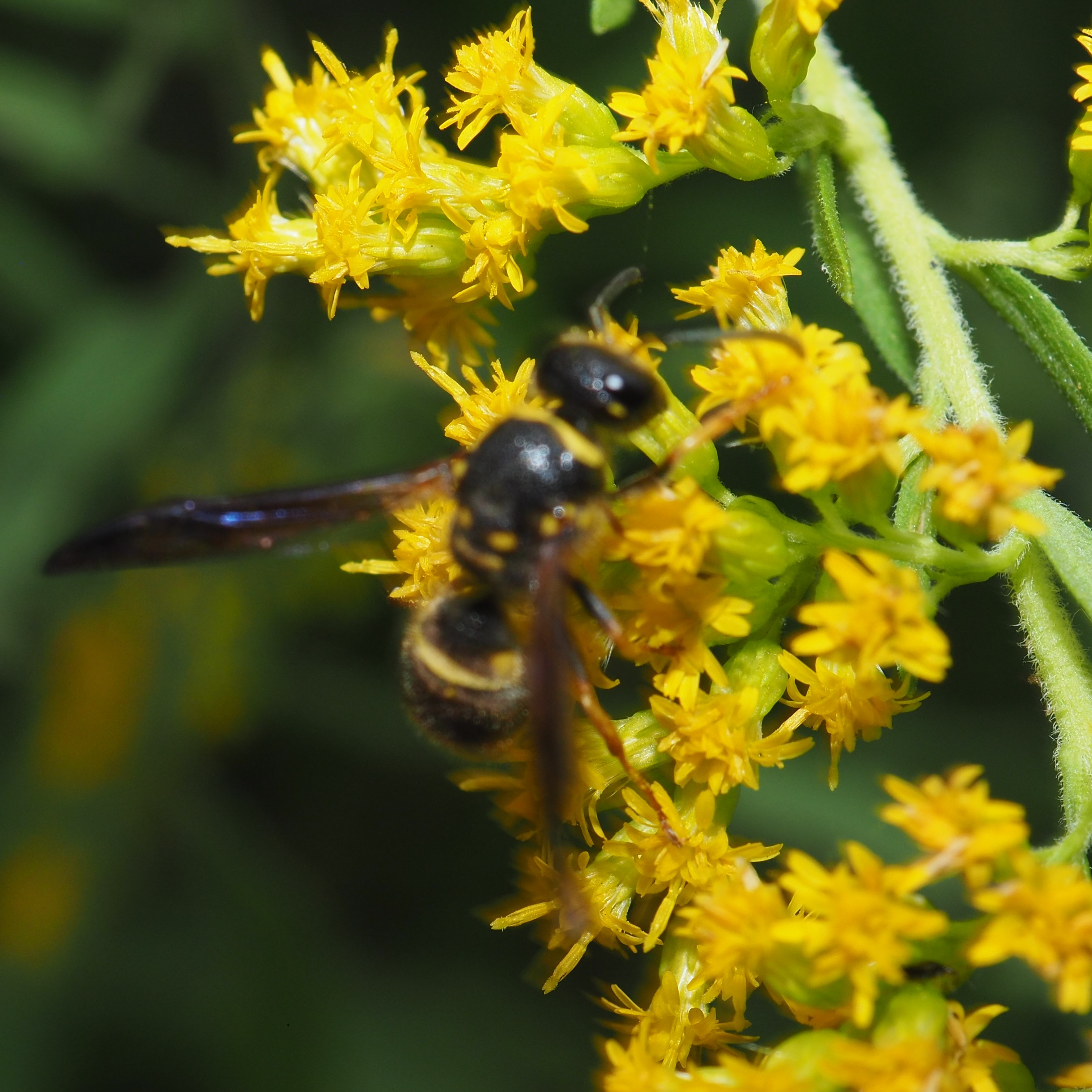
One last shot of the Pond with Water Lilies and Purple Asters. If you think this picture has been recycled, I admit it. I used it last week too! Here, I'll make it up to you with a morphing.
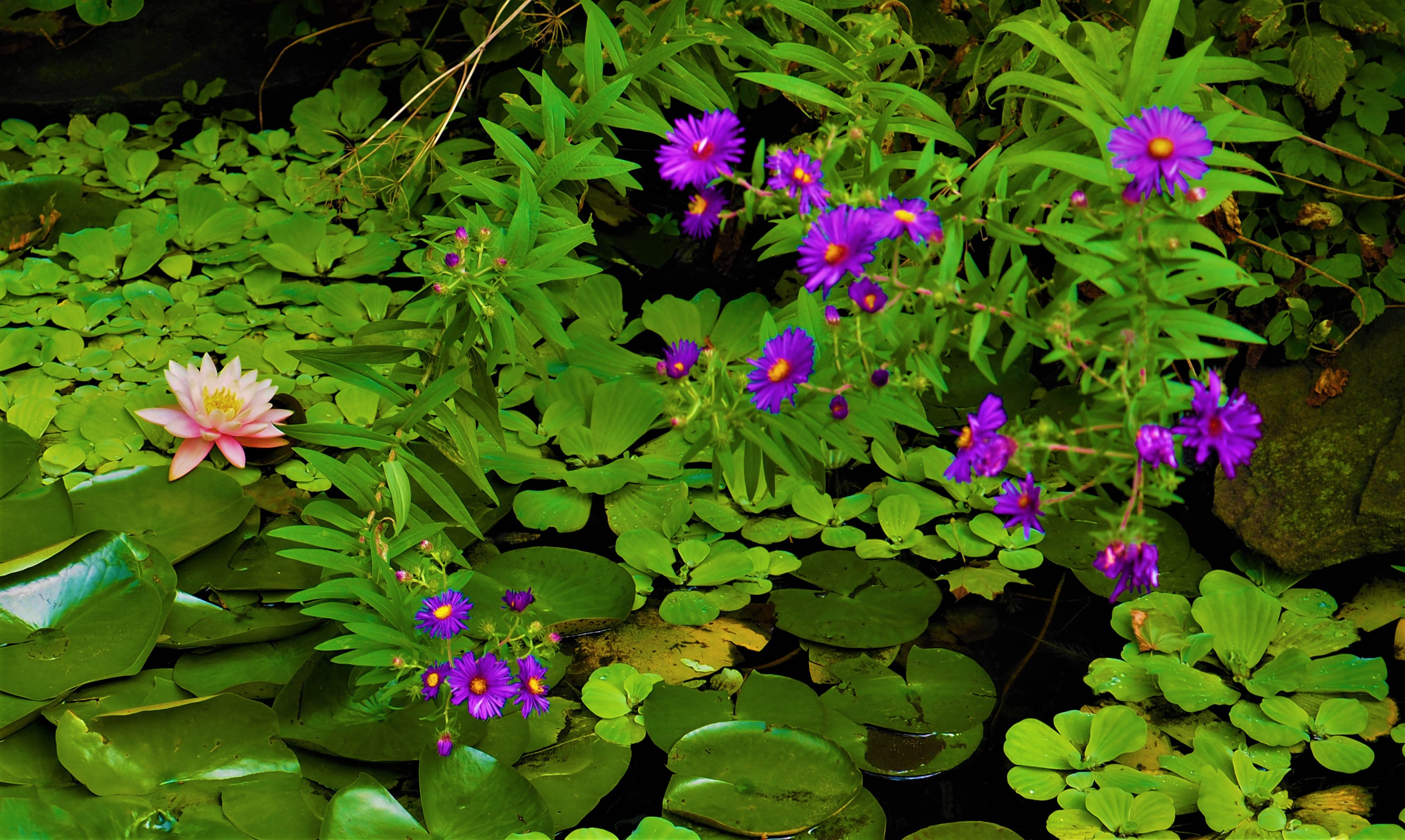


Well, another week gone by. Summer has come to an end or will in a few hours. Even though life has been slow, at this moment it seems to have raced by. There has certainly been enough to do to keep me busy, even if only watching Lilliputian Barklice, one panel at a time. They remind me of the Borrowers, the little people who live under the floorboards and are happy to collect and put to use the things that seem to disappear, like a single sock or a paper clip or one bead from a broken necklace. I hope you have all been happy and well, with as much beauty as you can stand.
Love, Martha
Back to September 13, 2020
Forward to September 27, 2020
Back to main menu
copyright Martha O'Kennon 2020









































































 i
i







































